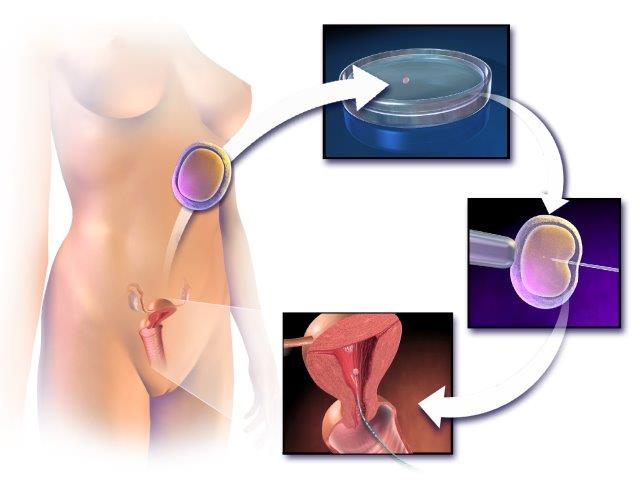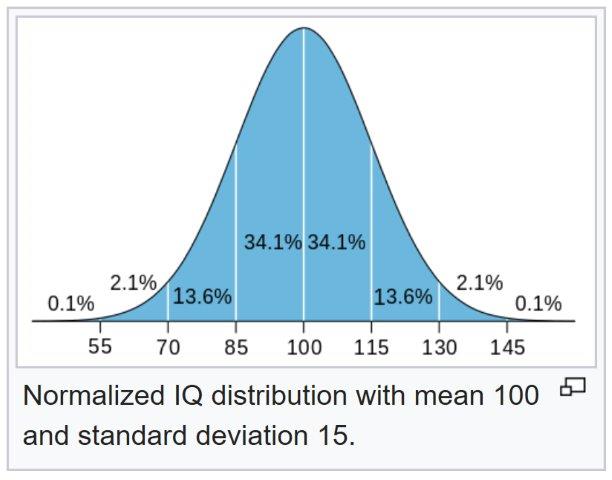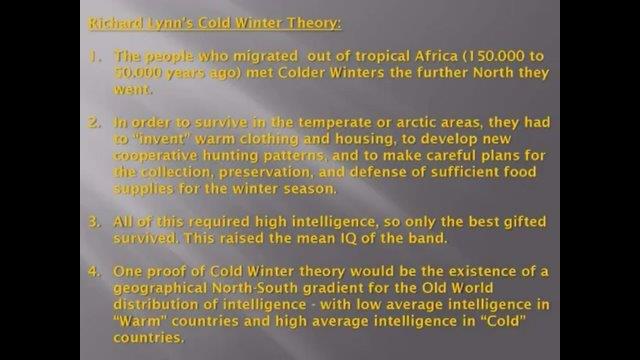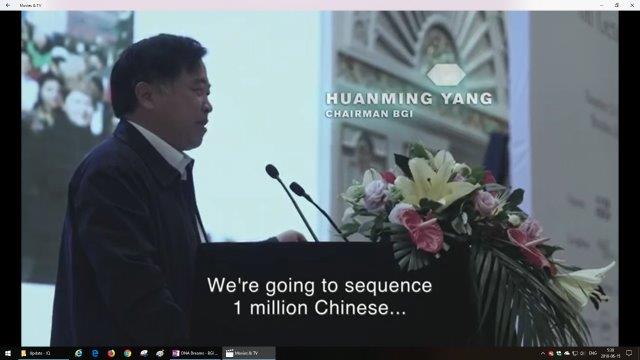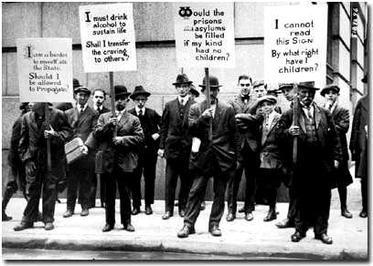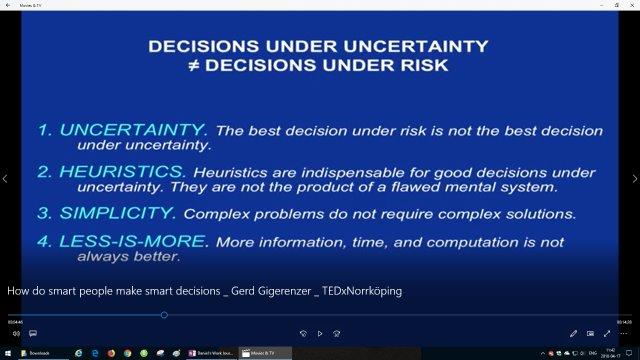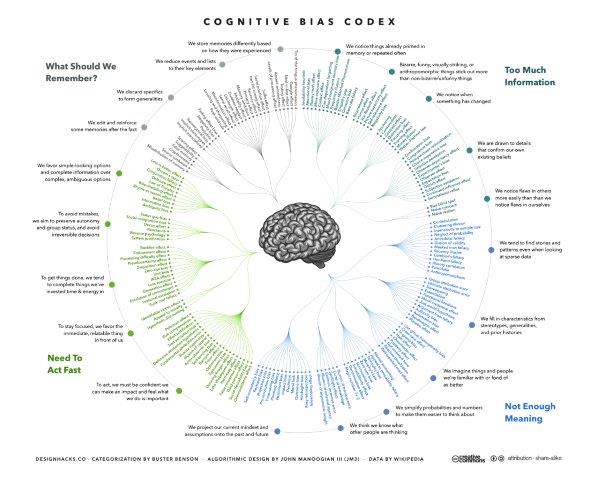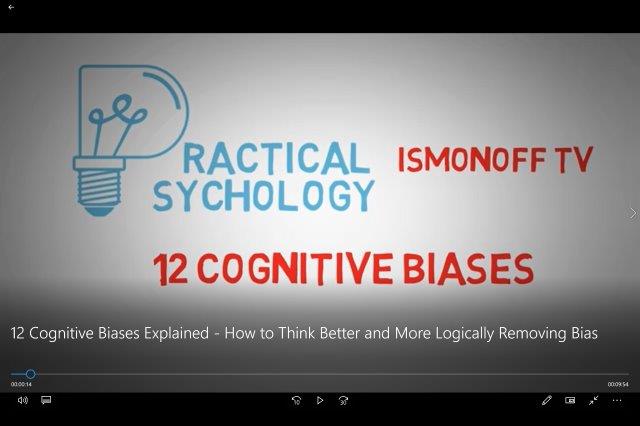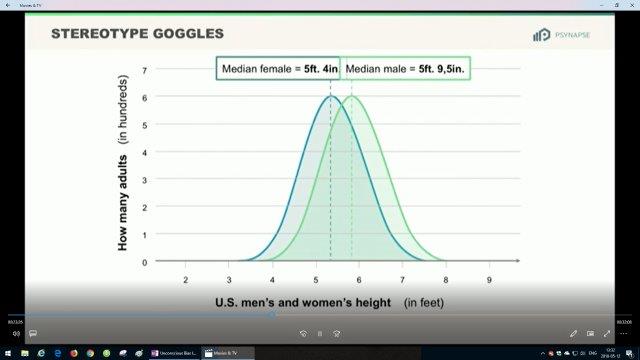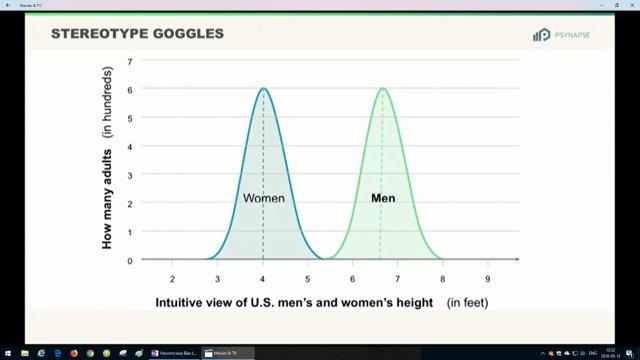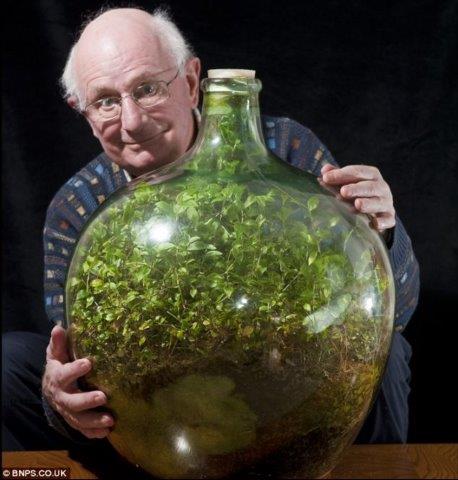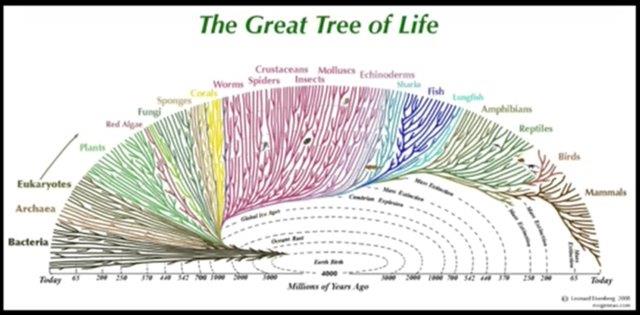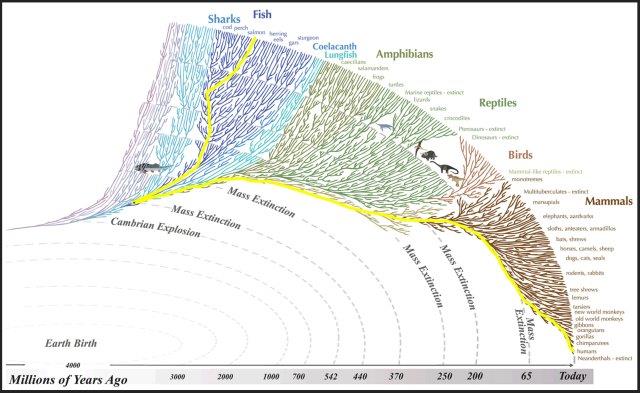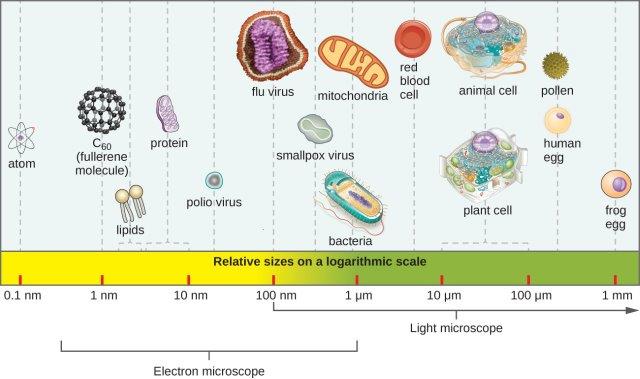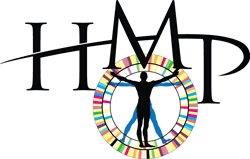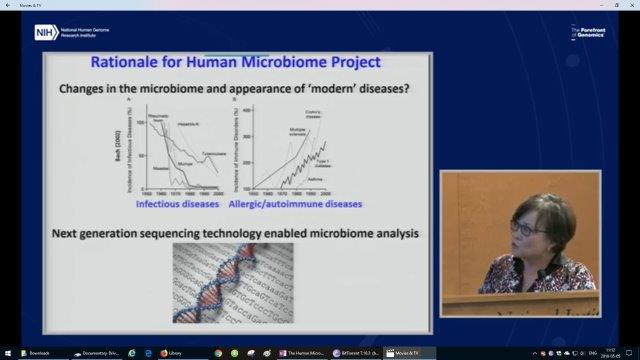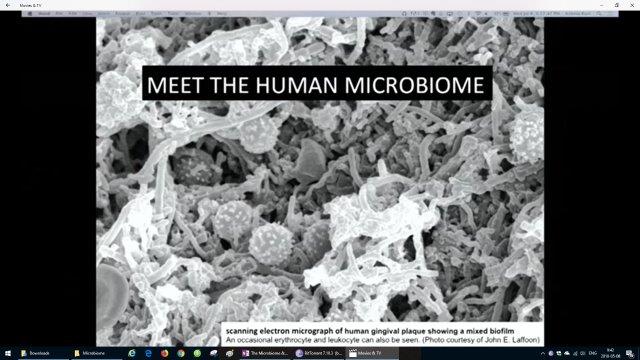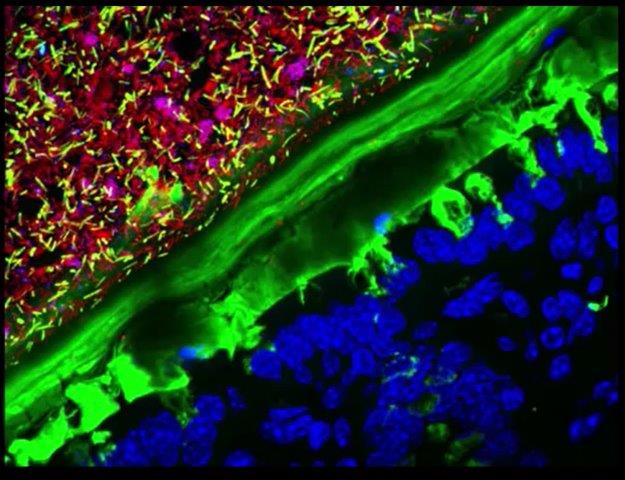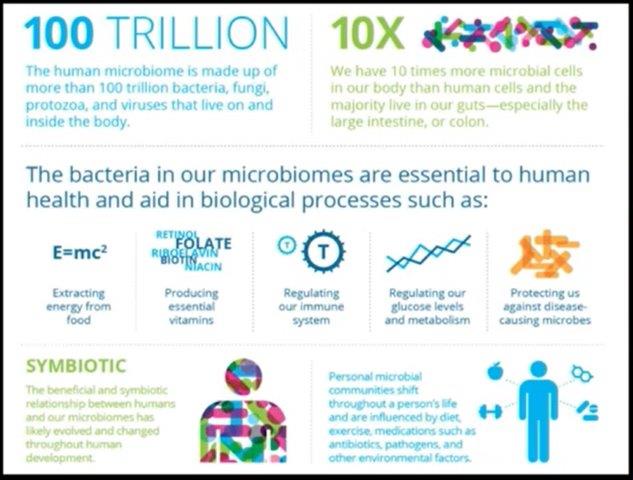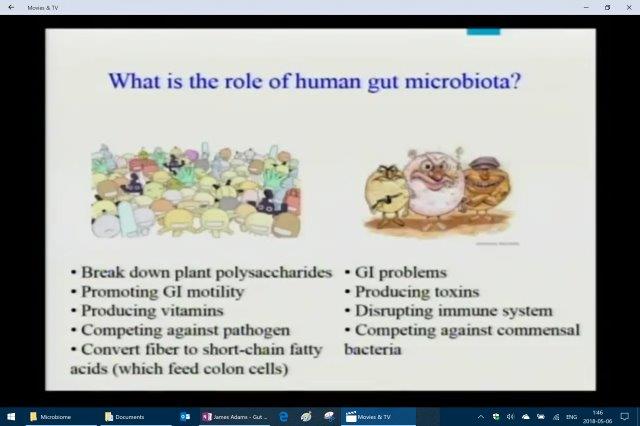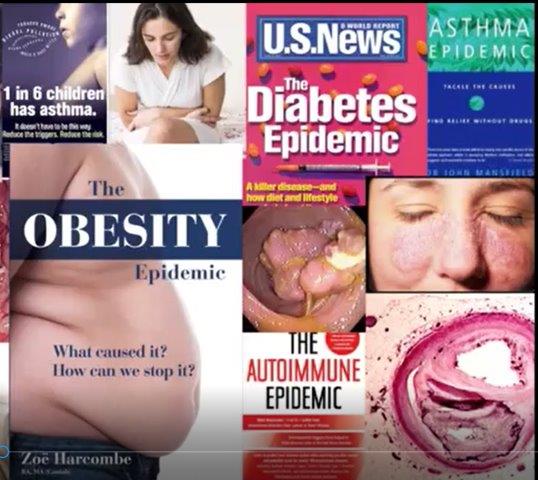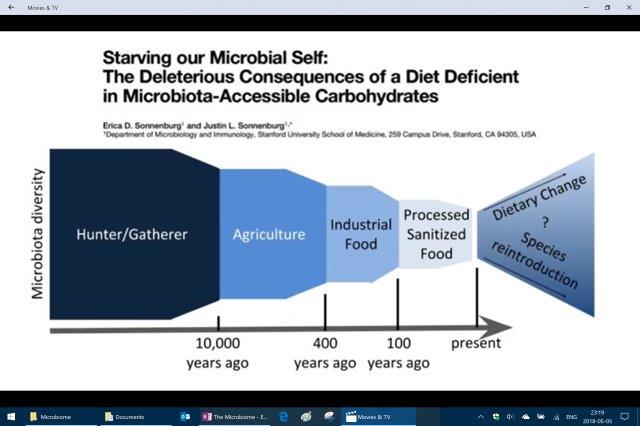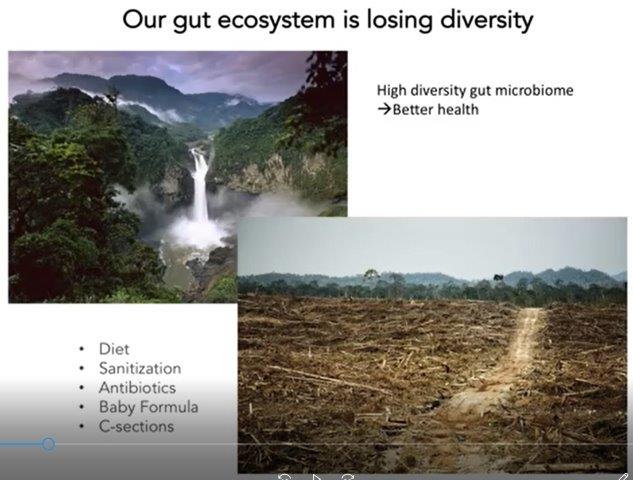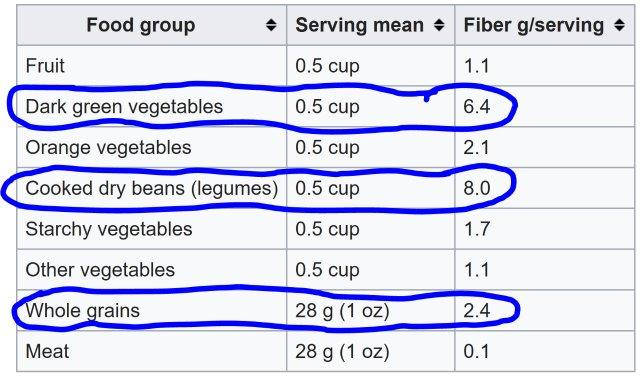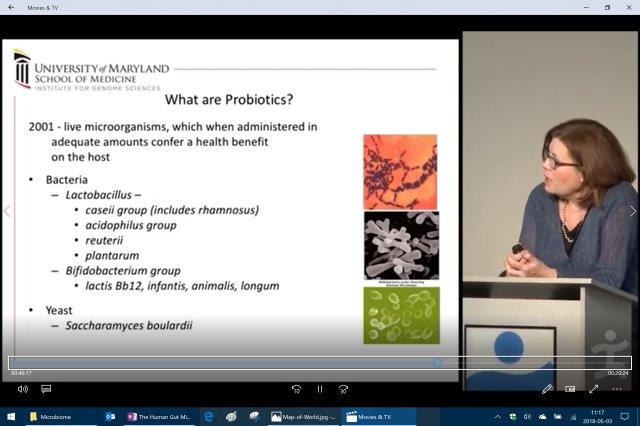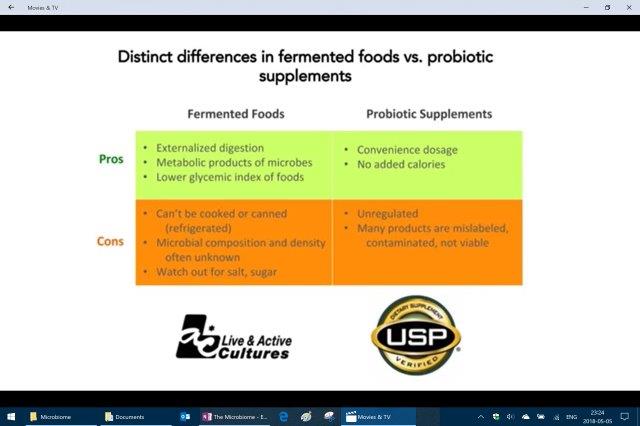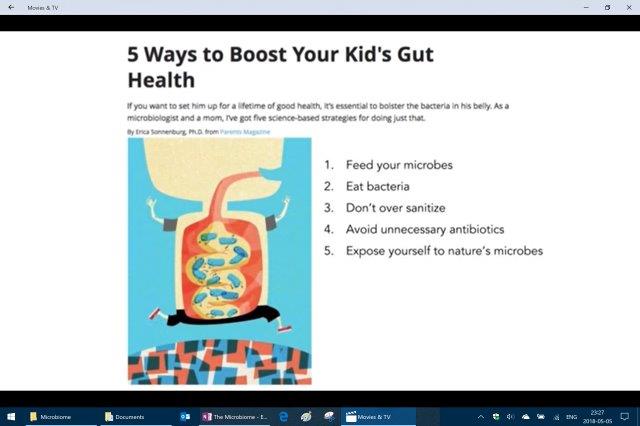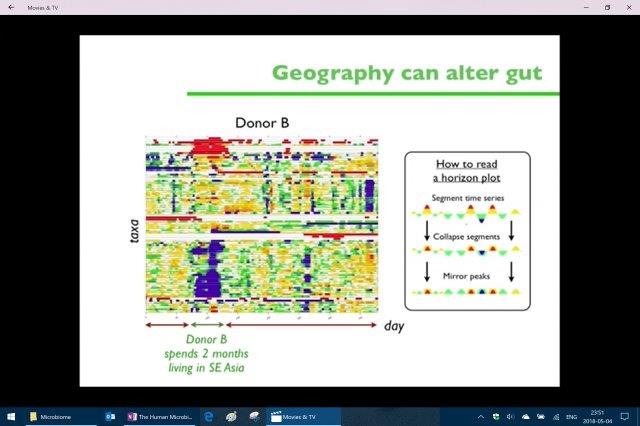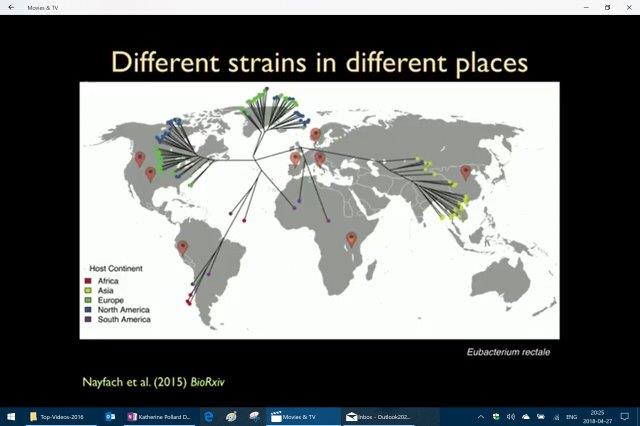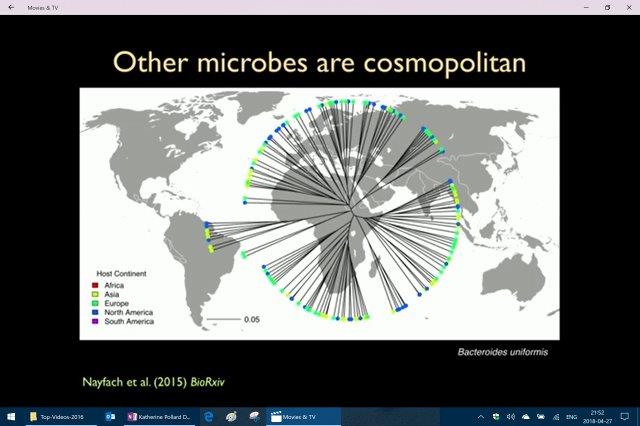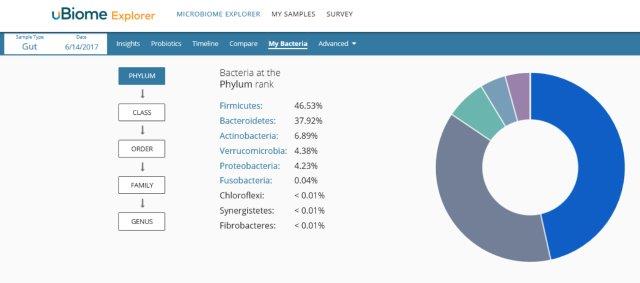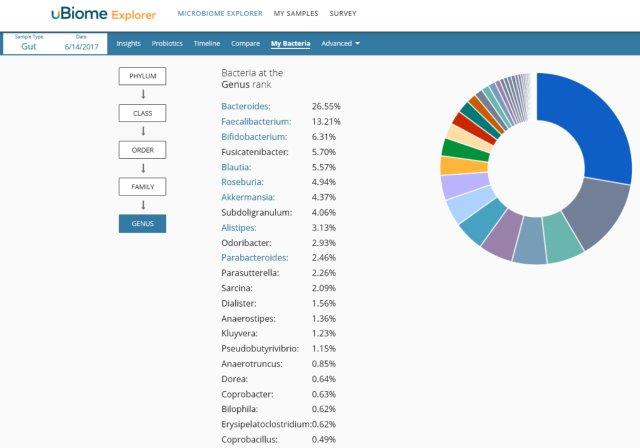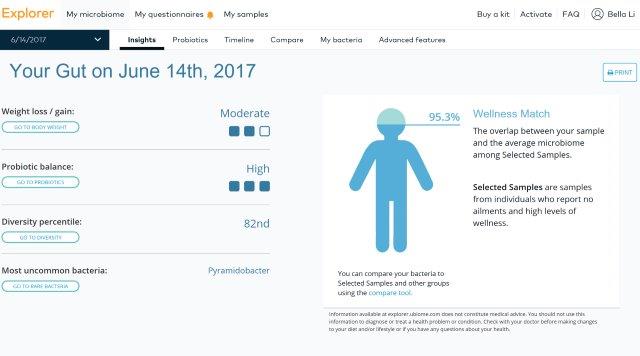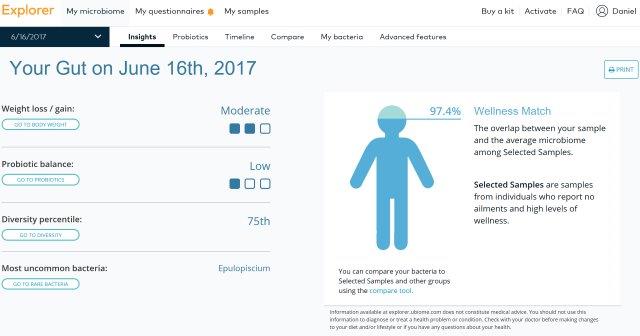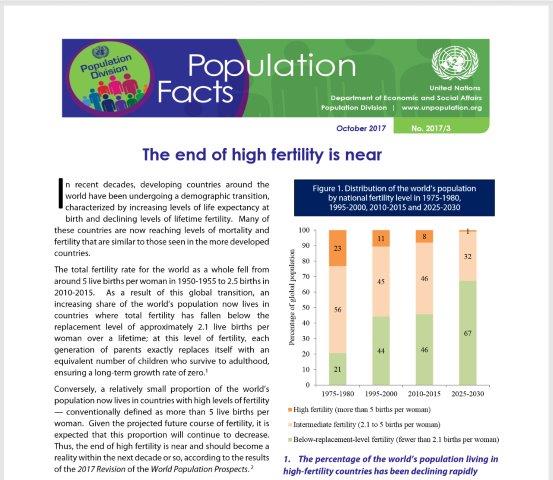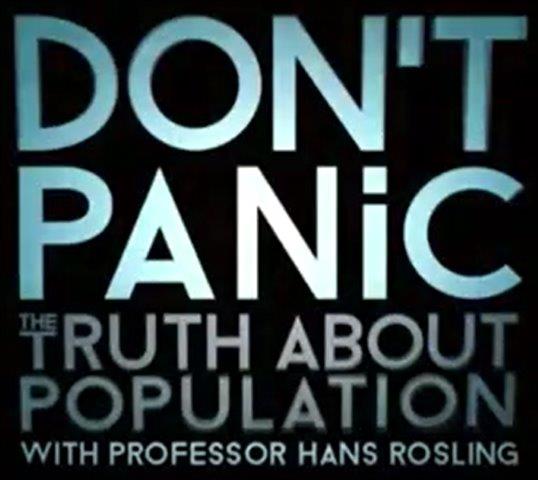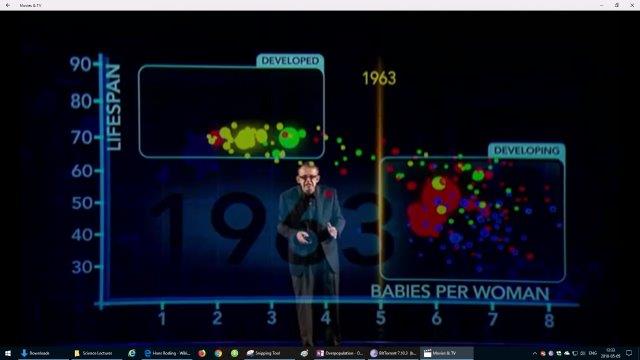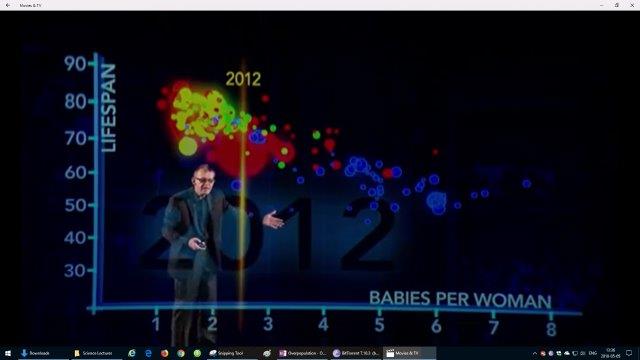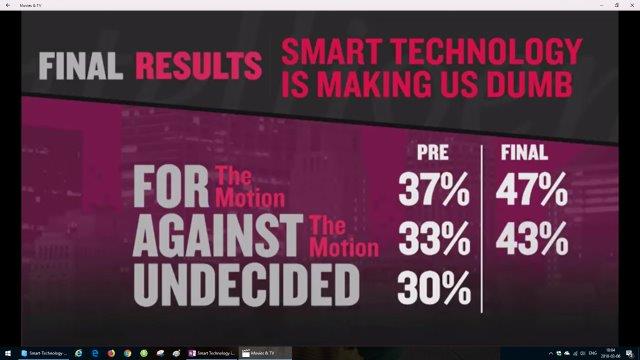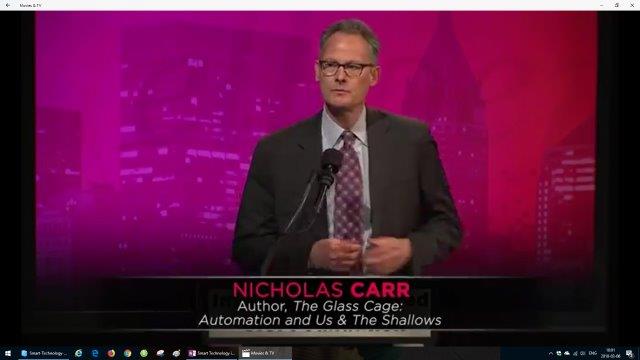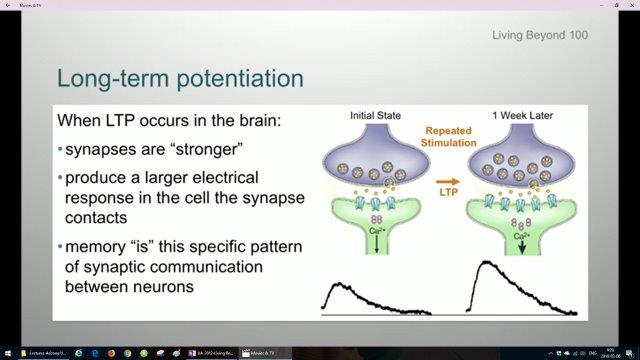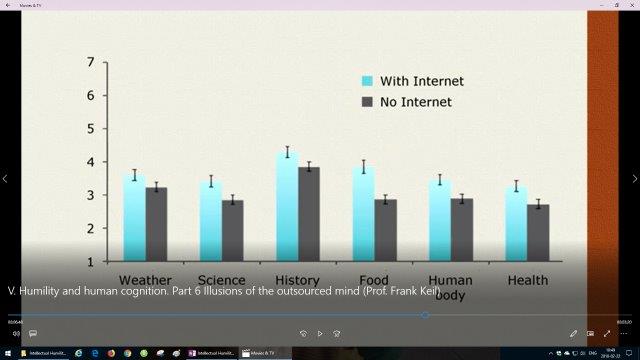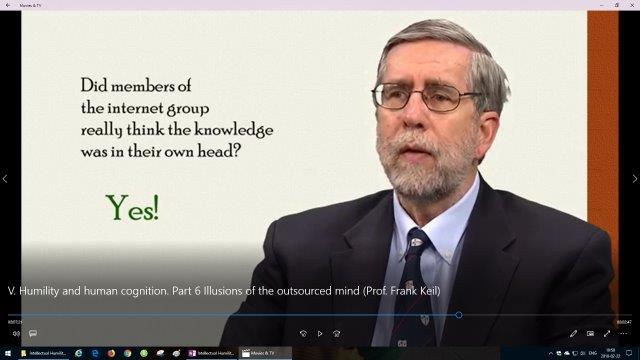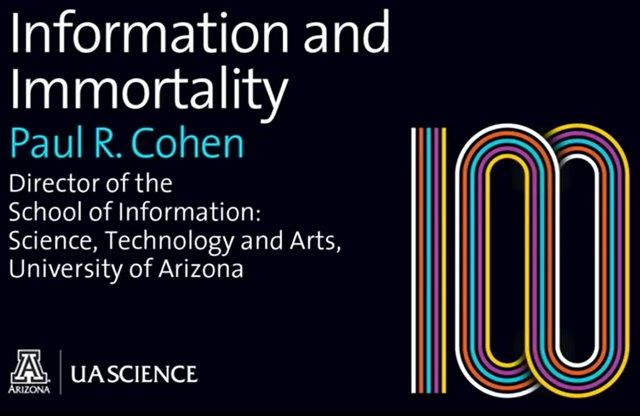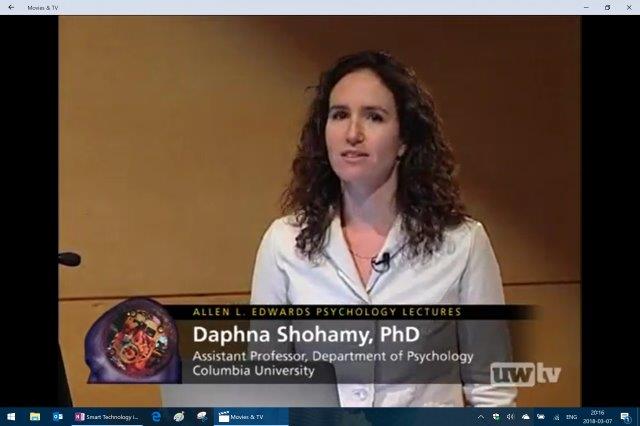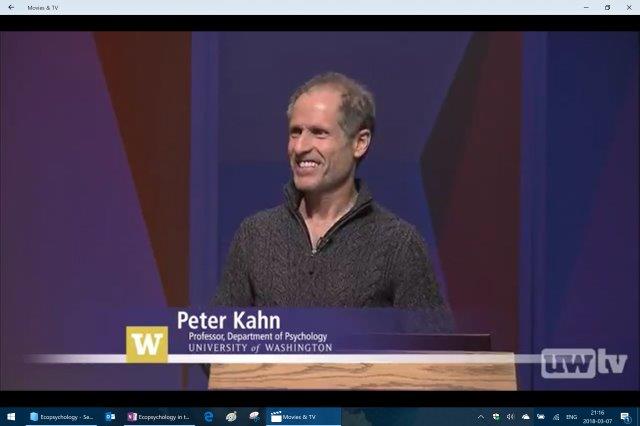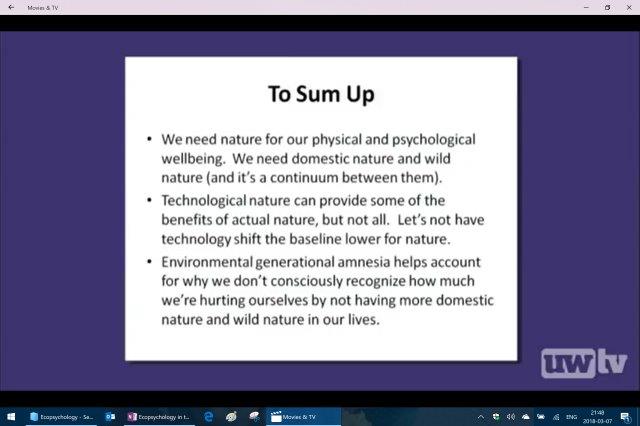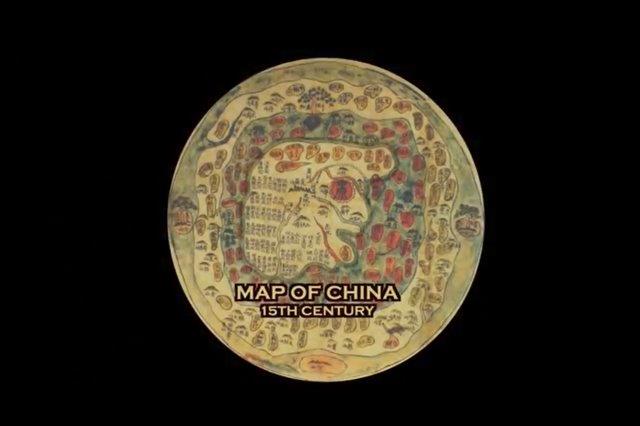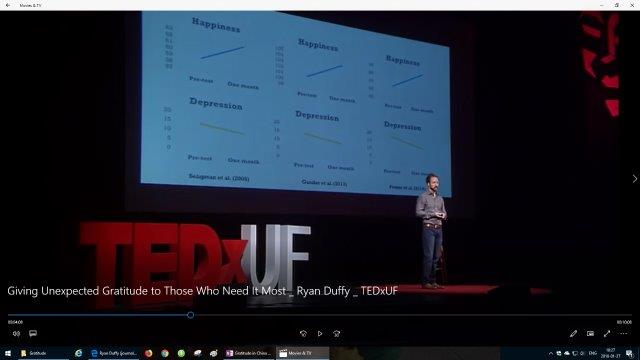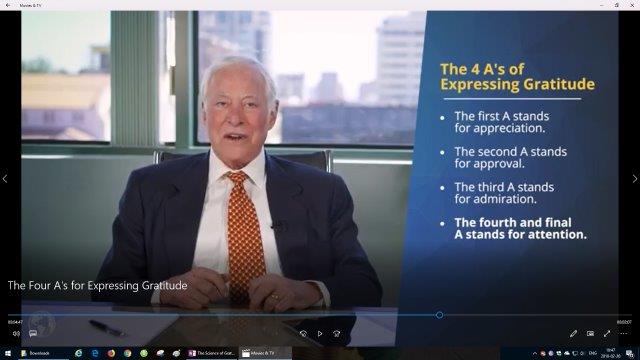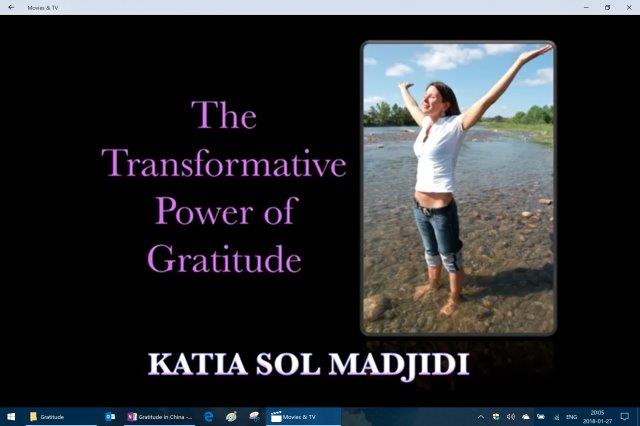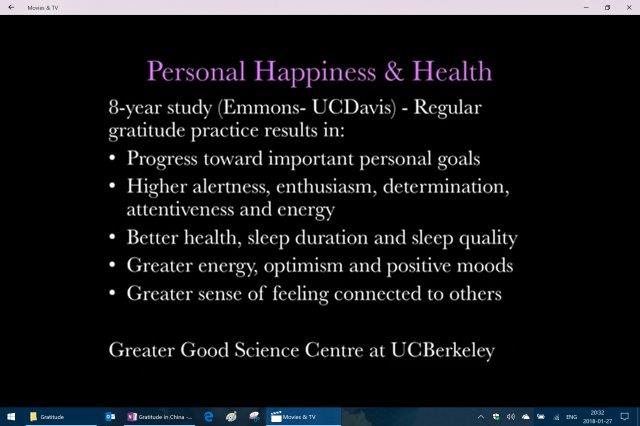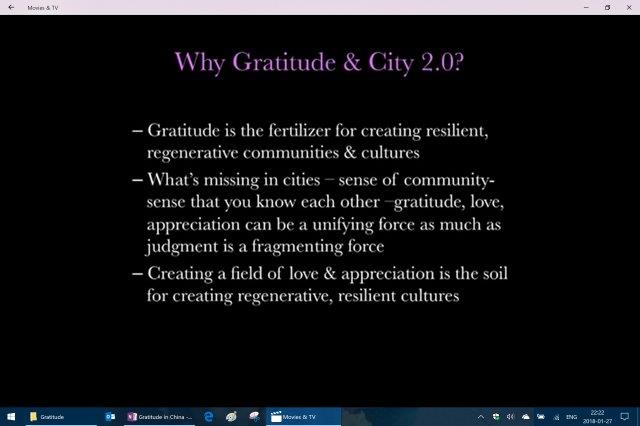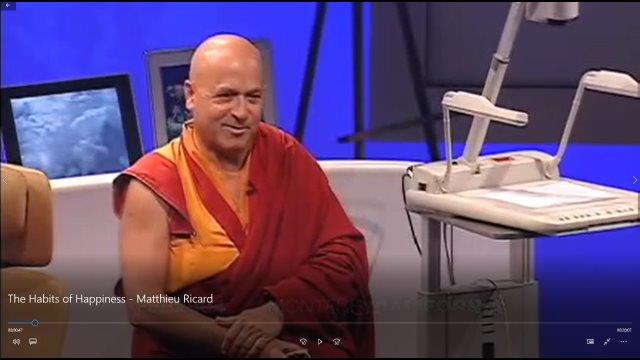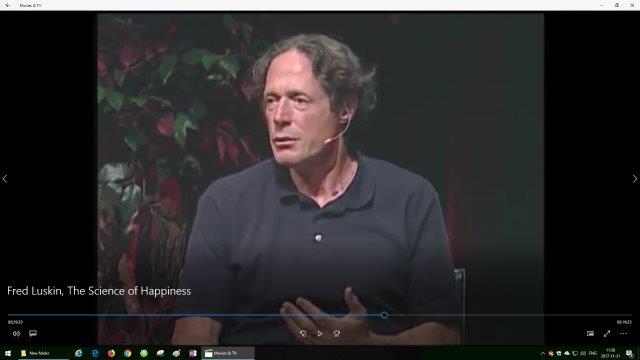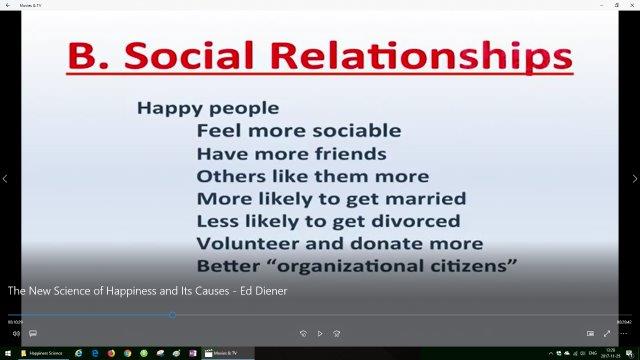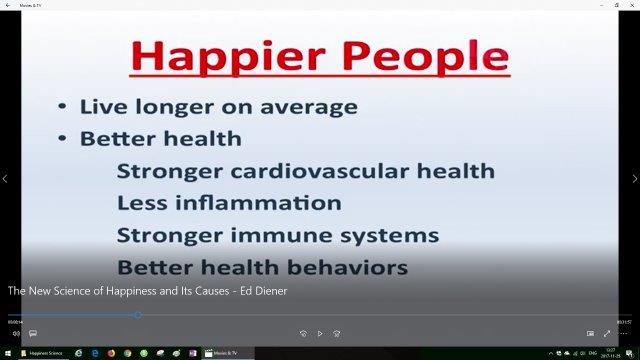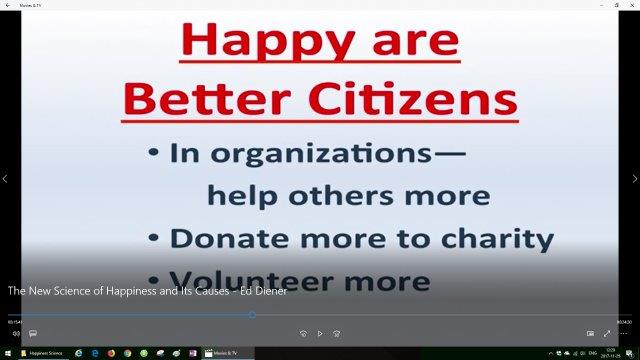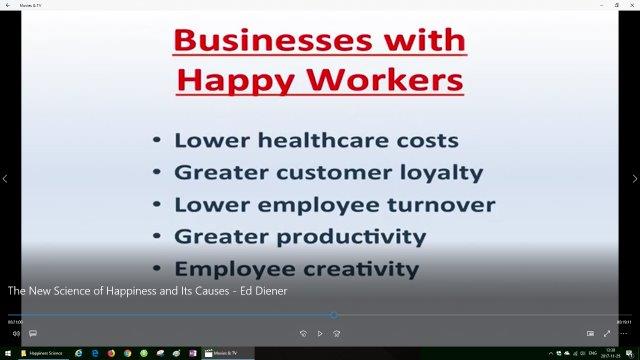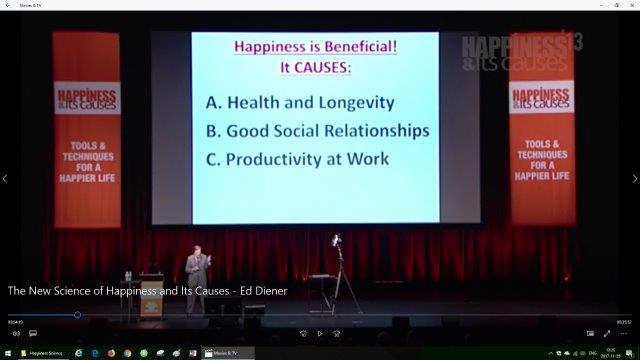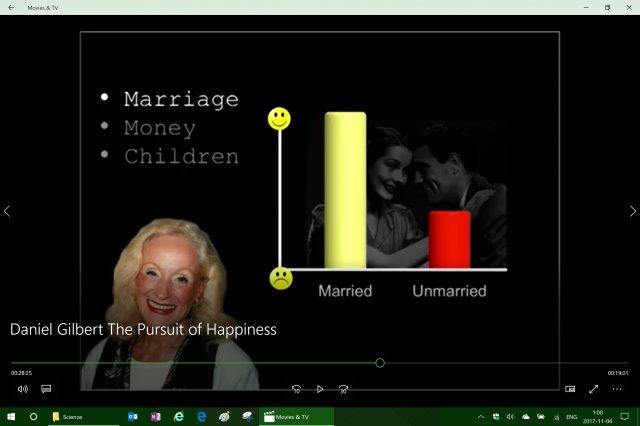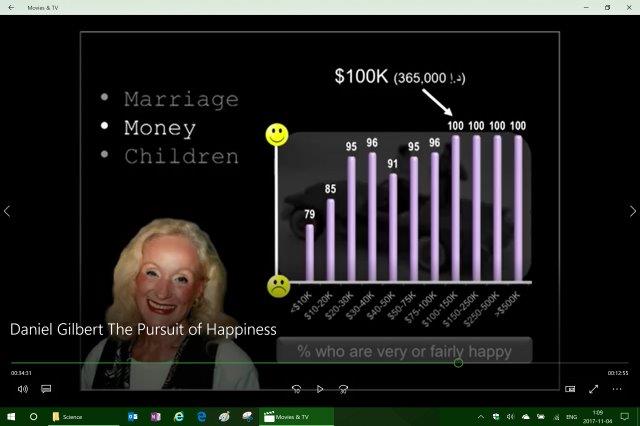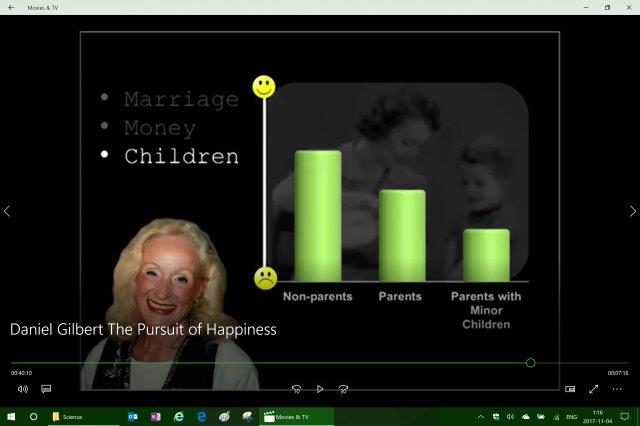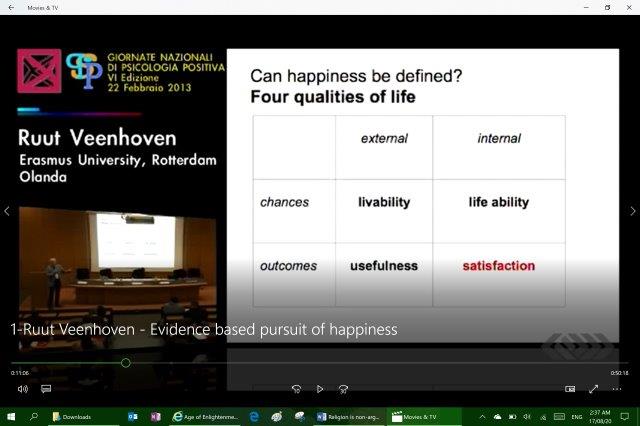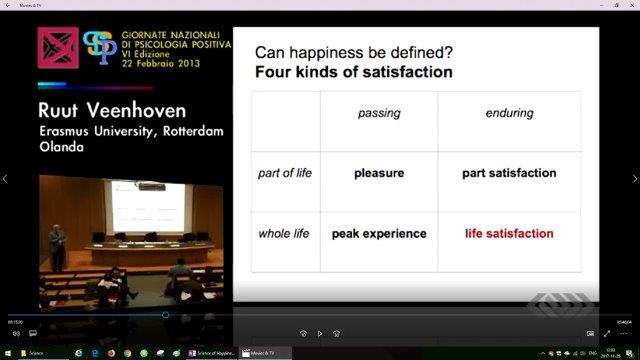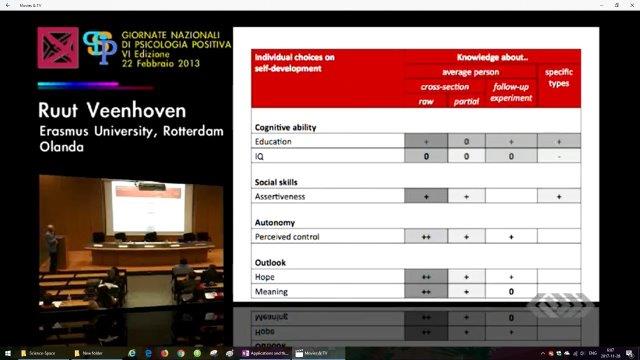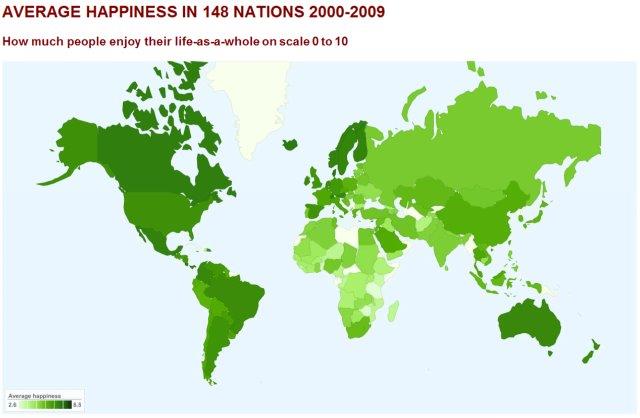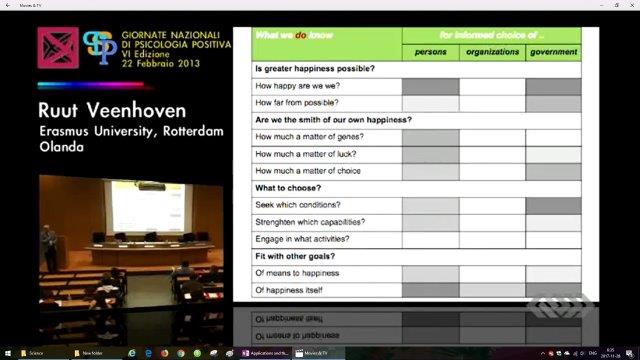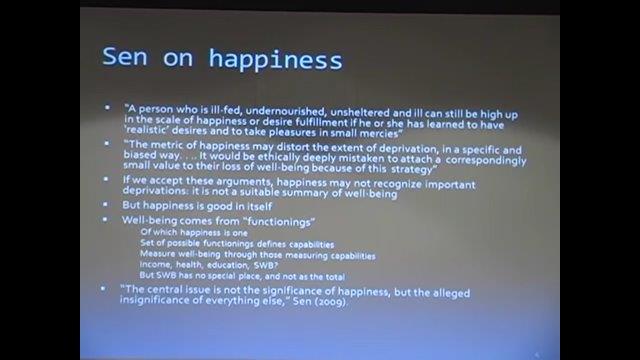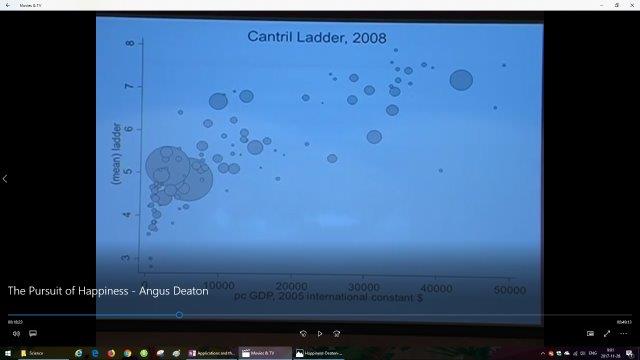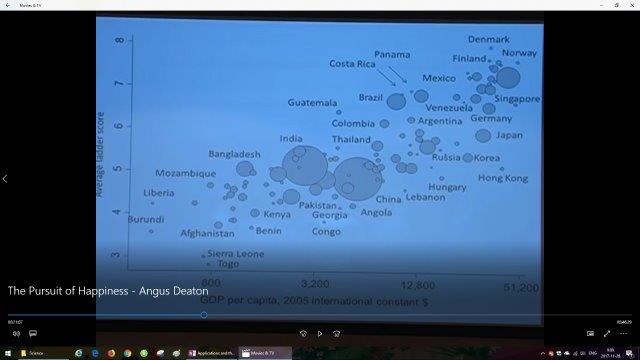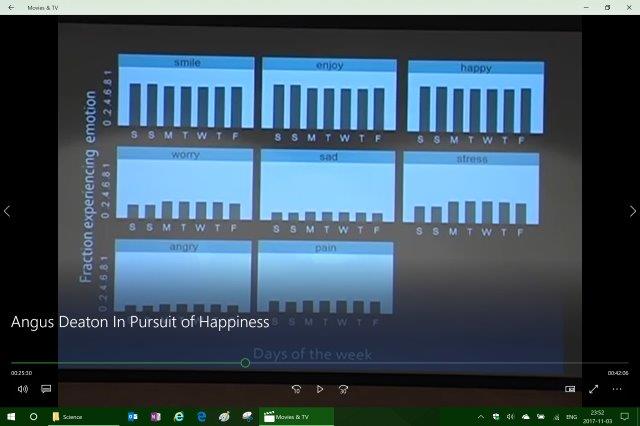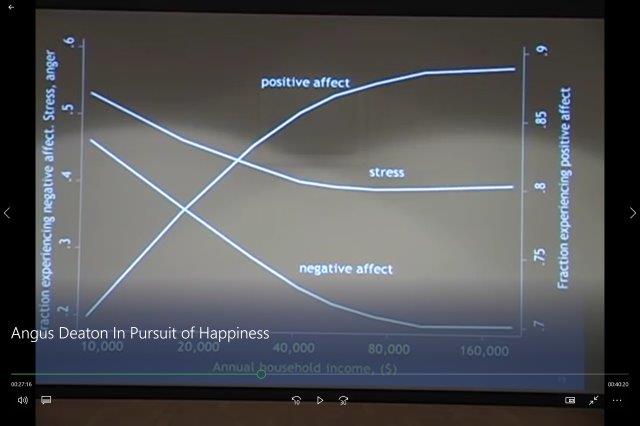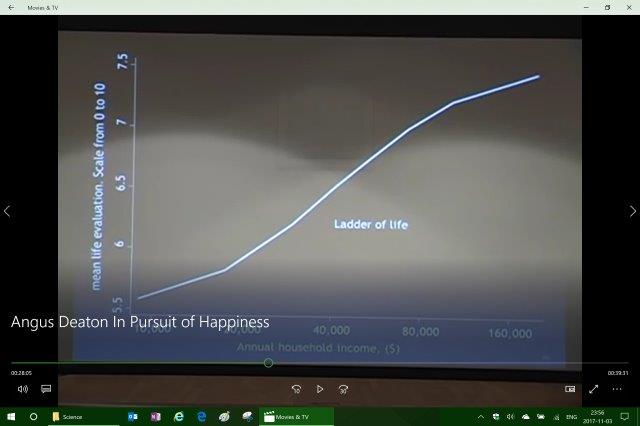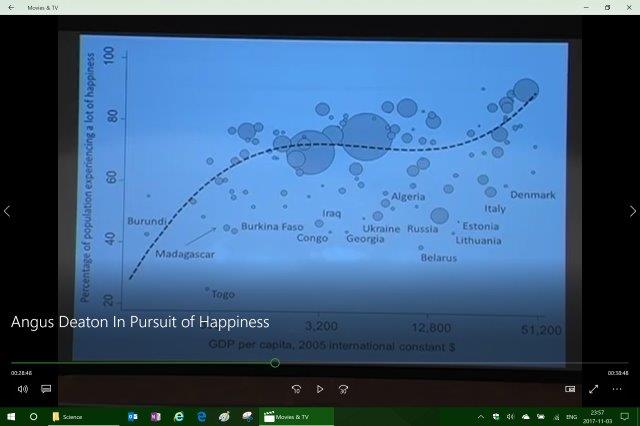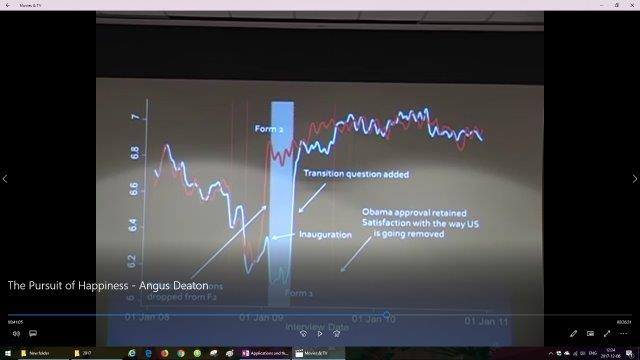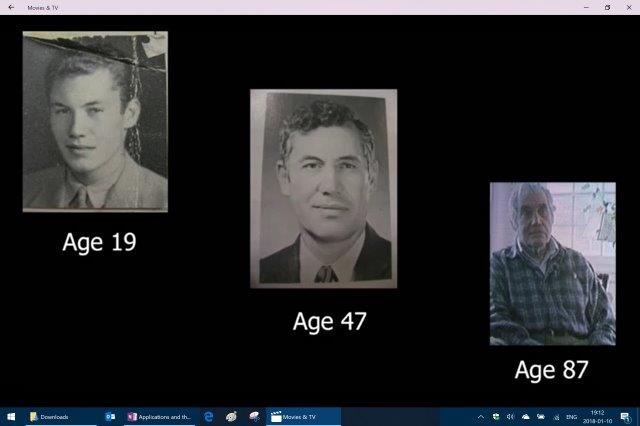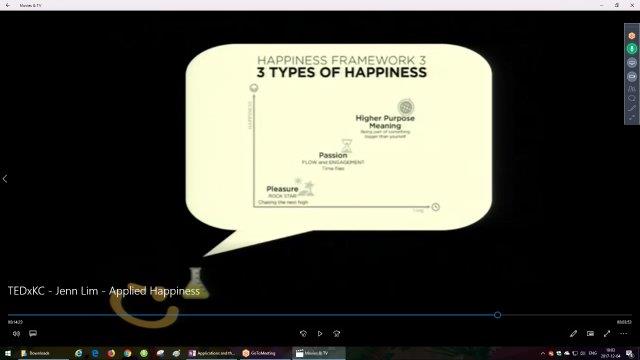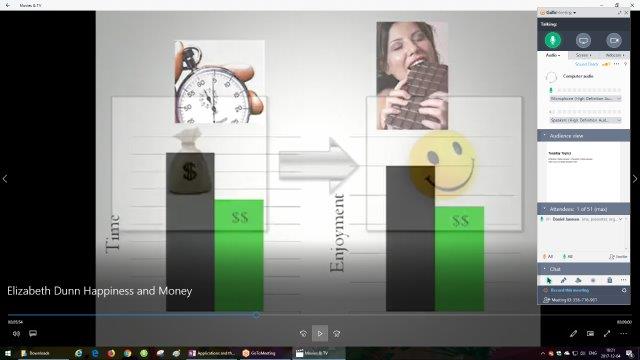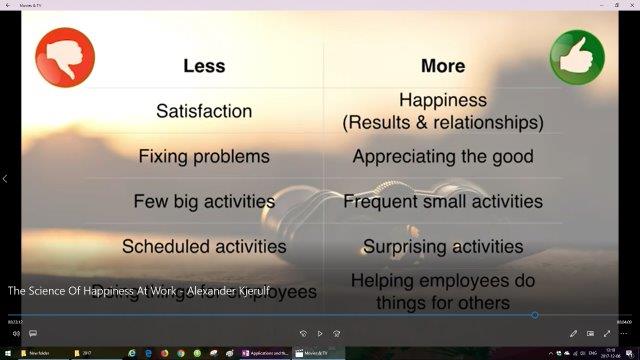“Each of us believes himself to live directly within the world that surrounds him, to sense its objects and events precisely, and to live in real and current time. I assert these are perceptual illusions. Sensation is an abstraction, not a replication of the real world.” Vernon Mountcastle
Quote from YouTube Video: Kavli Prize Laureate Lecture – The Restless Brain
Measuring & Selecting for Intelligence
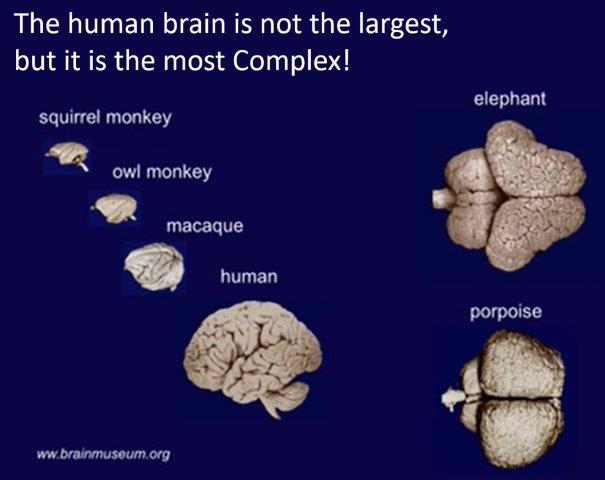
One of the most fascinating facts about humans is that our brain is the most complex object we know of in our universe. Literally, between of all the stars, galaxies, geological systems, life forms, machines or complex electronic networks our brain is at the very top of complexity and still relatively unknown. It contains billions of cells connected in trillions of ways yet it is built from a very short set of genetic instructions, our entire genome can be compressed to a few megabytes and somehow this creates this incredibly complex organ weighing approximately 1.3 Kgs. (+/- .1)
It is no wonder the brain is a hot area of science, research and debate that drives scientists to ask and seek answers to questions like;
- How does this relatively small genetic code build this complex organ?
- What exactly is it about this organ that separates us from others in our species?
- Why are some people so far ahead of the average?
- What makes a genius types that only come around every 100 years or so, and is this coming around in shorter intervals?
- What makes a Nobel Prize laureate?
- What makes your brain different than mine?
The difference that most people are interested in is “intelligence”. It seems to be what separates us from the rest of life, it is why we go to school and try to get smarter so we can make better decisions and do more things and it seems that scientists are revealing that intelligence is, at least in part is genetic. It seems we are not a blank slate and that your born with it no matter where you live or who you live with, that parenting and schooling won’t make much of a difference and that your IQ and standardized tests are excellent predictors of many life outcomes. Being heritable it also becomes evident that evolution is likely at work selecting for this trait making us more fit for our Information Age.
It should be obvious that with the rapid advancement in science and technology and even more relevant that there is a lot of investment, interest, research and really smart scientists paid good money to answer these questions that it is inevitable that we will figure out intelligence and start selecting and adjusting for more of it.
Since the sequencing of the first humans genomes in 2001 we now know that our DNA is the total code that makes all life on earth and that it has revealed the difference between you and I is only a few million letters. It doesn’t sound like much and I am quite surprised it isn’t already completely figured out but I guess that is a testament to the complexity of life. The Human Connectome Project scientists are now busy working on a complete map of the human brain to better understand how it functions and geneticists are busy identifying the genes responsible for how it develops. With knowledge of the genes responsible the opportunities for eugenics become a reality once again.
Eugenics was practiced in the United States long before Nazi Germany in the late 19th century spurred from ideas from men like Francis Galton. In the Stefan Molyneux interview with Nicolas Wade [Nicholas Wade Genetics, Race and Human History _ Nicholas Wade and Stefan Molyneux] Wade distinguishes between “positive and negative eugenics” as the father of eugenics Galton 1883 tried convincing the leaders of the day to practice positive eugenics but for the rich and powerful to start breeding within was agreed it wouldn’t work because the genes of interest are for more complex than breeding desired traits in dogs or domestic animals. The leftist academics in Britain and United States changed the idea from positive to apply negative eugenics which is much easier to sterilize people with defects, diseases or bad genes than to do selective breeding. This spread to Harvard, Stanford and Michigan and eventually led to the American Eugenics Program.
We already select (positive eugenics) by prenatal screening of the pregnant women for many of the genetic disorders like Down Syndrome which is well understood to be related to chromosome 21. The average Down Syndrome adult has an IQ of 50 and a much shorter life span. One of the purposes of the screening is to provide the women the option to abort or to prepare to raise a child with serious mental disabilities. Prenatal screening is regularly performed in detecting problems with the health of the zygote, embryo, or fetus as early in gestation as practicable to change the outcome of the individual.
In vitro fertilisation (IVF) is a another form of selection we perform on a huge scale. IVF is the process of fertilisation where an egg is combined with sperm outside the body, in vitro (“in glass”). The fertilised egg (zygote) undergoes embryo culture for 2–6 days, and is then transferred to the same or another woman’s uterus, with the intention of establishing a successful pregnancy. Some countries banned or otherwise regulate the availability of IVF treatment, giving rise to fertility tourism. From <https://en.wikipedia.org/wiki/In_vitro_fertilisation>
- The first successful birth of a child after IVF treatment, Louise Brown, occurred in 1978.
- In 2012 it was estimated that five million children had been born worldwide using IVF and other assisted reproduction techniques.
- In 2006 Canadian clinics claimed a live birth rate of 27%.
- Birth rates increase in younger women up to 35%.
- It is common to remove between ten and thirty eggs. The retrieval procedure usually takes between 20 and 40 minutes.
- An oocyte selection may be performed prior to fertilisation to select eggs with optimal chances of successful pregnancy.
- Laboratories have developed grading methods to judge ovocyte and embryo quality. In order to optimise pregnancy rates, there is significant evidence that a morphological scoring system is the best strategy for the selection of embryos.
- Israel has the highest rate of IVF in the world, with 1657 procedures performed per million people per year.
Steven Hsu claims there are currently hundreds of thousands approaching a million IVF cycles leading to a birth taking place every year around the globe and this Scientist is on the hunt for Intelligent People to study their brains and determine the genetic makeup that created them. More and more scientists are being funded to find the secrets to intelligence as we prepare to take our species to the next level.
This race-intelligence discussion has a long history but I will pick up the story with Charles Murray and the controversial book The Bell Curve (1994) written with Richard Herrnstein. In it they argue that intelligence or “g” is a better predictor of many individual outcomes including income, job performance, pregnancy out of wedlock, and crime than parental or education level, and that social welfare programs and education efforts to improve social outcomes for the disadvantaged are largely wasted.
In the April 2007 issue of Commentary magazine, Murray wrote on the disproportionate representation of Jews in the ranks of outstanding achievers and says that one of the reasons is that they “have been found to have an unusually high mean intelligence as measured by IQ tests since the first Jewish samples were tested.”
From <https://en.wikipedia.org/wiki/Charles_Murray_(political_scientist)>
Intelligence Quotient (IQ): The median raw score of the norming sample is defined as IQ 100 and scores each standard deviation (SD) up or down are defined as 15 IQ points greater or less, although this was not always so historically. By this definition, approximately two-thirds of the population scores are between IQ 85 and IQ 115. About 2.5 percent of the population scores above 130, and 2.5 percent below 70 (considered retarded). The physical brain has several neurophysiological factors have been correlated with intelligence in humans, including the ratio of brain weight to body weight and the size, shape, and activity level of different parts of the brain. Specific features that may affect IQ include the size and shape of the frontal lobes, the amount of blood and chemical activity in the frontal lobes, the total amount of gray matter in the brain, the overall thickness of the cortex, and the glucose metabolic rate. From <https://en.wikipedia.org/wiki/Intelligence_quotient>
IQ & Brain Size
A number of studies have reported a moderate statistical correlation between differences in IQ and brain size between individuals in the same group. And some scholars have reported differences in average brain sizes between Africans, Europeans, and Asians. J. P. Rushton has argued that Africans on average have smaller brain cases and brains than Europeans, that Europeans have smaller brains than East Asians, and that this is evidence that the gap is biological in nature. From <https://en.wikipedia.org/wiki/Race_and_intelligence>
IQ & Wealth
Psychologist Richard Lynn and political scientist Tatu Vanhanen wrote the 2002 book IQ and the Wealth of Nations. The authors argue that differences in national income (in the form of per capita gross domestic product) are correlated with differences in the average national intelligence quotient (IQ). From <https://en.wikipedia.org/wiki/IQ_and_the_Wealth_of_Nations>
IQ & Race
The majority of anthropologists today consider race to be a sociopolitical phenomenon rather than a biological one, Sternberg, Grigorenko & Kidd (2005) state, “Race is a socially constructed concept, not a biological one. Rushton & Jensen (2005) wrote that, in the United States, self-identified blacks and whites have been the subjects of the greatest number of studies. They stated that the black-white IQ difference is about 15 to 18 points or 1 to 1.1 standard deviations (SDs). East Asians have tended to score relatively higher on visuospatial subtests with lower scores in verbal subtests while Ashkenazi Jews score higher in verbal subtests with lower scores in visuospatial subtests. From <https://en.wikipedia.org/wiki/Race_and_intelligence>
IQ & Region
In the late 1970s, Lynn wrote that he found that Northeast Asians have a higher average intelligence quotient (IQ) than Europeans and Europeans have a higher average IQ than Sub-Saharan Africans. From <https://en.wikipedia.org/wiki/Richard_Lynn>
Hsu describes people with IQ of 130 are in the top few percent of the human population (+2 SD above), people with IQ of 145 are 1 in 1000 (+3 SD above), and the people they are looking for are people with IQ of 160 which are 1 in 30,000 (+4 SD above). He talks about a couple main hypothesis to explain this difference, one being that IQ’s 130 and above are about the same, all are smart and could invent a new physics paradigm, or create a new FaceBook or Google kind of smart. The hypothesis claims you can do pretty much anything with right guidance and resources. The another hypothesis is IQ matters, bigger brains makes a difference and cites a 50’s study (Roe) that tested the brains of 64 eminent scientists and found they were all +3-4 Standard Deviations above the average PhD’s.
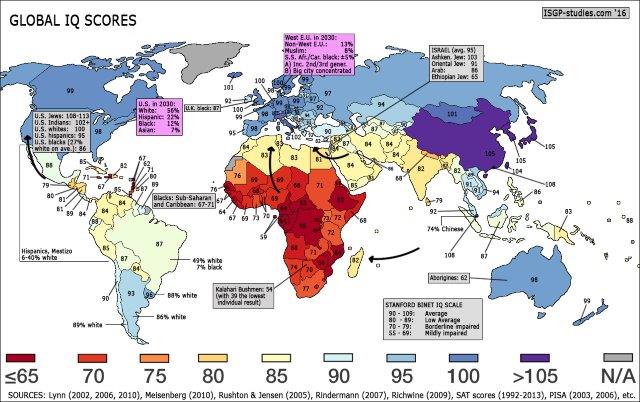
Institute for the Study of Globalization and Covert Politics [https://isgp-studies.com/]
It may be that this is our map of intelligence? Like religion, income, energy use, happiness, and many other social or economic measures we can divide up our world and show the our differences and how it relates to populations. It is very interesting that, if the above map is true that it tracks the evolutionary path of humans out of Africa in interesting ways. One way is Richard Lynn’s Cold Winter Theory that we evolved our intelligence to adapt to colder climates.
A good friend of mine from Finland, and me from Canada have discussed how dealing with winters makes you think much more, it makes you prepare and plan more than our warm climate peoples otherwise you will die. We didn’t survive these cold regions by being a dummies, we had to think more, and do more preparing and planning, as well as superior building skills to protect against the elements and survive winters so to the Fin and I this makes perfect sense.
Another interesting aspect of the IQ World Map is the higher on average IQ for East Asians as other research has shown, and this map showing China as the higher IQ region. This can be highly debated for those of us that live in China as we see the opposite in reality. It has been said that the IQ test only tests for the outcome of how well you will do in school and does not test the multiple intelligences that humans possess. This makes sense as the Chinese sacrifice their children’s life to some degree by “education cramming” to try to get an edge up in this highly competitive country. It’s all about the “gaokao” the National Higher Education Examination that focuses students to memorize for 16 hours a day for 18 years to try get a good score on this major test as it seems to be the main measure in this society. It could be that their education system prepares them to do well on tests but lack on many other intelligence abilities described below.
[The National Higher Education Entrance Examination commonly known as Gaokao (高考, “Higher Education Exam”, Pinyin gāo kǎo, lit. “High exam”), is an academic examination held annually in the People’s Republic of China. This examination is a prerequisite for entrance into almost all higher education institutions at the undergraduate level. It is usually taken by students in their last year of senior high school, although there has been no age restriction since 2001. From <https://en.wikipedia.org/wiki/National_Higher_Education_Entrance_Examination>]
Organizations and institutions have always sought out and highly compensated really smart people to help advance their cause. Nobody is looking for a bunch of average people to build an organization so it’s no wonder that we are trying to identify and recruit the best of the best. One example is Steven Hsu speaking at Google in 2011 discussing intelligence and pitching the group that they are looking for 2000 (+4SD) people to participate in a cognitive ability study in partnership with China’s BGI. In this talk he describes a bit about the project and claims they expect to know within a decade the genetic makeup of intelligence.
While the scientists argue about the facts on the nature / nurture debate regarding intelligence and life outcomes not to mention all the ethical issues related to gene editing, positive eugenics the world is moving forward at a rapid pace. Sequencing factories like BGI China are sure to make sequencing cheaper and plan to sequence everything they can according to their Chairman.
BGI in China may be the world’s largest genetics laboratory but that is only because of the volume of machines, that doesn’t say anything about the quality of the facility, skill of the people, integrity of the processing and responsibility with the knowledge. In the documentary [DNA Dreams _ Bio-Science In China _ Full Documentary] BGI Dr. Yang make statements like the above and “We are going to sequence every living thing on earth” from a man trained on mapping and cloning human genes should concern us all.
In that same documentary Demark Geneticist Lars Bolund touring BGI looks at a cloned pig and comments that in Denmark they usually do about 12 embryo transfers in one year then asks the Chinese embryologist how many they do and she replies “we do 3 every day” and laughs while he holds his head down.
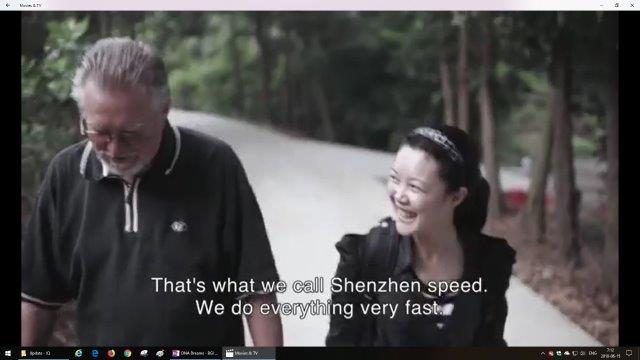
In the panel discussion about whether we can engineer intelligence [Steven Pinker, Stephen Hsu and Dalton Conley Can Genius Be Genetically Engineered] Pinker comments people won’t want for a few logical reasons and then Hsu remarks about his work in China there is no resistance at all, basically rushing to do it.
There is no doubt in my mind that scientists will figure out the genetic makeup of intelligence, and no doubt that some people or whole populations will edit and or select for those traits but a lot remains to be said if “g” is the best measure? It certainly isn’t the only measure of intelligence as American developmental psychologist Howard Gardner outline in his theory of multiple intelligences. Gardner proposed 8 intelligences in his 1983 book Frames of Mind: The Theory of Multiple Intelligences and since then expanded over the years to the following 11;
a. Musical
b. Spatial
c. Linguistic
d. Mathematical
e. Kinesthetic
f. Interpersonal
g. Intrapersonal
h. Naturalistic
i. Existential
j. Moral
k. Pedagogical
Defining intelligence is another matter and the center of much of the debate. The Wikipedia Page [<https://en.wikipedia.org/wiki/Intelligence>] on intelligence reports “Intelligence has been defined in many different ways to include the capacity for logic, understanding, self-awareness, learning, emotional knowledge, reasoning, planning, creativity, and problem solving. It can be more generally described as the ability to perceive or infer information, and to retain it as knowledge to be applied towards adaptive behaviors within an environment or context.”
And from “Mainstream Science on Intelligence” (1994), an op-ed statement in the Wall Street Journal signed by fifty-two researchers (out of 131 total invited to sign): A very general mental capability that, among other things, involves the ability to reason, plan, solve problems, think abstractly, comprehend complex ideas, learn quickly and learn from experience. It is not merely book learning, a narrow academic skill, or test-taking smarts. Rather, it reflects a broader and deeper capability for comprehending our surroundings—”catching on,” “making sense” of things, or “figuring out” what to do.
And from “Intelligence: Knowns and Unknowns” (1995), a report published by the Board of Scientific Affairs of the American Psychological Association: Individuals differ from one another in their ability to understand complex ideas, to adapt effectively to the environment, to learn from experience, to engage in various forms of reasoning, to overcome obstacles by taking thought. Although these individual differences can be substantial, they are never entirely consistent: a given person’s intellectual performance will vary on different occasions, in different domains, as judged by different criteria. Concepts of “intelligence” are attempts to clarify and organize this complex set of phenomena. Although considerable clarity has been achieved in some areas, no such conceptualization has yet answered all the important questions, and none commands universal assent. Indeed, when two dozen prominent theorists were recently asked to define intelligence, they gave two dozen, somewhat different, definitions.
In a Stefan Molyneux’s interview Linda Gottfredson try’s to set the context for defining intelligence saying the ability, or proficiency for learning, reasoning, abstract thinking, cognitive problem solving is too general. Claims the ability to process complex information, and the mental manipulation of complex information is really what the intelligence tests get at in measuring IQ. That being said it sounds like a very specific measurement that is then subject to who, what, why, where and when questions to quantify the data to infer some meaning.
Using any of the above highlighted definitions China becomes a puzzling case if they are ranked the highest in IQ like a lot of these scientists claim? Those of us that have lived here for more than a decade all agree that can’t be, or at least that measure is very narrow and limited to simply test taking which we agree they do well on not from intelligence but from thousands of hours of memorization and education cramming as mentioned above.
I have been in China 15 years, speak the language and have friends in manufacturing, education and engineering positions who all here a decade or more experience and observe a much different reality. We all agree they are very weak on critical thinking and problem solving and have standard jokes like “two Wang’s don’t make it right.”
Common sense is not very common and there can’t be much doubt about their lack of innovation being the copy kings of the world. They are very weak with interpersonal and intrapersonal skills and great complicating almost everything reducing efficiency and effectiveness. Driving is another example and anyone who has traveled here knows is very dangerous and chaotic not resembling a high IQ society. China is truly one of the most inefficient societies I and many others claim they have experienced similar to what you find in third world and developing nations.
On top of this why they have not been able to create many new technologies or brand products, why is their environment seriously polluted and why they are still considered a developing country after 40 years past the Cultural Revolution and the opening up with Deng Xiaoping.
Japan was able go from a completely devastated war torn country with few men and no resources to a world super power surpassing the USA in only 20 years producing some of the best electronics, motorcycles, cars and many other quality goods and China has had twice the time, 10 times the resources and you tell me how many Chinese products you can name let alone how many you have in your house?
- How can they both be High IQ countries with completely different outcomes?
- Why did the Japanese and South Korean’s learn, change and adapt and the Chinese not?
Based many of our observations and experiences living in China there is some serious flaws in the gathering or interpreting of these data leading many of us to be ever more convinced that Gardner has it right, that IQ is one measure but humans have multiple intelligences and that each one of us should seek out our areas of intelligence and direct it in a positive manner.
However you define intelligence, it is behind the scenes in discovering revolutionary theories, solving deep mathematical problems, building quantum computers or directing premier institutions to leading a country there is a wide variety of skills and people to make things happen. We are the “Intelligence Ape” living in the “Intelligence Age” shaping a society that is getting ever more complex and requiring the collaboration of all of us to solve our global issues in our ever shrinking planet. We may need to increase our cognitive abilities, build sophisticated AI technology to help us process more information and simultaneously we will need to further develop our interpersonal and intrapersonal, existential and moral skills to get along and create a better world for our children.
YouTube Video Resources:
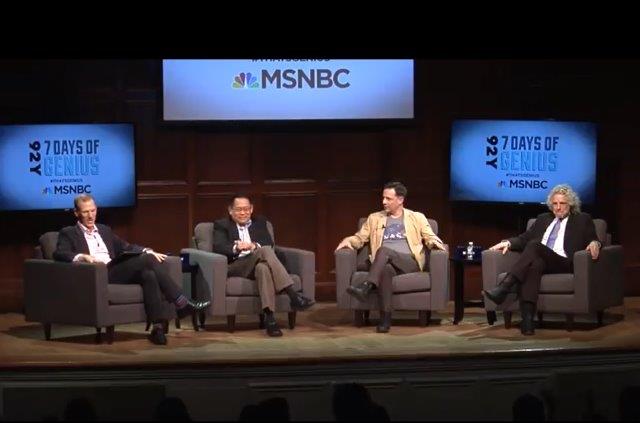
MSNBC has partnered with the 92Y to celebrate the 7 Days of Genius for a series of inspiring conversations with thought-leaders focused on the transformative power of genius to change the world for the better. The series hosted an excellent panel discussion on this subject of eugenics, gene editing for improving/enhancing people. [Steven Pinker, Stephen Hsu and Dalton Conley Can Genius Be Genetically Engineered]

Charles Murray:
[Charles Murray Fascinating Discussion about The Bell Curve, Race and Intelligence]
[Charles Murray Coming Apart The Class Divide in America Today]
[Sam Harris _ Charles Murray on Human Intelligence (The Bell Curve)]
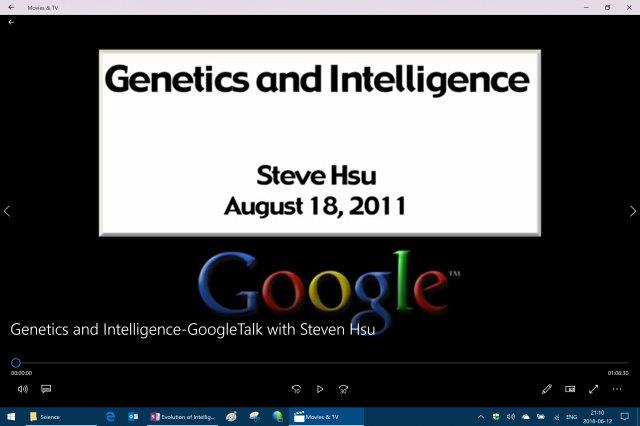
Steven Hsu:
[Genetics and Intelligence-GoogleTalk with Steven Hsu]
[Steve Hsu talk on the architecture of intelligence]
[Genius Babies – Steve Hsu on NPR’s On Point]
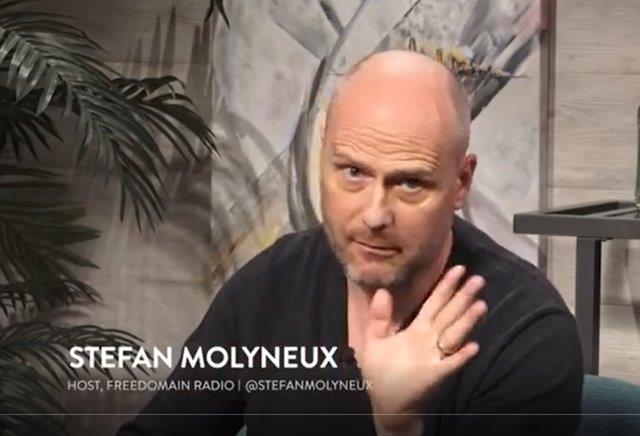
Stefan Molyneux:
Excellent conversation with Stefan on the Rubin Report [Stefan Molyneux on Race and IQ (Pt. 2)]
Stefan has dove deep into this subject and interviewed many leading scientists to better understand the facts and develop a deeper understanding on how this applies to society, inequality, policies, etc. Below are some of the more controversial authors on this subject.
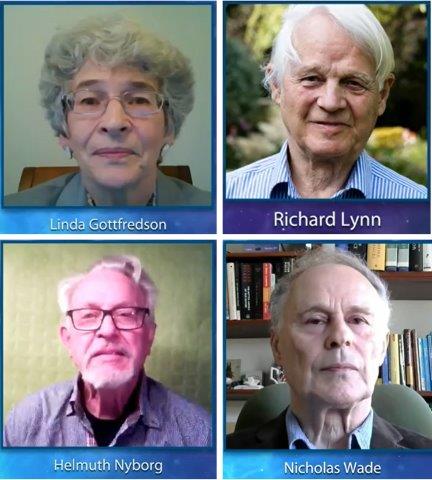
[Stefan Molyneux Race, Genetics and Intelligence _ Helmuth Nyborg]
[Stefan Molyneux Race, Evolution and Intelligence _ Linda Gottfredson]
[Stefan Molyneux Race, Genetics and Intelligence _ Richard Lynn]
[Stefan Molyneux Race, Genetics and Human History _ Nicholas Wade]
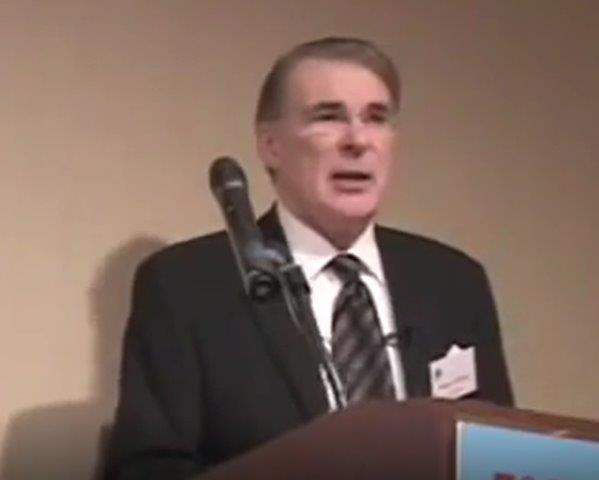
John Philippe Rushton (December 3, 1943 – October 2, 2012) was a Canadian psychologist and author. He taught at the University of Western Ontario and became known to the general public during the 1980s and 1990s for research on race and intelligence, race and crime, and other apparent racial variations. His book Race, Evolution, and Behavior (1995) is about the application of r/K selection theory to humans. Rushton’s controversial work was heavily criticized by the scientific community for the questionable quality of its research, with many alleging that it was conducted under a racist agenda. From 2002 until his death, he served as the head of the Pioneer Fund, a research foundation that has been accused of being racist. From <https://en.wikipedia.org/wiki/J._Philippe_Rushton>
[Dr. John Philippe Rushton – Race and IQ]
John Philippe Rushton makes 10 claims to demonstrate Black White IQ differences and then further claims the difference is about 80% heritable.
- World Wide pattern of IQ scores: Data that creates the world map of IQ’s similar to that in the article.
- The race differences are most pronounced on the more “g” loaded components of the tests:
- The race differences are most pronounced on the heritable components of the tests: Cites twin studies and he & Jensen studies.
- Brain size differences parallel IQ differences: Australian aboriginals have lowest IQ and lowest brain size, East Asian’s largest brains, highest IQ’s.
- Studies of racial admixture: Cites studies of multicultural families showing children come out half way between parents.
- Trans racial adoptions studies: Cites poor or colored children adopted by whites and raised in white home/environment but maintain race IQ.
- Regression to the mean effects:
- 60 other life history traits: (Such as crime rates, fertility rates, maturation rates, ……………. all which correlate very well with IQ differences.)
- Human origins research: Cites human migration routes and the Lynn Cold Weather hypothesis.
- Inadequacy of environmental explanations:
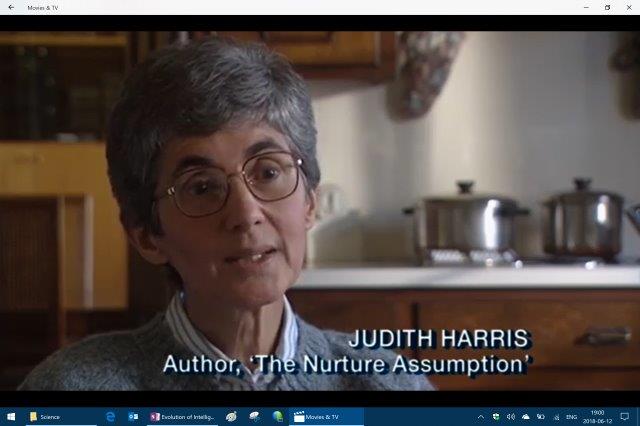
Judith Harris:
Judith Rich Harris (born February 10, 1938) is a psychology researcher and the author of The Nurture Assumption, a book criticizing the belief that parents are the most important factor in child development, and presenting evidence which contradicts that belief. From
[Is It Your Parents Or Peers That Define Your Personality _ Do Parents Matter]
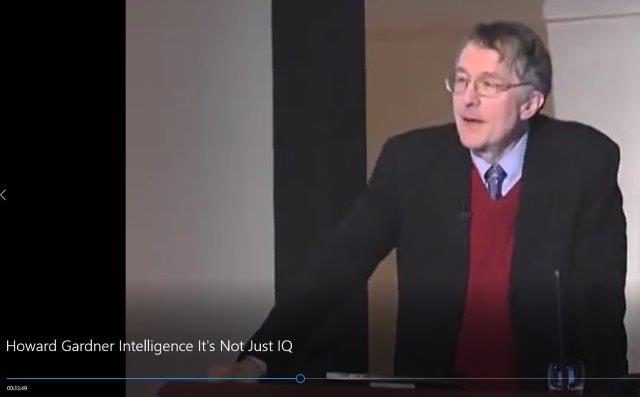
Howard Gardner:
[Intelligence It’s Not Just IQ]
[Howard Gardner Discusses Multiple Intelligences – Blackboard BbWorld 2016 HD]
[Howard Gardner Frames of Mind – Theory of Multiple Intelligences]
[Howard Gardner Beyond Wit and Grit Rethinking the Keys to Success TEDxBeaconStreet]
Gardner’s TedTalk where he introduces his change of mind about human intelligences, once holding to a view all you need is wit and then lots of hard work (grit) to a view that we must direction for our grit to a positive outcome.
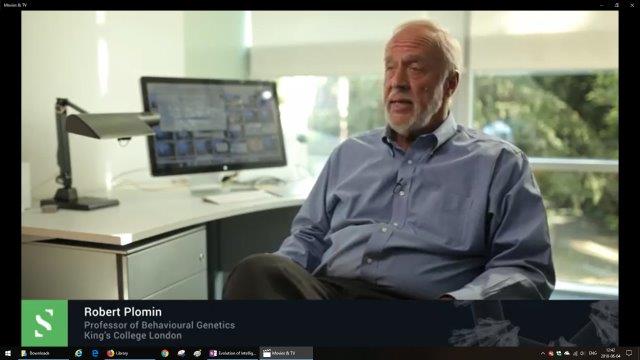
Robert J. Plomin, FBA (born 1948) is an American psychologist and geneticist best known for his work in twin studies and behavior genetics. A Review of General Psychology survey, published in 2002, ranked Plomin as the 71st most cited psychologist of the 20th century. From <https://en.wikipedia.org/wiki/Robert_Plomin>
[Robert Plomin Behavioral Genetics]
[Robert Plomin Genetics and Intelligence]
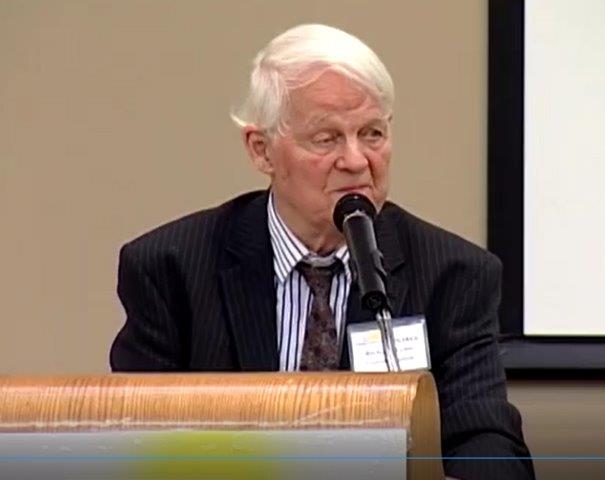
Richard Lynn (born 20 February 1930) is an English psychologist and author. He is a former professor emeritus of psychology at the University of Ulster, having had the title withdrawn by the university in 2018, and assistant editor of the journal Mankind Quarterly, which has been described as a “white supremacist journal”. Lynn studies intelligence and is known for his belief in racial differences in intelligence. Lynn was educated at King’s College, Cambridge in England. He has worked as lecturer in psychology at the University of Exeter and as professor of psychology at the Economic and Social Research Institute, Dublin, and at the University of Ulster at Coleraine. He has written or co-written 11 books and more than 200 journal articles spanning five decades. Two of his recent books are on dysgenics and eugenics. From <https://en.wikipedia.org/wiki/Richard_Lynn>
[Richard Lynn – IQ and The Global Bell Curve]
[Richard Lynn “Eugenics and Dysgenics A Promise Denied”]

James Flynn:
The Flynn effect is the substantial and long-sustained increase in both fluid and crystallized intelligence test scores measured in many parts of the world over the 20th century. When intelligence quotient (IQ) tests are initially standardized using a sample of test-takers, by convention the average of the test results is set to 100 and their standard deviation is set to 15 or 16 IQ points. When IQ tests are revised, they are again standardized using a new sample of test-takers, usually born more recently than the first. Again, the average result is set to 100. However, when the new test subjects take the older tests, in almost every case their average scores are significantly above 100. Test score increases have been continuous and approximately linear from the earliest years of testing to the present. For the Raven’s Progressive Matrices test, a study published in the year 2009 found that British children’s average scores rose by 14 IQ points from 1942 to 2008. Similar gains have been observed in many other countries in which IQ testing has long been widely used, including other Western European countries, Japan, and South Korea. From <https://en.wikipedia.org/wiki/Flynn_effect>
[Why our IQ levels are higher than our grandparents’ _ James Flynn] TedTalk
[Intelligence and genes by James Flynn in Cambridge University]
[Human Intelligence The Flynn Effect _ James Flynn and Stefan Molyneux]
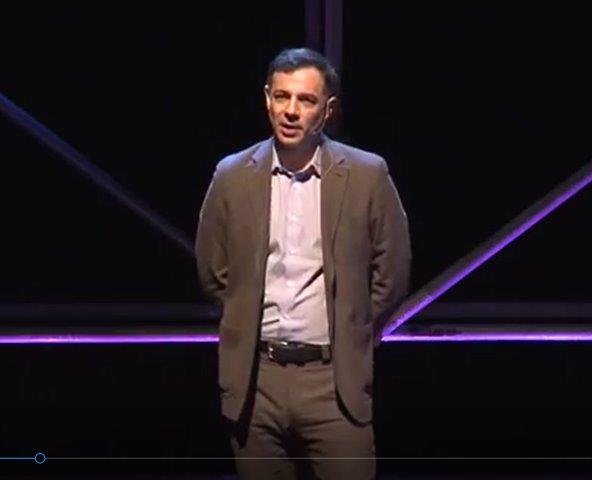
Dalton Clark Conley
(born 1969) is an American sociologist. He is the Henry Putnam University Professor of Sociology at Princeton University where he is also an affiliate of the Office of Population Research and the Center for Health and Wellbeing. From <https://en.wikipedia.org/wiki/Dalton_Conley>
[Stalkers, twins, and the case of the missing heritability _ Dalton Conley _ TEDxUNC]
Conley seems to take the nurture side in this debate and debunks 3 of the main tenants of Murray claims from his 1994 book The Bell Curve in this talk:
[Prof. Dalton Conley The Genome Factor, Environment and Educational Inequality]
DNA Dreams Documentary:
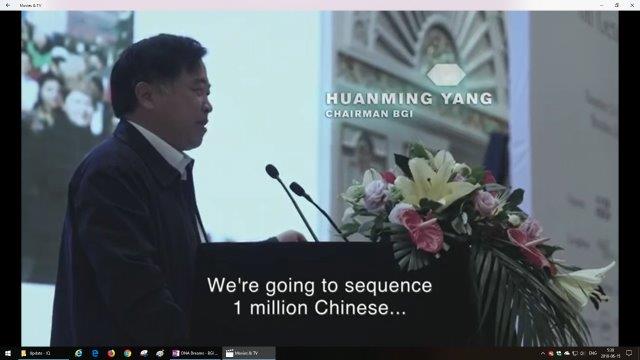
[DNA Dreams _ Bio-Science In China _ Full Documentary] In her film DNA Dreams, documentary maker Bregtje van der Haak gave us a view into the world of young scientists eager to unravel the mysteries of our genome. It all happens in China and on a very fast pace.
Russell Sage Foundation Lecture Series
Summer Institute in Social Science Genomics – June 2016
Lecture 1 – Daniel Benjamin – Using Genetic Data in Economics
Lecture 2 – Dalton Conley – Using Genetic Data in Sociology
Lecture 3 – Chris Dawes – Using Genetic Data in Political Science
Lecture 4 – James Lee – Using Genetic Data in Psychology
Lecture 6 and 7 – David Cesarini – Heritability I and II
Lecture 8 – Colter Mitchell – Genetic Data and Datasets
Lecture 9 – David Cesarini – Heritability III
Lecture 10 – Tonu Esko – Basics of Molecular Genetics I
Lecture 11 – Tonu Esko – Basics of Molecular Genetics II
Lecture 12 – Tonu Esko – Interpreting Genome-Wide Association Study (GWAS)
Lecture 13 – Daniel Benjamin – Gene Discovery Power, Candidate Genes, and GWAS
Lecture 14 – Patrick Turley – Winners Curse
Lecture 15 – Patrick Turley – Stratification and LD Score Regression
Lecture 17 – Patrick Turley – Genetic Correlation and Partitioning
Lecture 18 – Jonathan Beauchamp – Mendelian Randomization
Lecture 19 – Jonathan Beauchamp – Gene Environment Interactions
Lecture 20 Kevin Thom – Structural Modeling
Lecture 21 Kevin Thom – Structural Modeling and Genomics
Lecture 22 – Mark Fontana – Code and Data for Social-Science Genomics
Lecture 23 – Daniel Benjamin and David Cesarini – The Future of Social Science Genomics
[Choices and Challenges 1986 Intelligence Testing, part 1 – Arthur Jensen]
[Choices and Challenges 1986 Intelligence Testing, part 2 – Arthur Jensen]
[Choices and Challenges 1986 Intelligence Testing, part 3 – Arthur Jensen]
Arthur Robert Jensen (August 24, 1923 – October 22, 2012) was an American psychologist and author. He was a professor of educational psychology at the University of California, Berkeley. Jensen was known for his work in psychometrics and differential psychology, the study of how and why individuals differ behaviorally from one another. He was a major proponent of the hereditarian position in the nature and nurture debate, the position that genetics play a significant role in behavioral traits, such as intelligence and personality. He was the author of over 400 scientific papers published in refereed journals and sat on the editorial boards of the scientific journals Intelligence and Personality and Individual Differences. From <https://en.wikipedia.org/wiki/Arthur_Jensen>
Eugenics was practiced in the United States many years before eugenics programs in Nazi Germany. During the Progressive Era of the late 19th and early 20th century, eugenics was considered a method of preserving and improving the dominant groups in the population; it is now generally associated with racist and nativist elements, as the movement was to some extent a reaction to a change in emigration from Europe, rather than scientific genetics. The American eugenics movement was rooted in the biological determinist ideas of Sir Francis Galton, which originated in the 1880s. Galton studied the upper classes of Britain, and arrived at the conclusion that their social positions were due to a superior genetic makeup. From <https://en.wikipedia.org/wiki/Eugenics_in_the_United_States>]
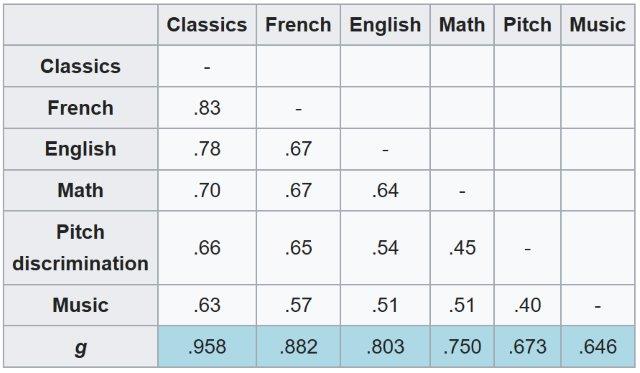
The g factor (also known as general intelligence, general mental ability or general intelligence factor) is a construct developed in psychometric investigations of cognitive abilities and human intelligence. It is a variable that summarizes positive correlations among different cognitive tasks, reflecting the fact that an individual’s performance on one type of cognitive task tends to be comparable to that person’s performance on other kinds of cognitive tasks. The g factor typically accounts for 40 to 50 percent of the between-individual performance differences on a given cognitive test, and composite scores (“IQ scores”) based on many tests are frequently regarded as estimates of individuals’ standing on the g factor. The terms IQ, general intelligence, general cognitive ability, general mental ability, or simply intelligence are often used interchangeably to refer to this common core shared by cognitive tests.[2] The g factor targets a particular measure of general intelligence. From <https://en.wikipedia.org/wiki/G_factor_(psychometrics)>
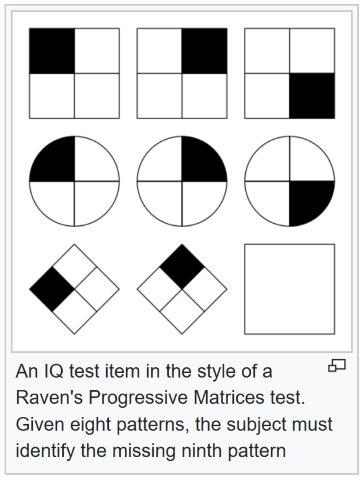
Raven’s Progressive Matrices (often referred to simply as Raven’s Matrices) or RPM is a nonverbal group test typically used in educational settings. It is usually a 60-item test used in measuring abstract reasoning and regarded as a non-verbal estimate of fluid intelligence. It is the most common and popular test administered to groups ranging from 5-year-olds to the elderly. It is made of 60 multiple choice questions, listed in order of difficulty. This format is designed to measure the test taker’s reasoning ability, the eductive (“meaning-making”) component of Spearman’s g (g is often referred to as general intelligence). The tests were originally developed by John C. Raven in 1936. In each test item, the subject is asked to identify the missing element that completes a pattern. Many patterns are presented in the form of a 6×6, 4×4, 3×3, or 2×2 matrix, giving the test its name. From <https://en.wikipedia.org/wiki/Raven%27s_Progressive_Matrices>

BGI (Chinese: 华大基因; pinyin: Huádà Jīyīn), known as the Beijing Genomics Institute prior to 2008, is one of the world’s genome sequencing centers, headquartered in Shenzhen, Guangdong, China. Wang Jian, Yu Jun, Yang Huanming and Liu Siqi created BGI in November 1999 in Beijing, China as a non-governmental independent research institute in order to participate in the Human Genome Project as China’s representative. After the project was completed, funding dried up. So BGI moved to Hangzhou in exchange for funding from the Hangzhou Municipal Government. From <https://en.wikipedia.org/wiki/Beijing_Genomics_Institute>
In 2010 it was reported that BGI would receive US$1.5 billion in “collaborative funds” over the next 10 years from the China Development Bank. In 2013 BGI reported it had relationships with 17 out of the top 20 global pharmaceutical companies. That year it bought Complete Genomics of Mountain View, California, a major supplier of DNA sequencing technology, for US$118 million. From <https://en.wikipedia.org/wiki/Beijing_Genomics_Institute>
Key achievements:
In 2002, BGI sequenced the rice genome which was a cover story in the journal Science.
In 2003 BGI decoded the SARS virus genome and created a kit for detection of the virus.
BGI did the genome sequencing for the deadly 2011 Germany E. coli O104:H4 outbreak in three days under open license. See full list of achievements From <https://en.wikipedia.org/wiki/Beijing_Genomics_Institute>
Huan Ming Yang
Dr. Yang Huanming, also known as Dr. Henry Yang, is one of China’s leading genetics researchers. Yang is Chairman and co-founder of the Beijing Genomics Institute, formerly of the Chinese Academy of Sciences in Beijing, China. Yang’s work include the mapping and cloning of human genes, the sequencing and analysis of the human genome, human genome diversity and evolution, and the ethical, legal, and social issues related to genome research. The study of Yang and his collaborators at the Beijing Genomics Institute on the rice genome made the cover of the April 5, 2002 issue of Science magazine. Yang led a 2000 UNESCO sponsored symposium held in Hangzhou on research ethics that focused on some questionable research projects by foreign researchers in Anhui Province and on strengthening the protection of human research subjects in China. From <https://en.wikipedia.org/wiki/Yang_Huanming>
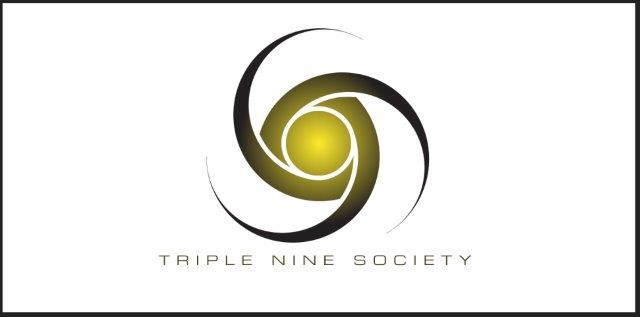
Triple Nine Society (TNS):
TNS is an international high IQ society for adults whose score on a standardised test demonstrates an IQ at or above the 99.9th percentile of the human population. The Society recognizes scores from over 20 different tests of adult intelligence. From <https://en.wikipedia.org/wiki/Triple_Nine_Society>
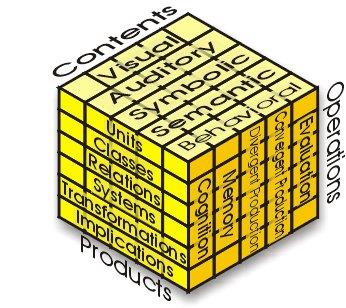
Joy Paul Guilford (March 7, 1897 – November 26, 1987) was an American psychologist best remembered for his psychometric study of human intelligence, including the distinction between convergent and divergent production. He proposed that three dimensions were necessary for accurate description: operations, content, and products. A Review of General Psychology survey, published in 2002, ranked Guilford as the 27th most cited psychologist of the 20th century. From <https://en.wikipedia.org/wiki/J._P._Guilford>
Erik Homberger Erikson (born Erik Salomonsen; 15 June 1902 – 12 May 1994) was a German-American developmental psychologist and psychoanalyst known for his theory on psychological development of human beings. He may be most famous for coining the phrase identity crisis. The Erikson life-stage virtue, in order of the eight stages in which they may be acquired, are:

From <https://en.wikipedia.org/wiki/Erik_Erikson>
Stages of Cell Development:
- A gamete is a haploid cell that fuses with another haploid cell during fertilization (conception) in organisms that sexually reproduce.
- A zygote is a eukaryotic cell formed by a fertilization event between two gametes. The zygote’s genome is a combination of the DNA in each gamete, and contains all of the genetic information necessary to form a new individual.
- An embryo is an early stage of development of a multicellular diploid eukaryotic organism. In general, in organisms that reproduce sexually, an embryo develops from a zygote, the single cell resulting from the fertilization of the female egg cell by the male sperm cell. The zygote possesses half the DNA of each of its two parents.
- A fetus is a stage in the prenatal development of viviparous organisms. In human development, a fetus is a prenatal human between the embryonic state and birth.
- In humans prenatal development is the development of the embryo following fertilization, and continued as fetal development. By the end of the tenth week of gestational age the embryo has acquired its basic form and is referred to as a fetus.
- Birth
21st Century Decision Making
One of the characteristics of successful people is their ability to make quick decisions. It has been said that “successful people make decisions easy, quick and very seldom change, and unsuccessful people take a long time to make a decision then change easily.”
Webster’s dictionary defines “decision” as the quality of being positive and firm, a decisive result! Decision comes from the Latin root “ci-dere” which literally means to cut from. It means when we decide to do something then we need to cut away all other possibilities. Remember the story of Hernan Cortes who sailed from Cuba to Mexico in 1519 with plans to conquer the Aztec empire. He succeeded in conquering the Aztecs but found many other great challenges and difficulties. Many of his crew wanted to sail back to Cuba when Cortes made the decision to burn the ships. This left them no other opportunity but to succeed in this new land which they did forming the little town called Veracruz. Maybe you have some decisions where you need to burn the ships.
“Once you make a decision, the universe conspires to make it happen.”
~ Ralph Waldo Emerson ~
We all know of times when we made decisions quick and with confidence and times when we were completely indecisive. If you can recall I am sure the quick and easy decisions was when you were knowledgeable and confident in the area of decision. Of course confidence is key, and confidence tends to come from competence and clarity. If you are clear about your goals, clear about who you are and have competence in a particular field then I am sure that decisions come easy, you can make them quick with confidence and no need to change.
Let’s have a look at the latest science on Decision Making:
The Science on Decision Making
2014 Allen Edwards Psychology Lectures at the University of Washington
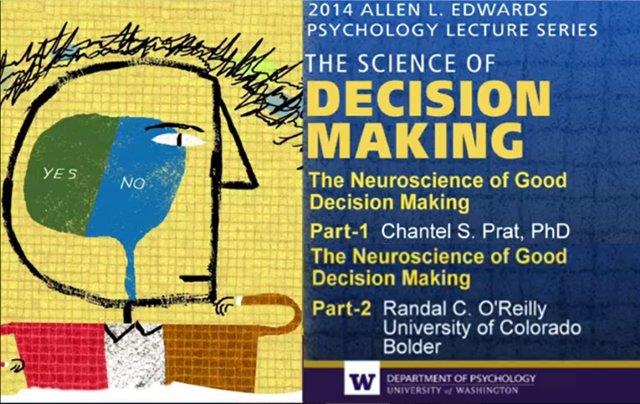
[The Neuroscience of Good Decision Making, Part 2 – 2014]
Professor Randal O’Reilly shares his labs research and insights into Goal Representations and Decision Making processes of the human brain. Quote “According to “Behaviorism” we are the sum of our reward history.” and their research demonstrates the significance of two main phases of Cognitive Function.
- The choosing of a goal (largely a decision making process)
- And Goal Engagement, and when fixed in our brain the pursuit of the goal promotes dopamine bursts when making progress and achieving steps and dopamine dips when moving further away from the goal.
He demonstrates how these systems function with common issues I am sure we can all relate to:
- Why is it hard to start projects? Your brain cares a lot about the costs when you’re in Goal Selection Phase, it is comparing to other things you could be doing and it is very tuned in to how much effort it was to doing that kind of project before and your brain can downplay the costs.
- Why do I feel in or out of control? When a Goal is Engaged our brain is engaged and feel in control but when in Goal Selection and if difficult selecting the goal then everything seem impossible. [Daniel: I am going through this big time now when working on new business model . When the goal is clear and progress is being made it is all good and I am confident but when I am trying to select the next goal everything does seem impossible and low motivation and confidence.]
- Why does science persist with confirmation bias? We just can’t help it. Our brain craves incremental progress. We have an idea, we have engaged that as a goal, we think it is true, we want it to be true, and want progress toward the thing so our brain persists.
[The Neuroscience of Good Decision Making, Part 1 – 2014]
Chantel S. Prat share her research on individual differences and the Go-NoGo pathways in our brain when it involves decision making. Other studies found that the influence of dopamine on the Go & NoGo decision making pathways was significant. That the more the Go pathway is functioning the more the person will make their decision on seeking correct answers and the more the NoGo pathway is functioning the more the person will make decisions by avoiding things that are incorrect.
An excellent lecture series to raise your awareness of how we make decisions.
Kahneman on Intuition in relation to Decision Making
Daniel Kahneman is an Israeli-American psychologist notable for his work on the psychology of judgment and decision making, as well as behavioral economics, for which he was awarded the 2002 Nobel Memorial Prize in Economic Sciences (shared with Vernon L. Smith). From <https://en.wikipedia.org/wiki/Daniel_Kahneman>
Kahneman studies “Systematic errors in judgment and decision making” and shows evidence that our judgments and intuition is not really as good as we like to think it is. There is some debate about how much we can trust in expert judgement and describes a couple of stories, one of a firefighter makes a call to get off a building when soon after the building explodes and the firefighter did not know why he made the call. Another example of a nurse that returns home and see her father and says we need to go to the hospital now and like the previous story she did not know exactly what it was but later learned that she saved her father from having a heart attack.
It is also mentioned that professional athletes have an incredible ability to predict where the ball or people might be two or three critical seconds from now and adjust their actions to meet the situation. Those stories and many others like it make us marvel at the human intuition.
But the data tells a different story. Kahneman claims out of some 150-180 studies on comparing people to a very simple combination of variables (a formula) that the formula wins every time with very little exceptions. That the so called experts at making judgments of picking a stock, what will happen in an election or CIA analysists can’t do any better than you and I and much worse than a simple algorithm.
To understand the difference between the professional athlete and the CIA analyst we have to understand the psychology of intuition which Kahneman explains describing the two main ways of thinking he calls System 1 and System 2:
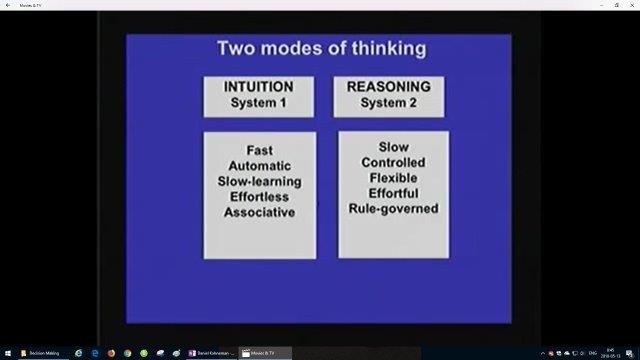
We are all familiar with our conscious and unconscious brains but might not know how they affect our decisions. Kahneman claims there is a lot of literature that is not well-known in the business world that shows how unreliable professional judgment is because of the way these two systems function.
In an interview by author Daniel Pink, Kahneman reveals insights into our decision making with a lot of talk about how algorithms outperform expert judgment. Quote; “In about half the studies, half of the time the algorithms beat the experts and in the other half it’s a draw, there is little to no evidence that expert judgment does better than intelligently constructed formulas.”
It is a little complex to summarize his explanations of these two systems so best to hear it from the author himself so encourage you to read his book “Thinking, Fast and Slow” or watch the lectures listed in the resource section below.
Gigerenzer on Decisions under Uncertainty
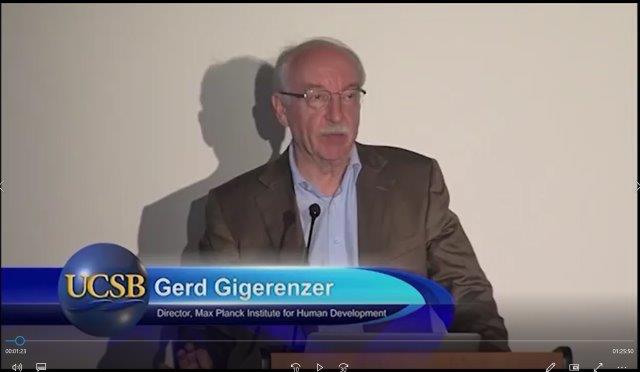
Gerd Gigerenzer is a German psychologist who has studied the use of bounded rationality and heuristics in decision making. Gigerenzer is director emeritus of the Center for Adaptive Behavior and Cognition (ABC) at the Max Planck Institute for Human Development and director of the Harding Center for Risk Literacy, both in Berlin, Germany. From <https://en.wikipedia.org/wiki/Gerd_Gigerenzer>
From Gigerenzer’s lecture [Gerd Gigerenzer Risk Savvy How to Make Good Decisions] Gerd shows us some science that demonstrates heuristics is often most effective with complex problems and high uncertainty.
A heuristic technique, “find” or “discover”, often called simply a heuristic, is any approach to problem solving, learning, or discovery that employs a practical method not guaranteed to be optimal or perfect, but sufficient for the immediate goals. Where finding an optimal solution is impossible or impractical, heuristic methods can be used to speed up the process of finding a satisfactory solution. Heuristics can be mental shortcuts that ease the cognitive load of making a decision. Examples of this method include using a rule of thumb, an educated guess, an intuitive judgment, guesstimate, stereotyping, profiling, or common sense. From https://en.wikipedia.org/wiki/Heuristic >
Dealing with Indecision:
Common Pit Falls in Decision Making:
- An unwillingness or inability to think critically or put the problem in context.
- An unwillingness to think ahead just not make the decision now and let things play out.
- An unwillingness to seek and get advice from people with experience in the area of the decision.
- An unwillingness to be real, with one self and or the situation.
- An unwillingness to be aware of and or discount personal biases.
Pitfall #1:
Of course critical thinking is important in our fast paced, social media driven world. Your decisions should be thoughtful, considerate, encompassing other people, the environment and society as a whole. Ponder the advice given by the experts highlighted in this article, ask yourself big questions and involve other people. In that process you will gained fresh insights and have learn more about yourself and the people your decision affect.
Pitfall #2:
All too often we put the cart in front of the horse then struggle to make decisions. I has been said that decisions are easy when you have all the facts. Don’t be in a rush to make a decision, that is when most bad decisions are made like speeding in a car is when most accidents happen. Get your priorities in order and do the more important things first and Cross that bridge when you get to it.
Pitfall #3:
Seeking advice seems to be a weakness of many, like men asking for directions when they are lost. Another part of being real with yourself. If you don’t have much experience then you not going to have good intuition (Daniel Kahneman) and you won’t be able to make a good decision, take more time to better understand the big picture and or get advice from those that do.
Pitfall #4:
Some of the problem is we get ourselves in situations where we bite off more than we can chew. This often comes when we are trying to be someone that we are not or do things that we really have no business doing. This is when we need to be real with ourselves and just walk away from that situation.
Pitfall #5:
I put bias at the end because this is probably one of the biggest factors that affect people from making good decisions. Possibly unaware of their many bias and our brains quick conclusions that are not always in our best interest. To that I dedicate the following information to help get a better handle on our personal biases:
Bias
Another key factor in decisions is being more aware of the many biases that move you, mostly unconsciously to make decisions that are usually not moving you toward a goal. The list of biases is quite long, see the below graphic and list of [Cognitive Biases on Wikipedia.]
This YouTube video [12 Cognitive Biases Explained – How to Think Better and More Logically Removing Bias] does an excellent job at explaining the 12 more common biases. This is a great video to watch and keep bookmarked for a review once in a while to remind us of our biases. Here is their list but be sure to watch the video for a full explanation of each point.
- Anchoring bias
- Availability heuristic bias
- Bandwagon effect
- Choice supportive bias
- Confirmation bias
- Ostrich bias
- Outcome bias
- Overconfidence
- Placebo bias
- Survivorship bias
- Selective perception
- Blind spot bias
Jennifer Whelan
[Unconscious Bias Jennifer Whelan-All About Women 2016]
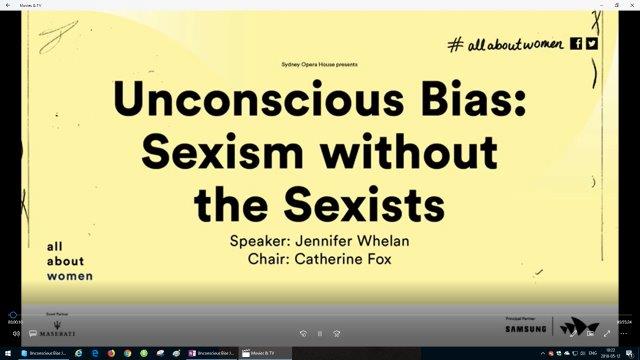
I have added Jennifer Whelan’s talk because she adds more science, two, she ties in Daniel Kahneman’s research on System 1 & System 2 into the highly relevant subject of gender in this ever growing political correct world. Jennifer asks a sexist question in the context of our sophistication, progressive world of people that like to think they are above all that racism, gender, sexist bias stuff so asks, Is it really possible to be truly egalitarian?
Understanding that our brain loves to put things in categories, and once we have a category our brain finds all the patterns that fit that category, then our confirmation bias kicks in to verify those patterns making judgments and decisions that are likely wrong and not helpful for you.
An amusing illustration in the above two screen shots with the fist slide being the actual distribution of the heights between men and women, men on average being a little taller with many in-between, but when you ask people to intuitively draw the distribution it comes out like the below slide which indicates “all women are shorter than all men”. It is funny how we stereotype and this is what our stereotype goggles (System 2) do, its unconscious and crosses all leadership stereotypes, and other gender related factors.
We don’t see people as they are, we see people as we are. We see them through our filters, the patterns in our brain. Quote; “Stereotypes drive our unconscious perceptions of warmth and competence and these dimensions are gendered.”
A truly informative and educational talk directly related to decision making. I hope you take the time to listen to how and why we unconsciously form gender biases and find out if you are a sexist.
A Decision Making Process:
Understanding the difference between conscious (System 2) and unconscious (System 1) modes, the many biases that influence and make quick conclusions, reflect on our boxes and categories and we should be in a better position to make better decisions.
If some critical thinking is necessary then the following questions should help get a broader perspective especially if you’re dealing with a problem or decision in an area you have no expertise so don’t trust your intuition or a high uncertainty as described above.
- Does this decision bring you closer or further away from your goal? Yes or no
- What is your gut feeling, listen to that inner voice? Yes or no
- Weight the pro’s and con’s, create a 2 column chart and list as many positives and negatives you can simply to gain a broader perspective, Gerd calls it old school but still very powerful depending on the decision.
- Hindsight is always 20/20. Reflect back and think about how similar situations and how they worked. Positive or Negative?
- Look at the circumstances surrounding this decision:
a. Are doors open or closed? Yes or no
b. Do I have the emotions (ability to manage) to deal with this? Yes or no - Look for guidance, talk to some experts on the subject and be real, be honest and be humble as there is nothing wrong with not be sure what to do and a lot wrong with making stupid mistakes.
- Re-watch the resources if you haven’t already internalized the concepts and apply them on a regular bases.
- Don’t be afraid to just not make the decision and wait some time, getting other more important tasks done first.
I have used this many times before and found it to be very helpful for making decisions but what became more helpful was the point of going through a process, having questions to engage critical thinking, pondering my biases and through the process and the more I made decision the better I got.
Conclusion:
Having gone through being a regular guy making mostly bad decisions not based on any solid evidence or expertise, being driven more from biases because of being totally unaware of to a highly effective decision maker able to make decisions quickly and easily it seems those who have a well formed world view and confidence in themselves as a human, comfortable in their own skin and a good sense of reality with awareness of their personal biases make the best decisions effortlessly and accurately.
What made the most difference in my life was having clear goals, a clear mission for direction and having my “why’s” sorted out. From that I was able to prioritize the important stuff so only made decision when I crossed those bridges and then it was easy, quick and no need to change.
I would like to conclude with some comments from Kahneman near the end of the interview by Daniel Pink [Daniel Kahneman Wharton People Analytics Conference 2016]
“There is so much random activity in this world that you have to be prepared for luck. One thing the luck message brings is to be more compassionate of others failures in people. The constant thing we do of trying to figure out what people have done wrong, because things have gone wrong, is something we do far too much of. Over explain and over blame.”
Resources:
2014 Allen Edwards Psychology Lectures at the University of Washington
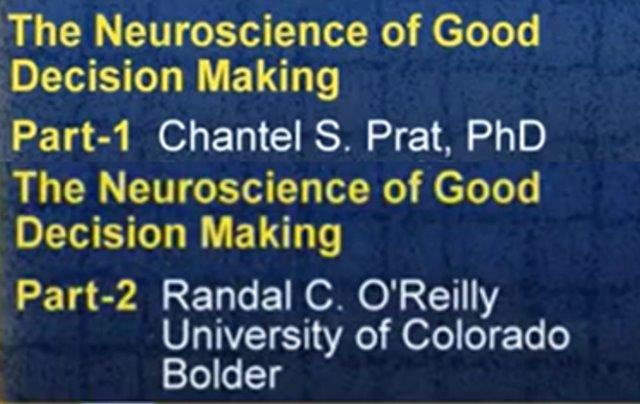
[The Neuroscience of Good Decision Making, Part 1 – 2014]
[The Neuroscience of Good Decision Making, Part 2 – 2014]
Daniel Kahneman
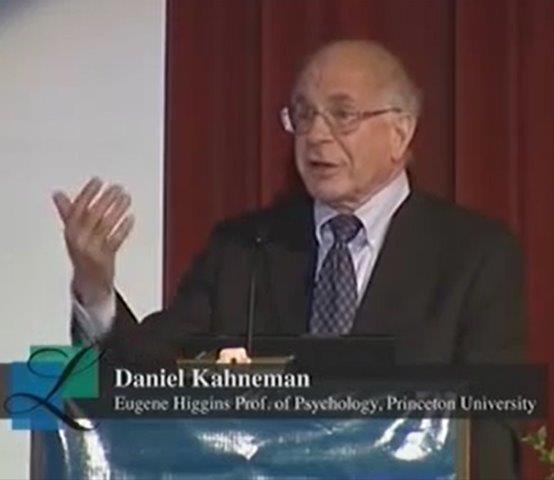
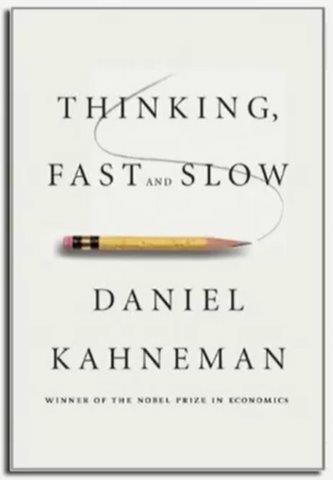
[Daniel Kahneman – Thinking, Fast and Slow _ Talks at Google] 2011
[Daniel Kahneman Explorations of the Mind Intuition] 2007
[Daniel Kahneman Wharton People Analytics Conference 2016] 2016
[Daniel Kahneman – The Ingredients for Expert Intuition – Insights for Entrepreneurs – Amazon]
Gerd Gigerenzer
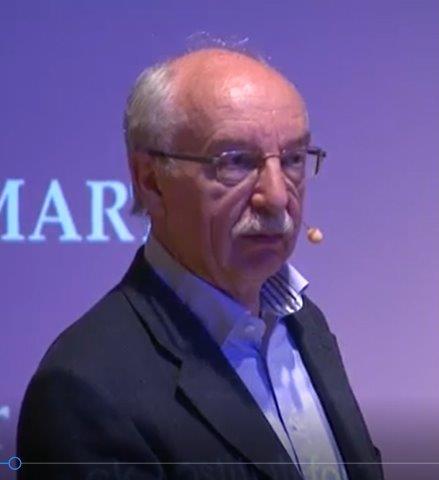
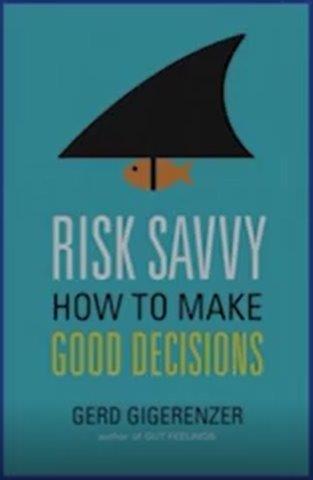
[How do smart people make smart decisions _ Gerd Gigerenzer _ TEDxNorrköping]
[Gerd Gigerenzer Risk Savvy How to Make Good Decisions]
Jennifer Whelan

[Unconscious Bias Jennifer Whelan-All About Women 2016]
Excellent talk and bang on for the current climate of Politically Correct non-sense embracing the world. Find out if you are a “Sexist”.
University of Edinburgh School of Philosophy
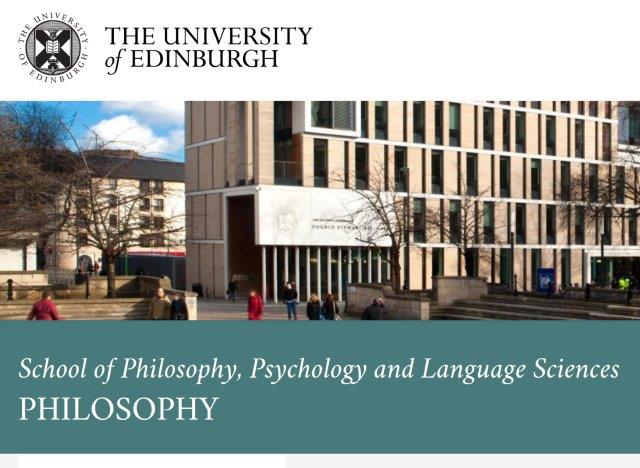
MOOC: Intellectual Humility: Theory
About the Course
Intellectual humility is important. Often when faced with difficult questions people are prone to dismiss and marginalize dissent. Political and moral disagreements can be incredibly polarizing, and sometimes even dangerous. And whether it’s Christian fundamentalism, Islamic extremism, or militant atheism, religious dialogue remains tinted by a terrifying and dehumanizing arrogance, dogma, and ignorance. But what is intellectual humility, anyway? And how do we develop such a virtue? And why do people seem so drawn toward intellectual arrogance? These are big, important questions! And thankfully, over the past several years, a growing number of psychologists, philosophers, theologians, and educationalists have been wrestling with these questions and are now suggesting some big, important answers. From <https://www.ed.ac.uk/ppls/philosophy/research/impact-and-outreach/free-online-courses/intellectual-humility>
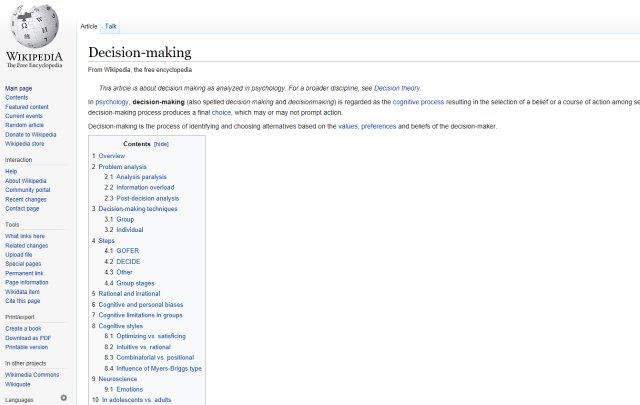
And of course the Wikipedia Page has an excellent overview which makes a good initial study.
https://en.wikipedia.org/wiki/Decision-making
The Microbiome & What it Means to Us
The Human Microbiome is an Eco-System:
Our Microbiome is an “ecological community of symbiotic and pathogenic microorganisms” found in and on all multicellular organisms studied to date from plants to animals. The microbes includes bacteria, archaea, fungi and viruses.
Many kinds of eco-systems including David Latimer’s sealed terrarium that he first planted 53 years ago and has not been watered since 1972 yet continues to thrive in its sealed environment.
Microbes are the oldest forms of life on earth:
Researchers at UCLA and the University of Wisconsin–Madison have confirmed that microscopic fossils discovered in a nearly 3.5 billion-year-old piece of rock in Western Australia are the oldest fossils ever found and indeed the earliest direct evidence of life on Earth. [https://news.wisc.edu/oldest-fossils-found-show-life-began-before-3-5-billion-years-ago/]
First Observation of Living Microbes:
Microorganisms are invisible to the human eye so we didn’t know they existed until the invention of the microscope. The smallest of bacteria is about .2 μm to the largest about 50 μm (micrometer = 1 millionth of a meter or one thousandth of a mm), Viruses can be as small as 100 nanometers. (one billionth of a meter or 1,000,000th of a mm)
First time any microorganisms were identified was by van Leeuwenhoek in 1683 who used single-lensed microscope of his own design. He analyzed some plaque from his teeth and wrote the above words to his colleges at The Royal Society. A largely self-taught man in science, he is commonly known as “the Father of Microbiology”.
The Human Microbiome
The Human Microbiome Project (HMP) was a United States National Institutes of Health (NIH) research initiative to improve understanding of the microbial flora involved in human health and disease. Launched in 2008, the first phase (HMP1) was a five-year project that focused on identifying and characterizing human microbial flora. The second phase, known as the Integrative Human Microbiome Project (iHMP) launched in 2014 with the aim of generating resources to characterize the microbiome and elucidating the roles of microbes in health and disease states. The program received $170 million in funding by the NIH Common Fund from 2007 to 2016, with the iHMP closing in 2017. From <https://en.wikipedia.org/wiki/Human_Microbiome_Project>
The decrease of Infectious Disease and increase of what is called modern diseases of Allergic & Autoimmune Diseases and the correlation to the human microbiome. This is one of the goals of the NIH funded Human Microbiome Project (HMP).
[The Human Microbiome Project – Lita Proctor]
[The Human Microbiome Project – Lita Proctor PPT Slides 2018-02-06]
The Microbiome
Erica Sonnenburg claims this is a real image (cross section of the colon stained with fluorescent probes) and won 2nd place at some Nikon Image Contest. The image shows the colon microbes on the upper left, the green layer is the gut mucus layer and the blue being human cells.
It is this mucus layer that protects the human cells from the microbes. Leaky Gut Syndrome is when this mucus layer becomes permeable and microbes infect human cells… [Disclaimer: Unlike the scientific phenomemon of increased intestinal permeability (“leaky gut”), claims for the existence of “leaky gut syndrome” as a distinct medical condition come mostly from nutritionists and practitioners of alternative medicine is a fad diagnosis using the alleged condition as an opportunity to sell a number of alternative-health remedies. From <https://en.wikipedia.org/wiki/Leaky_gut_syndrome>]
The opening of intercellular tight junctions (increased intestinal permeability) can allow passage of microbes, microbial products, and foreign antigens into the mucosa and the body proper. This can result in activation of the immune system and secretion of inflammatory mediators. Increased intestinal permeability is a factor in several diseases, but the cause–effect relationship between increased intestinal permeability in most of these diseases is not clear. From <https://en.wikipedia.org/wiki/Intestinal_permeability>
The microbiome is more than just a bunch of microorganisms living on our body and in our gut! It is integral to many of our organs, our Brain and crucial in our Immune System. This is brand new science that has only been possible since the extreme drop in costs for DNA sequencing:
– Adds 10 times more cells. (DNA)
– Adds 100 times more genes.
– Communicates and exchange molecules with human cells.
– Bonnie Bassler’s work shows that it communicates with itself and other microbes controlling various genes and activities called Quorum Sensing.
– It interreacts with our Immune System strengthening or weakening it.
– It helps us with processing foods like starches, fibers, grains and much more.
– It literally interacts with our genes to make us who we are.
– We share our microbiome in all the environments we interact with and amongst ourselves and our pets.
– There is much discussion about how and whether to treat the microbiome as another organ or organ system of the human body.
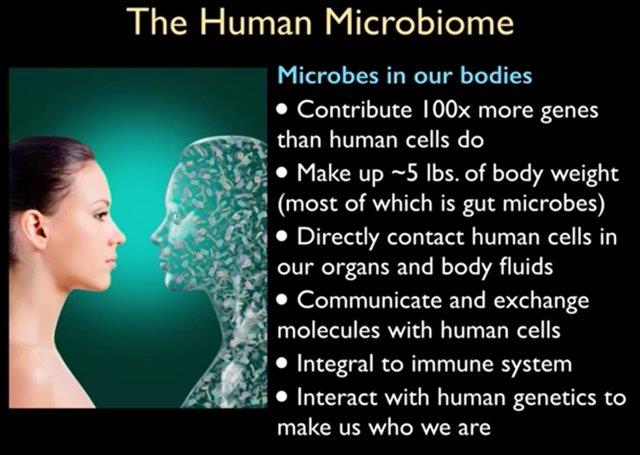
[Katherine Pollard Decoding the Human Microbiome] – 2016 Stanford School of Medicine
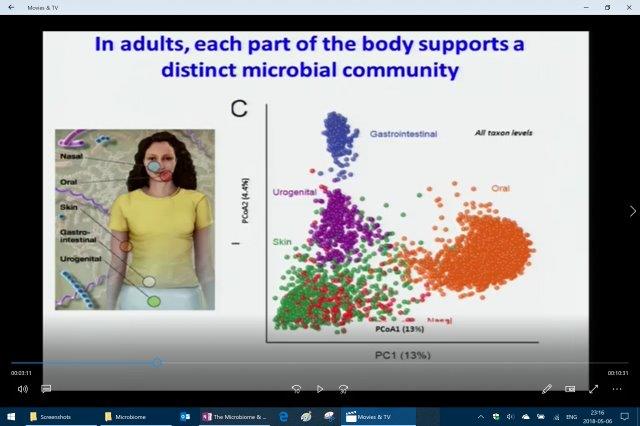
Like a finger print the Human Microbiome is totally unique to every individual, although sharing a large volume of species the difference between each of us is unique. Rob Knight’s lab has identified the microbiome of every person is unique and they can match a mouse and keyboard to the person by swabbing the keyboard in the well-known “Keyboard Study”.
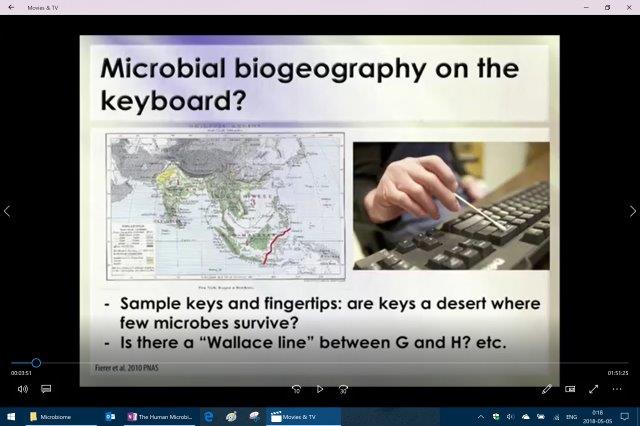
[The Human Microbiome – Eric Alm, PhD, Martin Blaser, MD, John Cryan, PhD, Rob Knight, PhD] 2013 Eric Alm in a study “A Year in My Microbiome” tracked 300 different factors (everything they could think of significant enough to record and measure.)
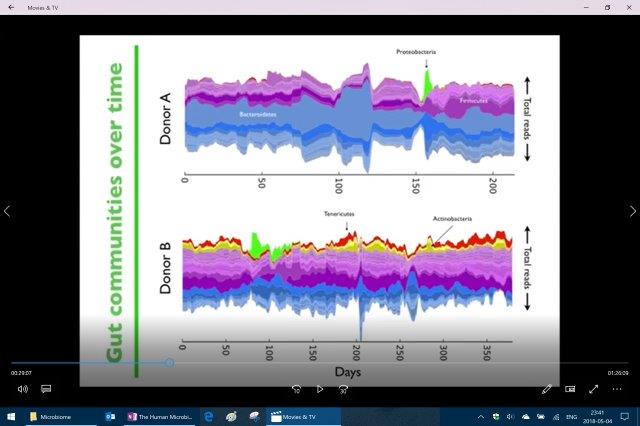
[Eric and his students microbiome analysis]
Interesting points he discusses here that even though the microbiome is very different between individuals and that the microbiome changes day-to-day it doesn’t really change that much month-to-month or year-to-year. That the microbiome is very stable over time to a degree. (Baby’s changes into and adult then into an elderly biome.)
The Microbiome & Human Health
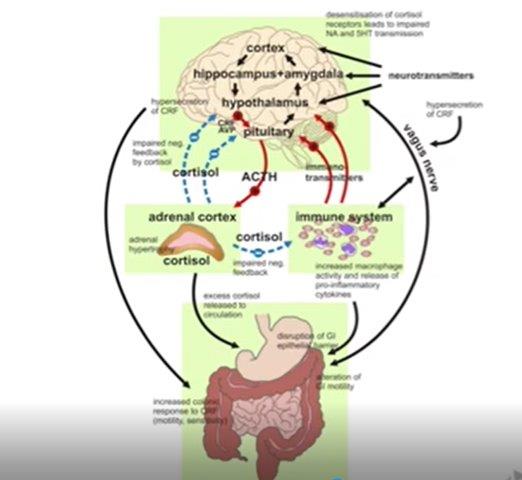
There appears to be strong connection between the Gut Microbes & Brain: Science is trying to better understand the effect on the brain, mood, cognition, emotion and perhaps visceral pain.
Problems are numerous:
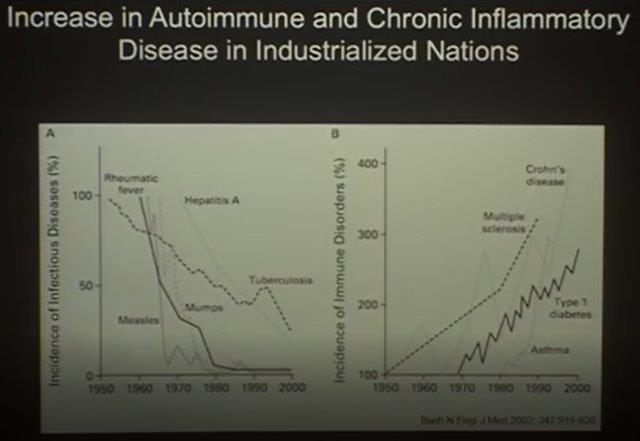
Lots of paper to point out the sharp decline of infectious diseases due to hygiene, vaccinations, and antibiotics simultaneously an equally sharp rise of autoimmune and chronic inflammation disease:
– Asthma
– Allergenic responses
– Crohn’s disease, Irritable Bowel Syndrome
– Type 1 & Type 2 diabetes (especially in young children)
– Multiple Sclerosis
– Obesity
Solutions:
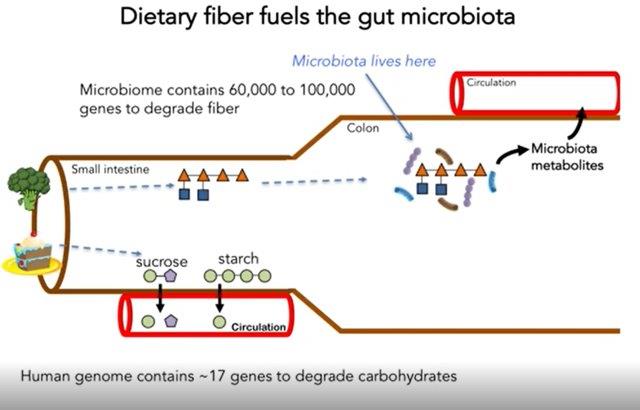
Dietary fiber or roughage is the indigestible portion of food derived from plants. It has two main components:[1]
-Soluble fiber, which dissolves in water, is readily fermented in the colon into gases and physiologically active by-products, and can be prebiotic and viscous. This delays gastric emptying which, in humans, can result in an extended feeling of fullness.
-Insoluble fiber, which does not dissolve in water, is metabolically inert and provides bulking, or it can be fermented in the colon. Bulking fibers absorb water as they move through the digestive system, easing defecation. From <https://en.wikipedia.org/wiki/Dietary_fiber>
Dietary fibers can act by changing the nature of the contents of the gastrointestinal tract and by changing how other nutrients and chemicals are absorbed. Some types of soluble fiber absorb water to become a gelatinous, viscous substance which may or may not be fermented by bacteria in the digestive tract. Some types of insoluble fiber have bulking action and are not fermented. Lignin, a major dietary insoluble fiber source, may alter the rate and metabolism of soluble fibers. Other types of insoluble fiber, notably resistant starch, are fermented to produce short-chain fatty acids. From <https://en.wikipedia.org/wiki/Dietary_fiber>
Probiotic (Lactobacillus) experiments in mice showed significant response over multiple tests.
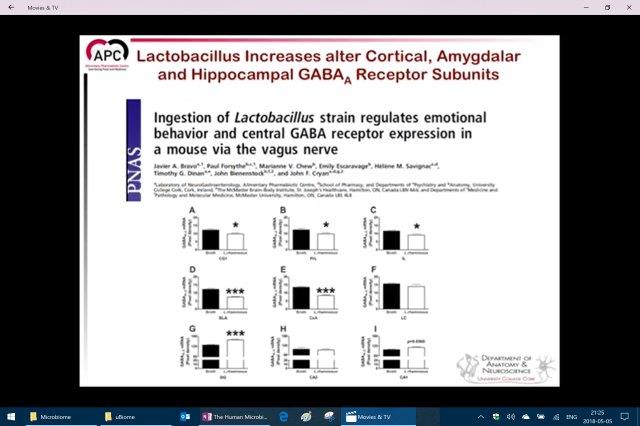
Scientists Eric & Justin Sonnenburg’s strategy for their family’s health:
– They have increased the fiber in their diet.
– They built a nice vegetable garden in their front yard and encourage the kids to play in the dirt, eat the vegetable straigth from the plants.
– They have added a small family dog that is allowed in and out of the house, on the furniture, licking the kids, etc.
If worse comes to worse – Eat Shit!
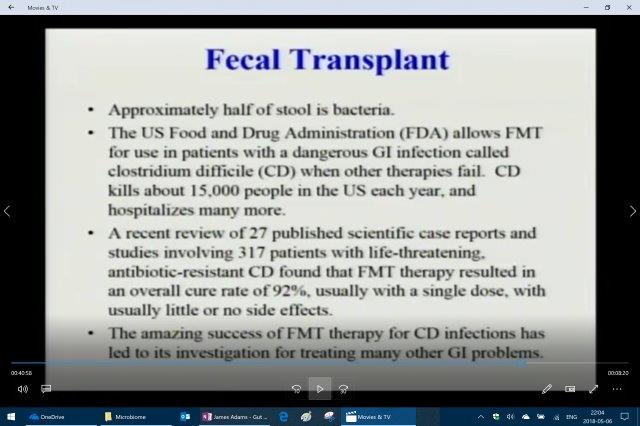
[Gut Bacteria, Diet, Essential Fatty Acids, Probiotics, and Fecal Transplants – James Adams, PhD]
– Probiotics: (4 studies) Adams claims a little affect but hard to really quantify.
– Fecal Microbiota Transplant (FMT): 92% cure rate making it the most successful therapy for Clostridium Difficile (C-Diff or CD)
Fecal microbiota transplant (FMT), also known as a stool transplant, is the process of transplantation of fecal bacteria from a healthy individual into a recipient. FMT involves restoration of the colonic microflora by introducing healthy bacterial flora through infusion of stool orogastric tube or by mouth in the form of a capsule containing freeze-dried material from a healthy donor. From <https://en.wikipedia.org/wiki/Fecal_microbiota_transplant>
The results expressed by doctors and patient’s is simply amazing. Patient’s on their death bed after tons of antibiotic treatments, hospitalization, huge costs and suffering are cured permanently by eating a little shit from someone else. Almost no side effects, cheap, natural, easy and cured at the highest rate of any other medical therapy!
My Interest:
– Understanding our microbiome related to our health. (Daughter)
– Understanding our microbiome related to our environment. (The Built Environment)
– Understanding our microbiome related to where we live. (Are China microbes bad for us?)
Our Health:
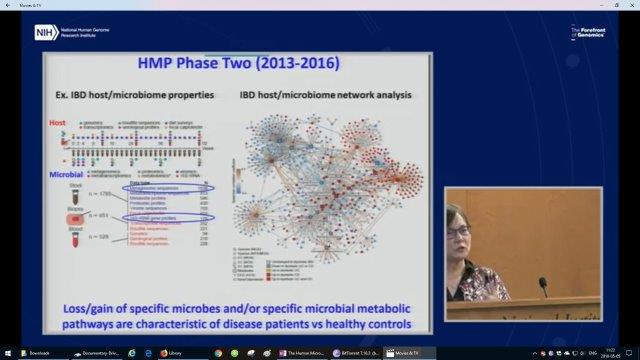
Part of the result of the HMP-2 was that the human microbiome is much more complex than previously understood but what became clear in this 10 Year Study is that the loss/gain of specific microbes and/or specific metabolic pathways are characteristic of diseased patients verses healthy patients suggesting the significant role our microbiome plays in health and disease.
Our Environment: The Built Environment
[Jessica Green Good germs make healthy buildings – TED Talk]

In collaboration with AutoDesk, Jessica’s lab sampled over 300 rooms in this building and built a model of the microbial composition. Interesting, and much like the body different rooms (bathrooms for example) share similar microbes but the microbial community from offices to classrooms, to bathrooms are distinct. Similar to the body where many sites have similar community but the different sites have their distinct communities.
Microbes are dispersed around by people and by air.
Jessica looked at the air handling units from different parts of the building and like the rooms, particular air handling units had same communities while the air handling unit in a different part of the building had a distinct community.

At this part of the talk Jessica describes comparing the microbial community to the outside air, building rooms that were blocked off from air ventilation at night compared with the day when air is being moved. The rooms that were blocked off when entered the next day had a strong smell and their data suggesting it was from leaving behind the air born bacteria soup from the people the day before.
Compare this to rooms with a ventilation system that allowed air in throughout the night they could see the microbial community tracked the outdoor air microbes much closer. The ventilation design helped washed away the buildings resident microbial landscape.
[Daniel comment: This is what Johannes and I experience with the Air Purifier’s we are testing that they “wash or scrub” the resident air leaving a nice feeling, smell-less air that seems clean and important being as we live in China with all that it brings.]
[The Human Microbiome – Eric Alm, PhD, Martin Blaser, MD, John Cryan, PhD, Rob Knight, PhD] 2013
(X-Axis is time and Y-Axis is Species) Here Eric Alm’s Human Gut Ecology Project Alm describes when his student went to Bangkok for a month during this study his microbiome changed almost immediately when arriving in Bangkok indicated in Red & Blue (different species) and almost immediately went back to normal when returning to the US.
Above Katherine talks about very distinct strains of bacteria (Eubacterium rectale) and its presence in different countries and pointed out that Europe and NA show a little bit of a mix but in China and Africa very distinct. [37:33 min mark]
[In Katherine Pollard Massive Data Sheds Light on Your Microbiome _ Talks at Google at the 38 min mark discussing this map above finding a “geographic signal with microbes”]
Question:
If microbes are cosmopolitan, then what effect do they have on foreigners?
Are the microbes in China suitable to a white western foreigner? Could they be beneficial, strengthening our diversity or might they be unhealthy being species we didn’t evolve with and possibly messing up gene expression, digestion or immune system function?
Observation:
It seems that most the foreigners health appears to be deteriorate very fast. My personal health decline was dramatic but attribute a lot of cause to a problem with too much smoking and drinking. I also feel that China is hard on westerners for relatively poor food, water, air quality. The soils seem depleted with low biodiversity. Heavy air, light and noise pollution and negative environmental psychology all draw on our reserves now I am wondering about the effect of China microorganisms. Some microbiome research suggests that environment and geographic location harbor particular strains or species that may add a negative influence health to the western life?
My Family’s Microbiome Testing:
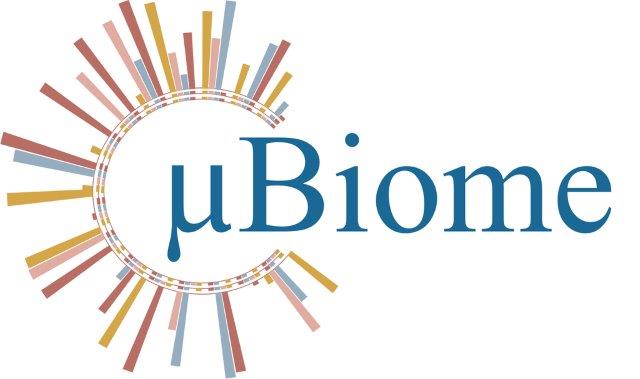
uBiome is a biotechnology company based in San Francisco that has developed key technology to sequence the human microbiomes. The company was founded by Jessica Richman and Zachary Apte who were scientists in the California Institute for Quantitative Biosciences. The company has proprietary machine learning algorithms that analyze the sequence data and compare it with the company’s proprietary database of microbiomes, built from the samples that partners and single customers send to them, and web-based software that allows individuals to view their microbiome and make certain comparisons. From <https://en.wikipedia.org/wiki/UBiome>
Purchased 3 Gut Kits for the family in 2016:
The kits were shipped to China no problem (empty) but after taking stool samples taken no shipping company would take them. Tried all shipping companies and various tricks but no go. Second samples taken using the spare tubes May 2017 and a friend took out of China them back and shipped to uBiome from Canada.
Comparative Data:
Comparing your sample compared to the average of all samples of this type.
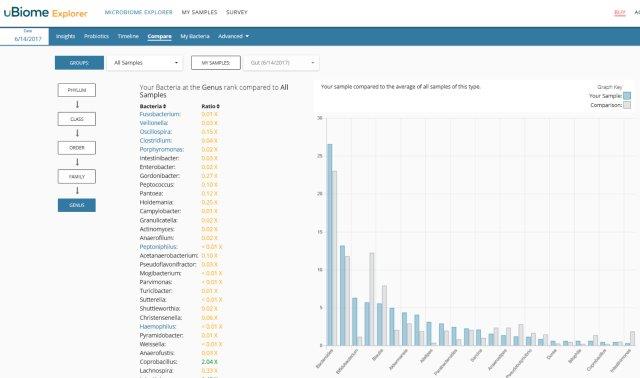
Some other cool features of uBiome dashboard:
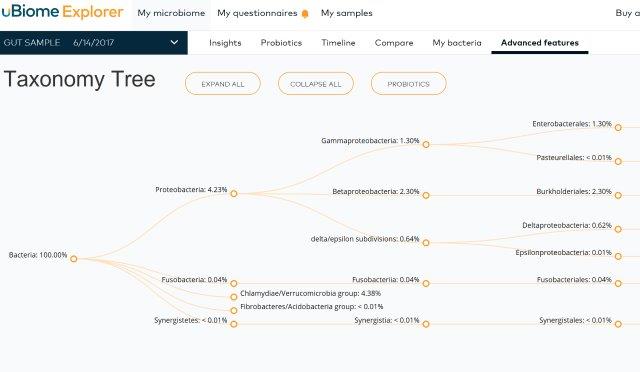
Results from Study & Testing and Reality:
– All indicators show normal and comparable with the uBiome Database.
– Understanding the importance and role of the microbes we made adjustments and monitoring results.
– Diet changes
– Environment changes
– Continuous study and testing (Will get sampling done every few years, or if a major change in environment or health.)
Diet:
We have modified our diet to help stimulate or support our microbiome. Other than a good variety of foods as fresh as possible to including;
– Added a supplement Probiotic Ultra 25 Complex by GNC
– Found a nice new brand of juice claiming microorganisms.
– Switched to a Quality Aged Cheese
– Lot’s of Yoghurt
– Olives (Prefer fermented but settling for the vinegar preserved)
– Pickles (Prefer fermented but settling for the vinegar preserved)
– Fresh squeezed juice. (Multiple fruits)
– Need to focus on dietary fiber; clarify which are accessible, increase intake, and monitor.
Looking for but not able to find:
– Sauerkraut (fermented, non-vinegar)
– Peppers (fermented, non-vinegar)
– Onions (fermented, non-vinegar)
– Organic meats (frozen)
– Organic powders and or spices
– Would love to import some wild game meat from Canada. (Moose, Dear, Elk.) Anyone reading this with access to this kind of food I would be happy to import and distribute in China. (I have full capability.)
Environment:
The Ecosystem of the Built Environment (Our homes and offices where we spend most of our life.)
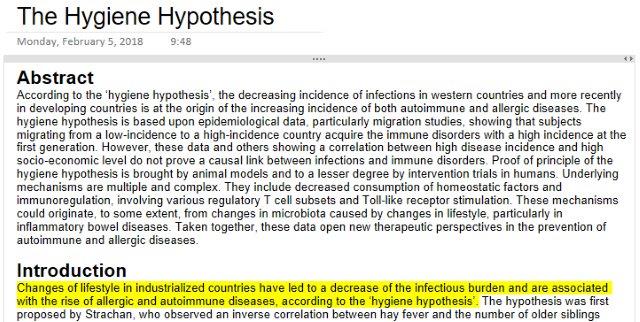
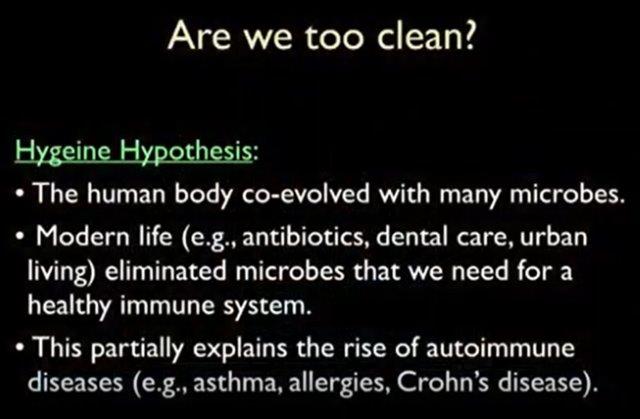
Being quite aware of this hypothesis:
– Changing of our washing and cleaning habits. No longer use any chemicals except a bit of bleach for known problems areas. (Dog pee/poo on floor and toilet, or if mold forms but don’t have that problem anymore.)
– Added lots of plants and animals with constant interaction.
– Get out to seaside and mountains and play in as much nature as we can although I very much doubt if the nature setting I can expose my family to are beneficial in this country because they seem so depleted of biodiversity with 5000 years of Chinese stomping around on it.
Continued Study & Observation:
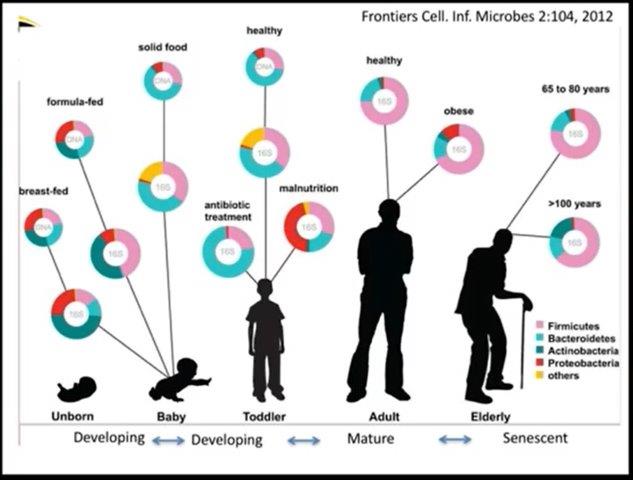
Because our microbiome changes with environment, diet, health and age;
– We will continuously get sampling done every few years, or if a major change in environment or health.
– We will continuously monitor our health, especially daughter for any of the modern diseases appearing so we can deal with them immediately.
Other Interesting Facts on the Microbiome
Evolving & Disappearing Microbes:
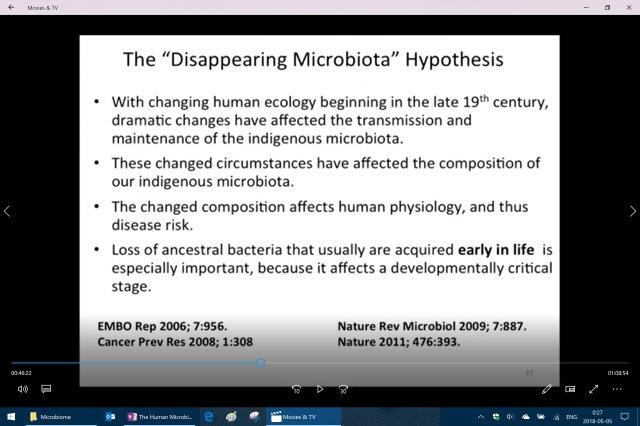
Martin Blaser has demonstrated that a particular taxa h.pylori has been with humans, 100% of humans for 100,000 years and has been on a slow decline to where now only 6% of children have this bacteria and appears it will be gone in a few generations.
Air Pollution & Pathogens:
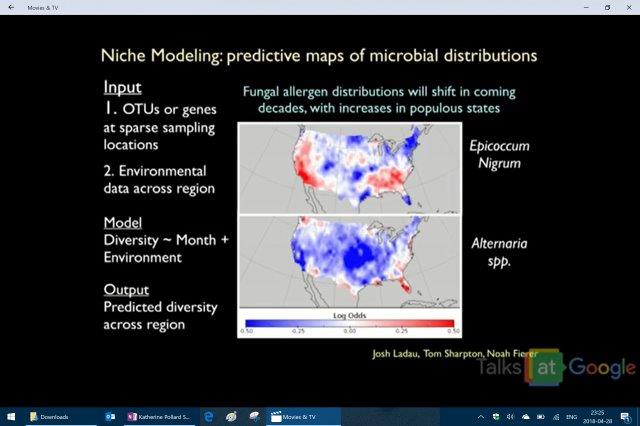
[Katherine Pollard Decoding the Human Microbiome]
[42 min mark] Katherine Pollard talks about as the earth warms (global warming) the microbes change and actually will like the warmer weather and that will have consequences for us. Pollard’s lab is starting to create models to do predictions with different parameters.
Fungal allergens in air will change as the climate changes (1000 homes project) and some pathogens like Epicoccum Nigrum a wicked pathogen that can kill immune deficient humans. Their model above shows the areas most affected in red.

“Microbiota molecules resemble that of drugs leaving us wonder about the effects they have on our bodies, moods, brains and diseases.”
Antibiotic Fed Animals
Martin Blaser made some interesting comments on the point of feeding our animals antibiotics to grow them fat so have to wonder about what is happening to our kids. We know that trace amount of those antibiotics remains in our foods so really should research what effect that is having if any.
Probiotics
Martin Blaser said right now, I’m actually a big believer in probiotics; I think that’s going to be part of the future of medicine, that we’re going to understand the science of the microbiome well enough so that we can look at a sample from a child and say this child is lacking such-and-such an organism and now we’re going to take it off the shelf and we’re going to give it back to that child. … Just as today the kids are lining up for the vaccines, in the future, maybe the kids are going to be drinking certain organisms so that we can replace the ones that they’ve lost. From <https://www.npr.org/2014/04/14/302899093/modern-medicine-may-not-be-doing-your-microbiome-any-favors>
Quorum Sensing

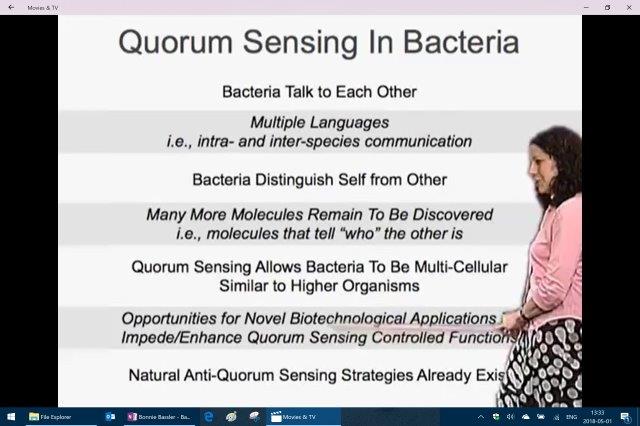
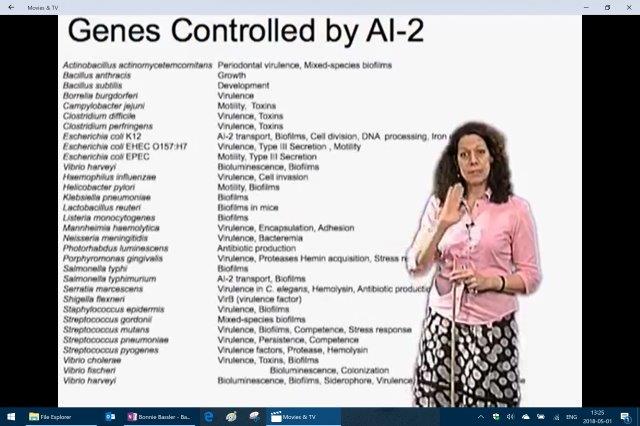
Bonnie Bassler and her lab is one of the leader in the understanding how bacteria communicate with each other and act as a group to affect us and our health. Bassler now claims that it is very clear that bacteria play an important role is gene control and or regulation as the above list demonstrates. (Bacteria on the left and gene function on right.)
State of the Science:
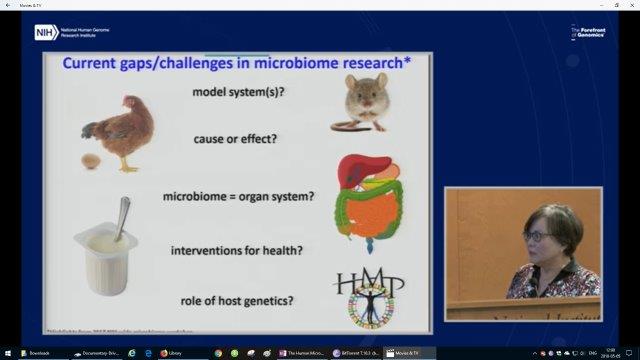
The above slide demonstrates the gaps or weakness in the microbiome studies:
– Most of the research is using mouse models, not humans. Despite the similarities we are very different.
– They are not able to really determine causality.
– There is much discussion about how and whether to treat the microbiome as another organ or organ system of the human body.
– Role of diet and interventions is still very unclear. [Daniel: Despite the numerous claims from entrepreneurs and their health products including probiotics.]
– The role of genetics and gene interaction still very unclear. [Daniel: Though there is lots of evidence that microbes do play a role in our gene of activating/deactivating and even gene regulation.]
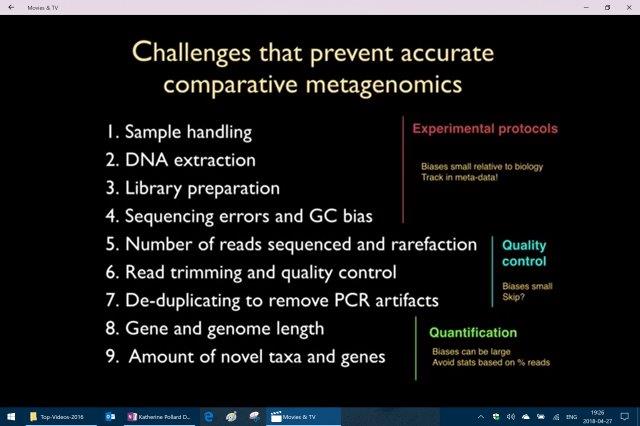
[Katherine Pollard Decoding the Human Microbiome] – 2016 Stanford School of Medicine
Talks about how “bias” affecting results and a huge need to be aware of that when looking at data. She lists many points that affect or prevent accuracy. For us laymen we need discernment, and realize without an understanding of how this science works we may read a paper thinking its accurate when in fact it is not. (Many factors influence accuracy including bias on reading data, sample quality, sample size, contamination, and many other factors would be critical to understand the knowledge obtained.)
[Daniel comments: Other science I have watched showed how in the past scientific papers produced by reputable scientists and qualified labs published in top peer reviewed journals have come out with things like “scientists have identified the gene for “obesity, speech, diabetes, on and on” only to find out later that is simply not 100% accurate.]
Leading scientists say the media has mislead us and it is much more complex than being able to point to a single gene and make claims. We now have expanded our understanding and realize multiple genes, environment and now random chance all play a significant role let alone the interaction with the millions of genes and cells from of our microbiome. (Robert Sapolsky – The traditional “Nature vs. Nurture” debate now has a third component of chance. Random chance is now playing a strong role making behavior much more complex increasing variability.)]
Comments on Microbiome Company Ethics/Claims:
Erica Sonnenburg said that she has seen some unbelievable claims from some of these companies. One she says claimed to make a custom Probiotic based on your microbiome which she says is absurd, and has no idea where they get that information from because she and her lab think that is impossible at the current state of knowledge.
Resources:
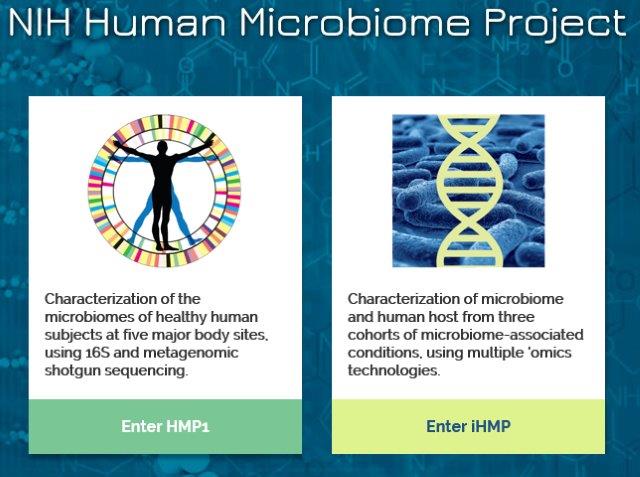
The Human Microbiome Project (HMP) [https://hmpdacc.org/]
The Human Microbiome Project (HMP) was a United States National Institutes of Health (NIH) research initiative to improve understanding of the microbial flora involved in human health and disease. Launched in 2008, the first phase (HMP1) was a five-year project that focused on identifying and characterizing human microbial flora. The second phase, known as the Integrative Human Microbiome Project (iHMP) launched in 2014 with the aim of generating resources to characterize the microbiome and elucidating the roles of microbes in health and disease states. From <https://en.wikipedia.org/wiki/Human_Microbiome_Project>
HMP results from the now completed 10 years project reported to the National Advisory Council for Human Genome Research committee meeting.
– [NIH Human Microbiome Project An Update – Eric Green 2013]
– [The Human Microbiome Project – Lita Proctor]
– [The Human Microbiome Project – Lita Proctor PPT Slides 2018-02-06.pdf]
Bonnie Lynn Bassler, Ph.D is an American molecular biologist. She has been a professor at Princeton University since 1994. In 2002, she was awarded a MacArthur Fellowship. She has won the Wiley prize in Biomedical Sciences in 2009 for “pioneering investigations of quorum sensing, a mechanism that allows bacteria to “talk” to each other to coordinate their behavior, even between species.
Bassler’s Lectures:
– [The Secret Language of Bacteria – An ASM Microbes After Hours Event]
– [Bonnie Bassler-How bacteria talk-TedTalk]
– [Bonnie Bassler (Princeton) Part 1 Bacterial Communication via Quorum Sensing]
– [Bonnie Bassler (Princeton) Part 2 Vibrio Cholerae Quorum Sensing and Novel Antibiotics]
Rob Knight:
Rob Knight is a professor at the University of California, San Diego and the co-founder of the American Gut Project. he is also a co-founder of the Earth Microbiome Project. His lab’s research involves the development of laboratory and computational techniques to characterize the microbiomes of humans, animals, and the environment.
– [Rob Knight How our microbes make us who we are – TED Talk]
– [From the Human Microbiome Project to the Earth Microbiome Project – Rob Knight]
– [Establishing causality in microbiome studies – Rob Knight 2017]
Justin & Erica Sonnenburg:
– [Understanding The Microbiome, Erica Sonnenburg, PhD]
– [Your Microbiome What Is It, and How Can It Help or Hurt You]
Katherine Pollard:
– [Understanding The Microbiome, Erica Sonnenburg, PhD]
– [Your Microbiome What Is It, and How Can It Help or Hurt You]
Katherine Pollard:
[Katherine Pollard Decoding the Human Microbiome]
2016 Stanford School of Medicine:
Now a shotgun approach obtaining multiple sequences (Huge text file: 50 million 100-letter long sequences) has enabled scientists to identify the species of organisms that wasn’t possible just 5 years ago.
[Claire Fraser – The Human Gut Microbiome in Health and Disease]
Excellent and informative lecture by another leader in the field. Very good for a layperson to get a general understanding of the Microbiome.
[The Human Microbiome – Eric Alm, PhD, Martin Blaser, MD, John Cryan, PhD, Rob Knight, PhD]
Four big names with Microbiome Research each present a short talk then a Q&A panel discussion.
[Close Friends The Microbiome and the Immune System]
Gastrologist Susan Lynch PhD describes the connection between our microbiome and our immune system.
[The Evolving Human Microbiome]
Dr. Alexander Khoruts MD presents and excellent lecture on the Evolving Microbiome and the new frontier in medical therapeutical applications.
[Ashlee Earl Why Microbes Matter]
[Ashlee Earl The Face of Bacillus Subtilis Genomes and Biofilms] 2008
The first talk is an excellent presentation for laypeople to get to know and better understand the microbiome. The second talk a little more focused on the bacteria of her research. Both excellent talks.
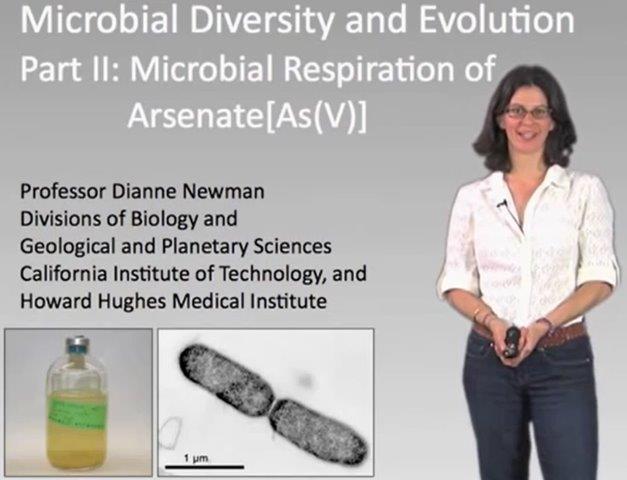
[Dianne Newman (CalTech) Part 1 An Overview of Microbial Diversity and Evolution]
[Dianne Newman (CalTech) Part 2 Microbial Respiration of Arsenate]
[Dianne Newman (CalTech) Part 3 Interpreting Molecular Fossils of Oxygenic Photosynthesis]
Built Environment:
In social science, the term built environment, or built world, refers to the human-made surroundings that provide the setting for human activity, ranging in scale from buildings to parks. It has been defined as “the human-made space in which people live, work, and recreate on a day-to-day basis.” From <https://en.wikipedia.org/wiki/Built_environment>
[Jessica Green The Ecology of Indoor Environments]
[Jessica Green Good germs make healthy buildings – TED Talk]
Jessica studies the relationship of the microbial community in our even more sealed and controlled indoor environments called “the built environment”.
[Brent Stephens – Perspectives on Microbial Interactions in Built Environments]
Brent looks at the literature regarding the role of the built environment, microbes and human health citing many of the latest studies in the field so an excellent resource for better understanding microbes in the built environment and the studies associated.
[Unimaginable, unprecedented, microbial diversity by Professor Jim Prosser]
Jim Prosser speaking on the abundance and complexity of the microbes that make up our earths soils, and their role in the PH and nitrification.
Personal Development is the Issue
Personal development has become a key issue for the 21st Century. It seems the evolutionary growth and development of the human brain led us out of Africa to colonize the world, to develop communities, master the natural resources of the lands and grow our population to dominate the world. Our brain led us out of the Dark Ages into the light of reason and science which paved the way to improve the lives of the human population.
According to Steven Pinker and his incredibly important work from his 2018 book “Enlightenment Now” shows us the data that the world is a much better place and that the philosophy of the Enlightenment was a success. It empowered humans to use our brains to better make sense of the world around us and begin to live lives of purpose and meaning.
The Enlightenment philosophy created the industrial revolutions that built machines to do the physical labor freeing our minds to further develop unleashing creativity and literacy further improving our lives. Our creative brains led us to develop the sciences that would build our new world and ushered in the Information Age starting about seventy years ago with Claude Shannon. The proliferation of books, education and arguably more important the dialogue, arguments, and sharing of ideas fueled the modern world building the Digital Age hyper-connecting humanity on their pocket computers.
The Internet converging with the Smart Phone has leveled the playing field where billionaires use the same device as the people from rural China and Africa. The accessibility to the worlds knowledge for anyone, anywhere changes the game with a shift to our truly human attributes and skills.
Even our values are changing as we get tired of ancient beliefs and arguments that have no basis in reality. The philosophy what used to serve humans is no longer satisfactory. We shifted from a slavery mentality to one that includes all of humanity and now all of life including the planet itself. The Dalai Lama once claimed the ultimate purpose of humans is “the pursuit of happiness” which mirrored the Declaration of Independence and that may well have been throughout the 20th century but seems we are entering into a new age, an Age of Intelligence that is augmented with machines soon to use Artificial General Intelligence.
The machines of the Industrial Revolution freed us from physical labor that helped us further develop our cognitive capacities. The Age of Intelligence has ushered in Big Data, AI, the Omics, including the Connectome, the Microbiome and the Exposome, created intelligent machines that outperform humans millions-to-one which we need to do the processing to help us figure out the complexities of the human mind, the universe, the Omics and more important the existential problems facing the world.
As super computers and intelligent systems augment our cognitive tasks pushing us to Peak Brain (Educational Neuroscience) it is clear that leaves humans to do the things that make us truly human, to focus on the skills that computers can’t do well (at least for now) and enable us to flourish together. This is the Age of Personal Development enabling a thinking, feeling, breathing human to grow beyond their tribal mentalities, develop one’s self to create a life of purpose and meaning and the courage to extend that far beyond one’s family unit as far into society as one can.
If your blessed to be born with a really high IQ then you will likely be led and educated in the fields that require high levels of cognition, even then to develop personal and soft skills will only serve you to be a better communicator, project manager, team collaborator and/or self-leader to benefit your career and add value to the organization. The rest of us will have more pressure to develop excellent personal skills to aid us in being better employee’s, better managers, increase our creative and innovative capacities, better friends, family members and contributors to society.
Based on thousands of hours research, fifty years life experience, data from dozens scientists and educational institutions Daniel argues that personal development is one the key human issues for the 21st century. He explains how he came to this conclusion and suggests a path or a system one can use to identify one’s own intelligences, surface what is truly important, enhance one’s opportunities and regardless of how life works out to have purpose, meaning and direction.
He invites dialogue on the subject to refine our understanding and applications to ensure positive results, create a community sharing ideas and experiences and enjoy the journey of personal growth.
Overpopulation
Is Overpopulation a problem?
By looking at this graph from the Wikipedia Page is sure looks like we are heading for a major problem considering almost all the growth has happened in the last 100 years and we had two world wars and a major pandemic in 1918 that claimed to take 5% of the world’s population.
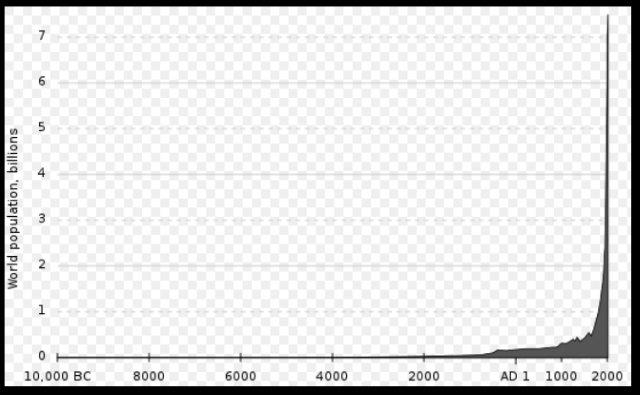
Our world grows in the amount of people at a rate of;
– 80 million per/year
– 1.5 million per/week
– 250,000 per/day
– 10,000 per/hour
I vaguely recall reading a book called “The Myth of Overpopulation” or something like that and one thing that stuck was the claim that you could fit the entire world’s population in a 2000 sq/ft home in the State of Texas alone. Let’s do the math on this claim;
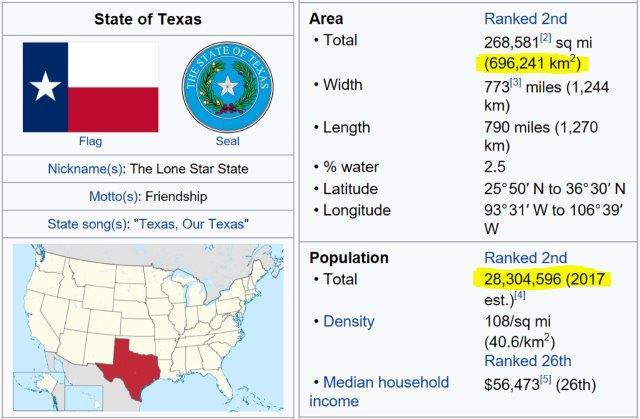
Back when the book came out there was only about 6 billion people on the planet and rounding off the sq/km is 697,000 sq/km in the state. Convert 697,000 sq/km into meters = 697,000,000 sq/m, Divided by 6,000,000,000 = 8.6 sq/m per/person (92.5 sq/ft). Apparently this is true which kind of puts population in a different perspective.
I live in Qingdao, Shandong Province. There is almost 100 Million people in this province according to Wikipedia and local sources. Me and some friends ride motorcycles and traveled this whole province and I tell you and have commented to all my friends that I almost don’t believe these statistics because I just don’t see that kind of population. If it is true then it sure seems like it is not a big problem for the world to hold a lot of people. (Note: Most of the people don’t drive cars, have relatively poor life style with very little movement or activity.)
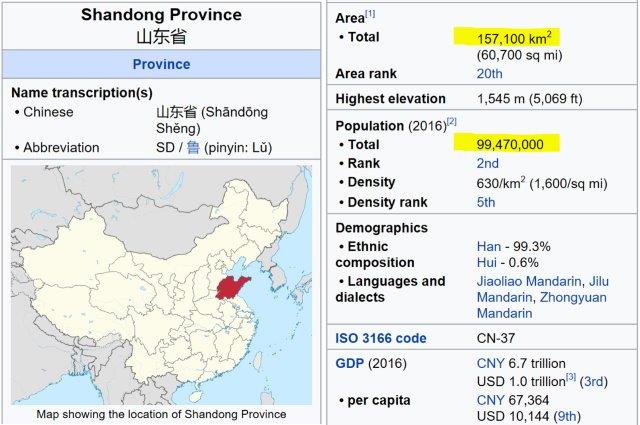
So what’s the problem?
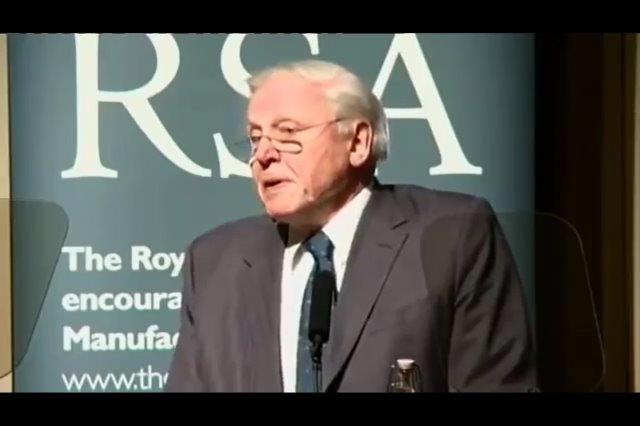
[Sir David Attenborough on Overpopulation]
Sir David performed an outstanding talk about overpopulation to an affluent audience in England. Sir David is a passionate Naturalist and excellent story teller. According to Attenborough this is considered to be one of the major problems the world faces as it underlines all other problems.
He point that the industrialization of the world has literally change the chemical composition of our air, ocean and lands and temperature of our planet. He claims there is one factor that ties this all together and that is the increase of population. That increase exacerbates all the other problems;
– Global warming
– Desertification
– Pollution or land, air, water
– Species extinctions
– Spread of diseases
– Growing and supplying of food
– Poverty, Conflict, Resource depletion
The Stats on Population:
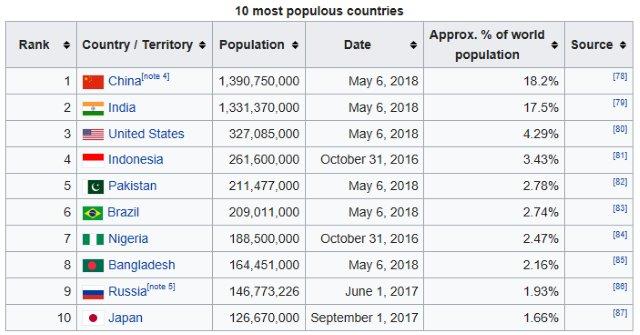
Approximately 4.3 billion people live in these ten countries, representing around 58% of the world’s population.
From <https://en.wikipedia.org/wiki/World_population>
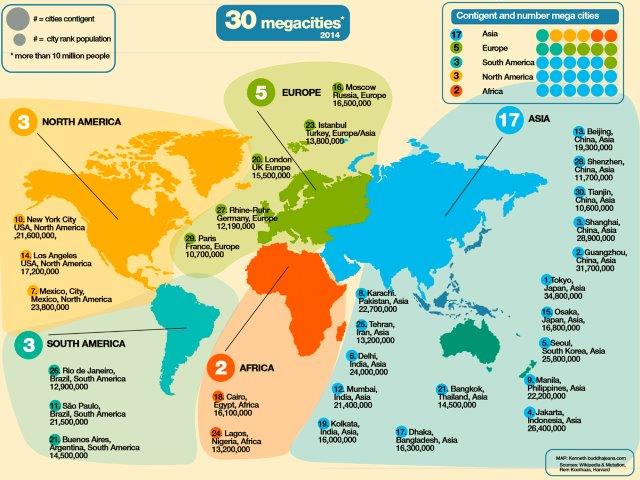
The worlds Mega-Cities all with more than 10,000,000 people:
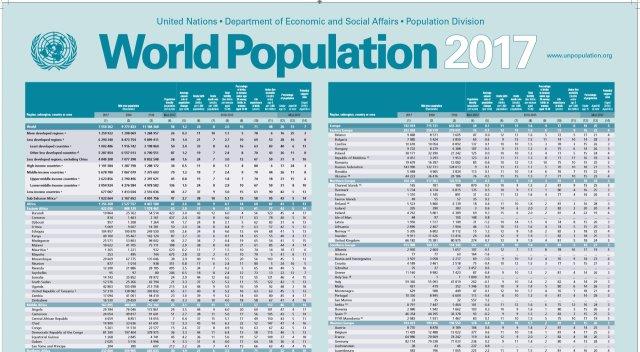
The 2017 World Population Wall Chart by the United Nations is full of details and data about our world’s population.
4 of the 29 Key Findings are;
1. According to the results of the 2017 Revision, the world’s population reached nearly 7.6 billion in mid-2017. The world has added one billion people since 2005 and two billion since 1993. In 2017, an estimated 50.4 per cent of the world’s population was male and 49.6 per cent female. In 2017, 9 per cent of the global population was under age 5, 26 per cent was under age 15, 13 percent was aged 60 or over, and 2 per cent was aged 80 or over.
2. Current estimates indicate that roughly 83 million people are being added to the world’s population every year. Even assuming that fertility levels will continue to decline, the global population is expected to reach 8.6 billion in 2030, 9.8 billion in 2050 and 11.2 billion in 2100, according to the medium-variant projection.
3. In fact, continued growth of the world’s population is expected at least until 2050, even if the decline of fertility accelerates. The projections of the 2017 Revision indicate that there is a 95 per cent probability that the global population will be between 8.4 and 8.7 billion in 2030, between 9.4 and 10.2 billion in 2050 and between 9.6 and 13.2 billion in 2100.
4. Future population growth is highly dependent on the path that future fertility will take, as relatively small changes in the frequency of childbearing, when projected over several decades, can generate large differences in total population. In the medium-variant projection, it is assumed that the global fertility level will decline from 2.5 births per woman in 2010-2015 to 2.2 in 2045-2050, and then fall to 2.0 by 2095-2100. In an illustrative example where the future fertility level of each country is consistently half a child above the levels assumed for the medium- variant projection, the global population would reach 10.8 billion in 2050 and 16.5 billion in 2100.
5. Click here to get the full Wall Chart and the other 25 key findings. [https://esa.un.org/unpd/wpp/Publications/Files/WPP2017_Wallchart.pdf]
United Nations [https://esa.un.org/unpd/wpp/]
According to the United Nations in the March 2017 report; “The total fertility rate for the world as a whole fell from around 5 live births per woman in 1950-1955 to 2.5 births in 2010-2015. As a result of this global transition, an increasing share of the world’s population now lives in countries where total fertility has fallen below the replacement level of approximately 2.1 live births per woman over a lifetime; at this level of fertility, each generation of parents exactly replaces itself with an equivalent number of children who survive to adulthood, ensuring a long-term growth rate of zero.1 Conversely, a relatively small proportion of the world’s population now lives in countries with high levels of fertility — conventionally defined as more than 5 live births per woman. Given the projected future course of fertility, it is expected that this proportion will continue to decrease. Thus, the end of high fertility is near and should become a reality within the next decade or so, according to the results of the 2017 Revision of the World Population Prospects.”
Click here for report
[https://esa.un.org/unpd/wpp/Publications/Files/PopFacts_2017-3_The-end-of-high-fertility.pdf] or visit United Nations website to view all their publications. [https://esa.un.org/unpd/wpp/Publications/]
[Hans Rosling on global population growth]
Hans Rosling was a Swedish physician, academic, statistician, and public speaker. He was the Professor of International Health at Karolinska Institute and was the co-founder and chairman of the Gapminder Foundation, which developed the Trendalyzer software system. He held presentations around the world, including several TED Talks in which he promoted the use of data to explore development issues. From <https://en.wikipedia.org/wiki/Hans_Rosling>
An excellent speaker, a very entertaining and informative very high tech presentation that explains our human population, how we got to 7 billion and where we are going. Rosling shows us a positive trend and relieves some of the panic and worry about overpopulation.
This graph shows data from the Gapminder program Rosling founded and the divided demographics between the developed countries with small families and long lives compared to the developing countries with large families and short lives since 1963 to the world shift up to 2012. (Below)
Rosling claims that the idea of a “Population Bomb” stirred up by some authors and the media couldn’t be more wrong as demonstrated by the above two slides. [Data from the Gapminder Program – https://www.gapminder.org/]
The below slide try’s to explain why the population increased so dramatically in the last 80 years. He claims this is because of survival rates as show in the below graph. In the 1800’s we had an average of 8 children with only 2 surviving to reproductive age. By the 1900’s with advancement of technology and medicine (industrial revolution) having slightly less children but better survival rates up to today where only two children but all surviving to adulthood.
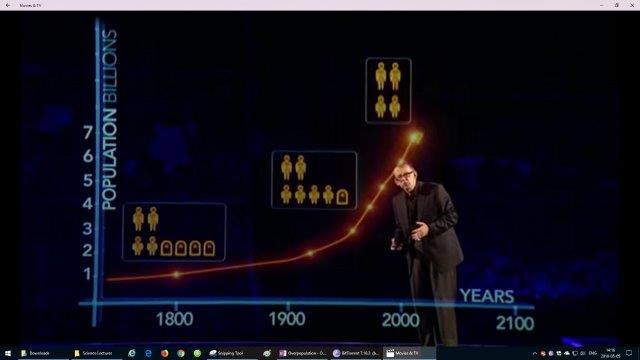
[Graph heading: Babies born per women in the World]
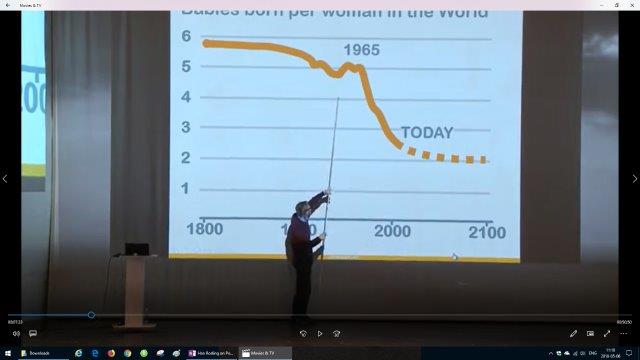
Rosling calls this graph the “Big Fact” of his lifetime and that is that we have reached “Peek Child”. The (numbers of babies born (on average) is now 2 and stable. The United Nations estimates the number of children will not increase throughout this century as shown in the above United Nations report.
Income-Lifespan Graphs
1800 Everyone was down in the poor with short lifespan:
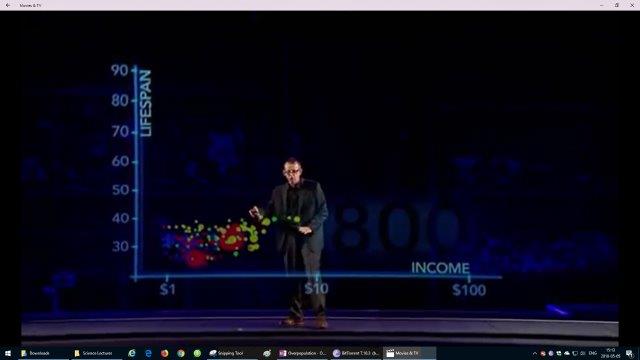
2012 a big shift out of poverty into prosperity. A positive change in world demographics rarely reported by the media, but Rosling cautions us as we still have a long way to go to pull the rest of the 1-2 billion out of poverty.
Skeptics of Overpopulation:
The Population Research Institute (PRI) [https://www.pop.org/] is a (501c3) non-profit research organization whose core values hold that people are the world’s greatest resource. PRI’s goals are to educate on this premise, to expose the myth of overpopulation, and to expose human rights abuses committed in population control programs. Our growing, global network of pro-life groups spans over 30 countries.
We pledge to:
– Debunk the myth of overpopulation, which cheapens human life and paves the way for abusive population control programs.
– Expose the relentless promotion of abortion, abortifacient contraception, and chemical and surgical sterilization in misleadingly labeled “population stabilization,” “family planning,” and “reproductive health” programs.
– Defund these programs by exposing the coercion, deception, and racism inherent in them.
– Emphasize that people are the most valuable resource on the planet, the one resource we cannot do without.
– Promote pro-natal and pro-family attitudes, laws, and policies worldwide.
– Encourage programs to help the poor become agents of their own development.
Criticism of PRI on Wikipedia:
The Population Research Institute (PRI), an anti-abortion, anti-contraception advocacy group, has criticized predictions of overpopulation and attendant resource scarcity, with some describing overpopulation as a “myth”. The PRI argues that advances in agricultural, medical, and industrial technology have allowed global economic productivity to keep pace with rising populations despite Malthusian predictions to the contrary. PRI further says that family sizes are naturally declining worldwide due to higher living standards, increased availability of contraception and better economic opportunities for women. However, other commentators have described PRI’s arguments on overpopulation as deceptive. From <https://en.wikipedia.org/wiki/World_population>
From the Population Research Institute (PRI) is this website dealing specifically on what they deem as “The myth of overpopulation” in which they raise some good points and have a valid debate.
[https://overpopulationisamyth.com/]
Episode 1: Overpopulation: The Making of a Myth
According to the U.N. Population Database, using the historically accurate low variant projection, the Earth’s population will only add another billion people or so over the next thirty years, peaking around 8.02 billion people in the year 2040, and then it will begin to decline.
Episode 2: 2.1 Kids: A Stable Population
When a population decreases in size, the number of potential mothers also decreases. We say that countries with very low birthrates–like Japan’s 1.21 children per woman–are in demographic collapse because each new generation is little more than half the size of the one that preceded it. At this rate, it would take only four generations to reduce the size of population to 10 percent of its initial size.
Episode 3: Food: There’s lots of it
Both of the world’s leading authorities on food distribution (the United Nations Food and Agriculture Organization [FAO] and the World Food Programme [WFP]) are very clear: there is more than enough food for everyone on the planet.
Episode 4: Poverty: Where We All Started
Essentially, the only way that poverty has ever been defeated, anywhere, is by infrastructures that humans have set up. So, when poverty does exist, it is when these infrastructures either 1) don’t exist, like in underdeveloped nations, or 2) are broken or have holes in them. Essentially, fixing poverty is about fixing bad infrastructure, not about eliminating people.
Episode 5: 7 Billion People: Will Everyone Please Relax?
The United Nations Population Division (UNPD) is the most reliable source of population statistics in the world, which is why we use their numbers for our videos. And, according to the UNPD, population growth will continue to slow down over the next few decades. In fact, if current trends persist, our growth will halt right around 8 billion by 2045. After that, our numbers will start to fall off, slowly at first, and then faster.
Episode 6: Urbanization: Who’s Afraid of the Big Bad City?
When more people are grouped together, they are able to put their minds together and come up with better ideas and ways to improve in their society. Because of this, the city is able to offer more opportunities, so people move there.
Read more and watch their videos explaining each of the above points in detail.
[https://overpopulationisamyth.com/]
Research & Reports from PRI:
Below is a sample of some reports and resarch, please visit their website for all reports [https://www.pop.org/?taxonomy=vocabulary_3&term=in-depth-reports] and publications [https://www.pop.org/weekly-briefing/]
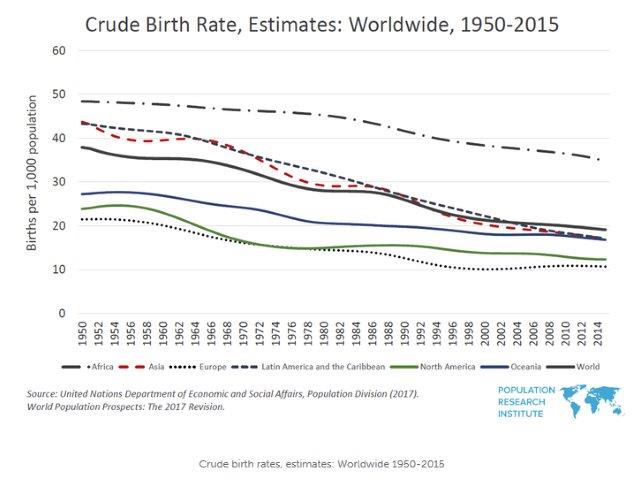
[https://www.pop.org/crude-birth-rate-estimates-1950-2015/]
Xi Jinping Places Catholic Church in China Under Direct Party Control
The decision means that the proposed Vatican-China agreement would not merely be a surrender of the Chinese faithful to the Communist Party—it would be an utter betrayal of the faith. From <https://www.pop.org/xi-jinping-places-catholic-church-in-china-under-direct-party-control/>
Family Planning Organizations Abuse Women and Children
International family planning programs claim to offer “reproductive health,” but instead they bring a host of human rights abuses to the unsuspecting and uneducated. From <https://www.pop.org/family-planning-organizations-abuse-women-and-children/>
Confucius Institutes: Trojan Horses with Chinese Characteristics
Confucius Institutes are described as non-profit public institutions aligned with the government of the People’s Republic of China whose purpose is to promote Chinese language and culture, as well as facilitate cultural exchanges. This seemingly benign purpose leaves out a number of purposes both salient and sinister, namely, sanitizing China’s image abroad, enhancing its “soft power” globally, and creating a new generation of China watchers who well-disposed towards the Communist dictatorship. From <https://www.pop.org/confucius-institutes-trojan-horses-with-chinese-characteristics/>
Resources:

[Sir David Attenborough on Overpopulation]
Sir David performed an outstanding talk about overpopulation to an affluent audience in England. Sir David is a passionate Naturalist and excellent story teller. This is a story that needs to be told and congratulate Sir David on his style and courage to address those who may be the ones who need to hear it most.
[Gapminder – https://www.gapminder.org/]
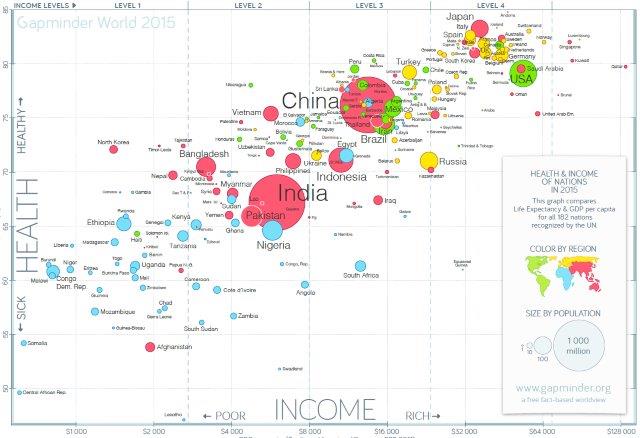
[Why the world population won’t exceed 11 billion _ Hans Rosling _ TGS.ORG]
[Hans Rosling on global population growth]
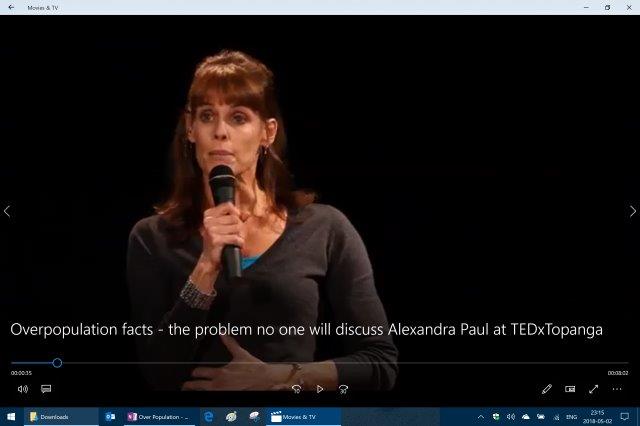
[Overpopulation facts – the problem no one will discuss Alexandra Paul at TEDxTopanga]
Alexandra Paul the actress is also an activist discussing the overpopulation problem of the planet and pleading with people to have only 1 child.
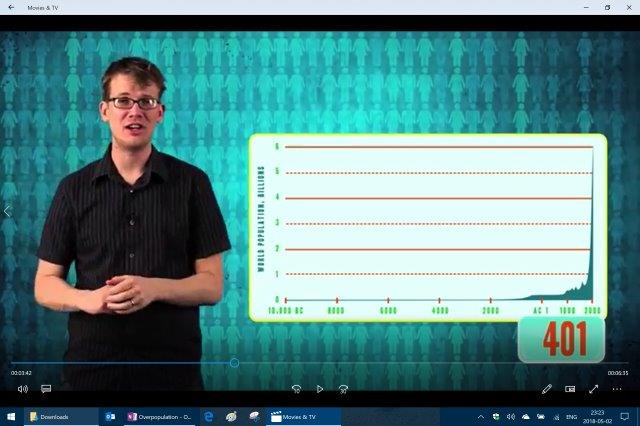
[The Science of Overpopulation]
The entertaining but informative Henk now doing this SciShow program. A quick 10 min overview of the population facts above showing us the well know and quite startling population graph from 10,000 BC to present. Kid of matches the C02 graph as well.
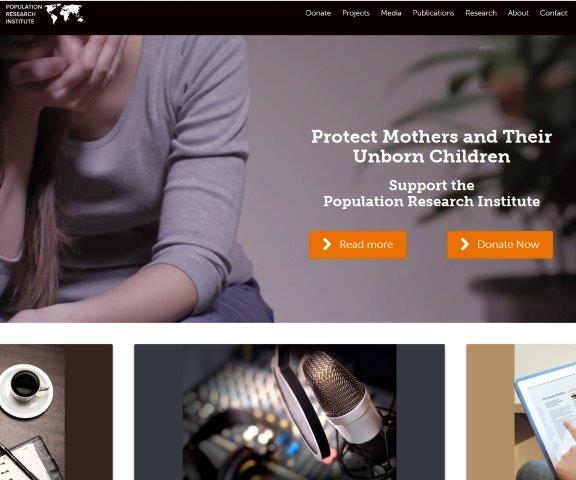
Population Research Institute (PRI) is this website dealing specifically on what they deem as “The myth of overpopulation” in which they raise some good points and have a valid debate.
[https://overpopulationisamyth.com/]
[https://www.pop.org/]
Smart Technology is Making you Dumb
Of course Smart Technology, our mobile phones and access to the Internet is revolutionizing the world. There is no doubt about the power of information but is it really making us smarter human beings? Or is it creating brains full of loose connections setting us up for early dementia?
The answer is not as simple as one might think. Most reasonably aware people recognize that it is simply a tool, and how you use the tool is most important but science is pointing to new evidence about how information is processed in our brains that should cause for alarm in the use of smart technology.
Nicholas G. Carr is a prominent American author of several books criticizing Smart Technology and its negative effects in his books Does IT Matter? Information Technology and the Corrosion of Competitive Advantage and The Shallows: What the Internet Is Doing to Our Brains. Carr argues that technology is simply making us dumber because of the primary way information transfers into knowledge. It reduces critical thinking, attention, and reduces our ability to transfer valuable information into our long-term memory.
Some definitions for the following:
- Working memory: Trying to keep something in your mind short term (Example: going from one room to anther to do something and forget what you were going to do.
- Spatial memory: The memory that allows us to navigate our way through the world. To find your car in the parking lot or find your keys in your house. (London Taxi Driver PET Scan study).
- Long-term Memory (LTM): Is the stage where information is held indefinitely.
Carr points out how memory is retained and retrieved which is especially important in the aging brain. The 2012 Arizona State University public lecture series entitled “Living Beyond 100” has evidence that supports Carr’s view. In the lecture titled [Beyond-100-The Aging of the Brain] Professor of Neurology Carol Barnes claims that memory is stored in our synaptic connections and the strength of those connections makes a difference if we are going to able to retrieve information or not. Barnes said “Although you don’t lose neurons, our synaptic connections get weakened and lost during aging.”
Some science to support this claim originated in 1949 when Donald Hebb predicted that memory is related (stored) in the synaptic connections. Hebb’s prediction that memory is stored in the synaptic connections became further verified by Terje Lomo with his discovery termed Long-term Potentiation. Many scientists have now demonstrated in rat experiments that synapses can become stronger improving spatial memory hence the well-known phrase “cells that fire together wire together”.
Some Brain Facts:
- Human Brain: Weight, approximately 1500 grams +/- 100 grams.
- Neurons: Approximate count as of 2010: 86 Billion.
- Synaptic Connections: Each of the neurons has on average 7,000 synaptic connections to other neurons making trillions of connections.
- A neuron, also known as a nerve cell, is an electrically excitable cell that receives, processes, and transmits information through electrical and chemical signals.
- Neurons do not divide. (The process of neurogenesis then involves a final cell division of the parent neural stem cell, which produces daughter neurons that will never divide again. Most neurons of the human central nervous system live the lifetime of the individual but there is now strong evidence that new cells can emerge in the hippocampus and olfactory bulb.)
- A typical neuron consists of a cell body or soma, dendrites, and an axon.
- We typically don’t lose neurons but synaptic connections become weakened or lost over time.
- Synapses can become stronger improving spatial memory.
Synapses can become stronger and the strength of a connection makes it more likely to be retained maintaining strong cognitive ability throughout life. How information is obtained is also critical if it is to be stored for later use. Just packing your brain full of information is of no use if you can’t recall it, if you can’t retrieve it and bring it to your working memory for discussion or problem solving.
This is a potential problem with the way many use smart technology. These social networking platforms encourage bad habits of information gathering that set the brain up for weak connections. News Media is similar in that it is short bites of information that is rarely retained. The only thing you can remember about the news is the stuff you see over and over again which is not informing you but programming you, and to a negative bias as well. Think about it, in fact think about people you know who watch the news everyday as their primary source of information, not only will they view the world as negative but you will also be able to notice they can’t remember small details well. This whole habit of quick bites of information does not help build strong brain connections.
Media is not a source of knowledge, it is an opinion maker! Without depth of context it is easy to draw wrong conclusions, create misunderstanding and just be flat out wrong. Not only is the information superficial but it sets up the false sense of knowing or the delusion of being smart. Professor Frank Keil reveals data from a study that demonstrated people think they are smarter by just having “access” to the Internet. Of course just having an internet connection doesn’t make you smarter but that is what most unconsciously believe. This is a delusion and a form of intellectual arrogance that will prevent or limit you from gaining knowledge or becoming wise. This is also not good for healthy relationships either.
The above screenshots come from the Intellectual Humility MOOC created by the University of Edinburgh Philosophy Department. These particular videos are available on YouTube [V. Introduction to Humility and human cognition] but highly recommend the full series and or take the MOOC.
V. Humility and human cognition. Part 1 Introduction (Prof. Frank Keil)
V. Humility and human cognition. Part 2 Humility, arrogance and base rate neglect (F. Keil)
V. Humility and human cognition. Part 3 Developmental over optimism (Prof. Frank Keil)
V. Humility and human cognition. Part 4 The illusion of explanatory depth (Prof. Frank Keil)
V. Humility and human cognition. Part 5 Illusions of argument justification _ insight (F. Keil)
V. Humility and human cognition. Part 6 Illusions of the outsourced mind (Prof. Frank Keil)
To quote Carr again, “information is not knowledge, it’s not intelligence, and it’s certainly not wisdom.” To gain, retain and turn information into knowledge or wisdom we need to fully engage with information, we need to think about it, internalize it, dialogue about it and contemplate it if we want to turn it into knowledge that is retrievable for action. Getting bits and bytes of information through your smart phone are highly unlikely to be retained and not likely to strengthen your synaptic connections or the relationships involved.
There has been a radical shift in thinking about the human brain, its plasticity and its adaptability. Fifty years ago experts thought the brain passively deteriorates. Now we know the brain actively adapts and can remain strong throughout long life with cognitive training and good information processing habits. Doing crossword puzzles is not going to help you find your keys but education and lifelong learning is said to be the top predictive factors for cognitive health.
Personal Information & Privacy
Then come the issue of privacy, personal information and companies mining our personal data to manipulate us into buying their products, and worse changing our views buy plugging information in smart, creative and subtle ways without us even recognizing it.
That is the work of con artists! If your not aware of how a con artist works then do a little study and you will find they operate and manipulate based on information they gather about you, what you like and what you want. I was completely surprised when I had a look at some of my friends profiles on the popular China WeChat program. I don’t use the program for all the above reasons and more but was curious as if some of my employees were spending lots of time socializing on their mobile phones and not focused on their work.
When I saw my one of my employees profile I was shocked. This girl posts everything a con artist, including all the marketing companies could use to change her opinions about the world and have her buying a bunch of shit she doesn’t need. She posts daily about where she has been, what she has been doing and everything she likes and dislikes. After reading the last few months I had a completely new understanding of this employee. I am not a psychologist but had some training and what this person revealed I could easily see that marketing companies, con artists and worse, people out to steal identities could take full advantage of this person and mess with their life.
I then asked to see many of my other friends profiles and found a lot less posts of course but very similar information. People post things they like, little comments and general information it is very easy even for an armature to create a profile and manipulated people as they wish.
If that is not scary enough just look at what you agree to when you install their APP. The following is what you agree to when you click “Agree to Terms” before downloading the very popular Mobile App WeChat:
In case your not reading the smaller print:
- Read and write your profile and contact data.
- Read all your SMS or MMS (not just the APPs messages but all messages.)
- Control connections and “full” Internet control.
- Act as an “Account Authenticator” manage and use the credentials of the account.
- Modify and or Delete SD Card contents.
- Read your phone state and identity.
- Change your audio settings, “Record audio” and take pictures and videos. I am not sure if I am reading this right but are they saying they can control your phone and use your camera to take pictures, or video and record what is being said or done in real-time without your permission?
How well do you trust your Mobile APP company?
And is not just about trusting your Social Media or Smart Tech company because they themselves may be trust worthy but others can hack into and or get data in other ways. I am sure most of you are aware of the Facebook / Cambridge Analytica scandal. If not there is a lot on YouTube or the following are a couple good summaries on the subject.
[Cambridge Analytica whistleblower ‘We spent $1m harvesting millions of Facebook profiles’]
[Facebook whistleblower We tested Trump slogans in 2014]
We have to assume there are many data collecting companies and or governments that will intentionally or unintentionally misuse human privacy rights, the apps data and or our personal information without our consent to market products or shape our way of thinking. You need to take personal responsibility on what data you share on the internet or any app and if possibly just avoid using them all together. Join the Delete Facebook campaign and “uninstall” these social media APP’s unless you have a really good reason to use them and if so be careful of what you share and reveal about yourself. Certainly “uncheck” any options to receive additional information, advertisements or any other third party soliciting.
Conclusion
It is likely that the future will be a symbiotic relationship with smart technology. The “Semantic Age” as described by Paul Cohen is where machines know you well enough to predict your responses, finish typing your sentences, find the web pages you want, recommend books, music and products you would love to have. At many levels technology will keep you in the game (life) with a hearing aid, pace maker or some sophisticated AI medical interface that keeps your doctor informed or keeps you alive.
But Smart Technology cannot treat us as the unique individuals we are from our life’s experiences and memories. It does not help us build deep meaningful human relationships. My article on [Applications from the Science of Happiness] showed that quality relationships is key to having a meaningful long and healthy life but it is not about how many relationships you have but the quality of them.
Smart Technology is a great tool if used wisely, it can enhance our lives and help make some things more efficient but needs some awareness and proper applications not to slip into a life of sound bites and loose connections.
A good friend of mine once said alcohol is for smart people referring to how destructive it can be if you don’t have a good handle on it and your not aware of when it is having a negative impact on your life. The same may be said about smart technology if not used wisely.
“Smart Technology is for Smart People”
Additional Resources:
In the Intelligence Squared debate [Smart-Technology-is-Making-us-Dumb-IQ2-Debate] you will notice that the “for the motion side” brings up many excellent points on just how problematic smart technology can be while the “against the motion side” simple argues how valuable it can be missing the whole point of the debate in my view and even still half the people agree it is making us dumber. If they were to ask “Is the misuse of Smart Technology making us dumber” then I am sure it would be closer to unanimous.
Arizona University Public Lectures 2012 Series on Living Beyond 100
[Beyond-100-Information and Immortality]
[Beyond-100-The Aging of the Brain]
[Beyond-100-The Biology of Aging Why Our Bodies Grow Old]
[Beyond-100-Living Beyond 100 Can We, and What If We Do]
[Beyond-100-Repair, Regeneration and Replacement Revisited]
University of Washington Department of Psychology
Allen L. Edwards Psychology Series
[How We Remember, Why We Forget, and Why It Matters, Part 1 – 2012]
[How We Remember, Why We Forget, and Why It Matters, Part 2 – 2012]
Not directly related to Smart Technology but a more in-depth understanding of how memory works.
[Ecopsychology Reinventing the Human-Nature Relationship in the Digital Age, Part 1 – 2013]
[Ecopsychology Reinventing the Human-Nature Relationship in the Digital Age, Part 2 – 2013]
Not directly related to Smart Technology but two excellent talks that reveal the connection between the new digital world and nature, that humans evolution in nature is changing and the importance of keeping nature in our lives as we adapt to the new digital world.
[Technology _ the human mind _ Susan Greenfield _ TEDxOxford]
[Susan Greenfield – Internet & Mind]
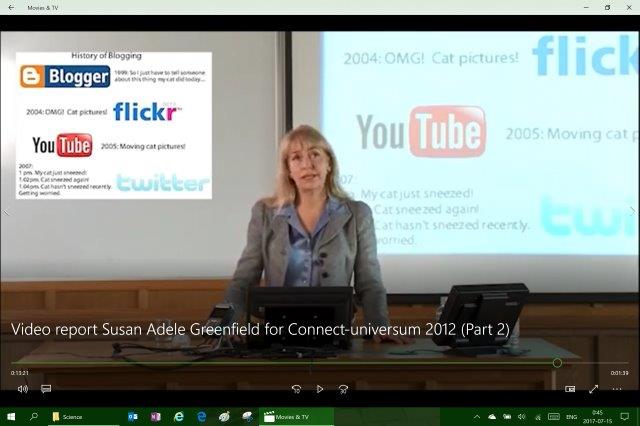
[You can grow new brain cells. Here’s how _ Sandrine Thuret]
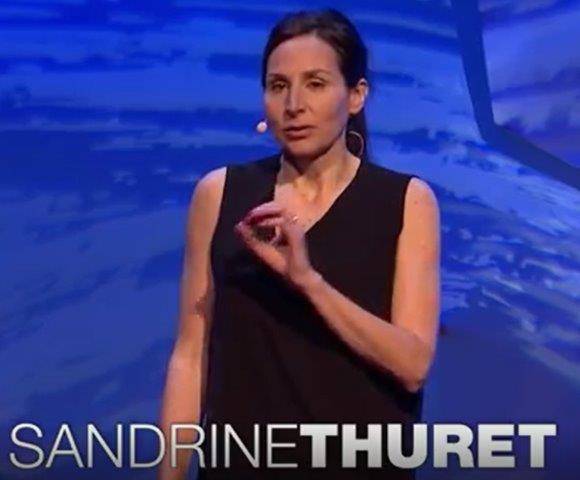
[Why I Don’t Use A Smart Phone _ Ann Makosinski _ TEDxTeen]
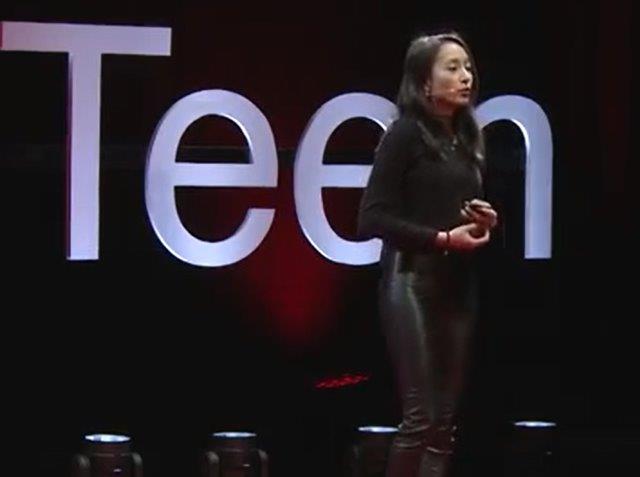
A young girls story how not having a mobile phone for most of her teens, growing up having to make her own toys all part of what helped her be so creative and innovative at a very young age.
Science of Gratitude
Gratitude is very intuitive, everybody knows that being grateful is a good thing. We have all experienced it and expressed gratefulness to other people throughout our lives. When life is good and everything is flowing well we tend to have a higher level of appreciation but when life is tough and nothing seems to be working out we struggle to be grateful, and why would we, after all if life sucks what the hell is there to be grateful for?
The first reason is learning and applying gratefulness will help you get through tough times while maintaining decent human character. It will minimize or eliminate complaining helping you to keep from being a bitch or an asshole. Secondly but not last there is good scientific support that gratitude is linked to happiness and greater life satisfaction. When we learn the benefits of being grateful and understand some of the science behind the attitude we learn that it is not something that you are normally aware of. Like happiness it requires cognitive effort to answer questions about if you are grateful. You have to think about it and evaluate past events to really consider in an overall picture if you are generally happy, sad, angry, or expressing gratitude in your life.
For me this subject got serious attention while living in China. After the honeymoon of being in this mysterious land wore off the reality of working and living in a developing nation kicked in and everything became a challenge. Fully committed to making life in China work out I did the personal development work to change my gratitude attitude.
China is an ancient civilization with a unique culture that is mysterious to most of the west. The Chinese word for “China” is Zhong Guo meaning “middle kingdom” but throughout history it had a very different meaning. As the below 15th century map shows there was a time China believed they were the center of the universe, and there has been many times in history they were, at least they have been a world super power with advanced technology far beyond the west but somehow managed to lose its position.
This century may be a time for China to rise up once again so understanding this culture will be critical for successful relations and a prosperous life for the westerners choosing China as their home. Many of us that have been here long enough realize the challenges of adapting to this culture. Me being here 15 years, running a small company and married into the culture began to understand the challenge of living in a developing country.
In China remaining positive or grateful becomes seriously challenged when you’re trying to get something done, especially if you have a series project that requires skill and professionalism. It is one thing to visit China on a holiday, but when your employer is demanding productivity or your business requires problems solved you will inevitably face issues and incompetency’s that will challenge the very notion of common sense, efficiency or effectiveness testing your character to the limits.
A few of my pet peeves have been:
- The inconsideration of queuing in a line or driving in the streets is utterly a rude and an annoying experience.
- The shoddy workmanship, serious lack of maintenance or preparation.
- The way garbage is handled or not handled.
- The lack of caring for and respecting for the environment.
- Inadequate heating system in homes and offices, plumbing constantly pumping sewer gases in your home and office.
- The trickery, hidden agendas and corruption in business.
- Living with constant noise, air and light pollution.
China has been a real challenge to have a positive mental attitude and express gratitude. It is not just China but where ever you might live there will be times and situations the test the best of us and it is precisely those times when we need to be more aware of our attitudes towards other people, governments and societies in as a whole. I would like to quote Steindl-Rast from his TED Talk [David Steindl-Rast: Want to be happy? Be grateful] with one of his main points being “It is not being happy that makes you grateful but being grateful that makes you happy.” I am not sure I agree with him on this point especially after reflecting on my experience and writing the article on [Applications from the Science of Happiness] but I will concede that gratitude is a definitely a component of happiness.
What he did say that is directly related to this article is that life does have its challenges and that within every challenge comes opportunity. Steindl-Rast describes learning how to be grateful for the opportunities that lie in the difficulties we face. Life presents many challenges and things we won’t be grateful for but in lies the opportunity to be grateful to overcome adversity, and the opportunity to rise to the challenge and develop your character.
Let’s start with a basic definition of gratitude and then look at some of the science around it. Wikipedia defines it as; Gratitude, thankfulness, thanksgiving, or gratefulness, from the Latin gratus ‘pleasing, thankful’, is a feeling of appreciation felt by and/or similar positive response shown by the recipient of kindness, gifts, help, favors, or other types of generosity, towards the giver of such gifts. The experience of gratitude has historically been a focus of several world religions. It has also been a topic of interest to ancient, medieval and modern philosophers, and continues to engage contemporary western philosophers. The systematic study of gratitude within psychology only began around the year 2000, possibly because psychology traditionally focused more on understanding distress than on understanding positive emotions. The study of gratitude within psychology has focused on the understanding of the short term experience of the emotion of gratitude (state gratitude), individual differences in how frequently people feel gratitude (trait gratitude), and the relationship between these two aspects. From https://en.wikipedia.org/wiki/Gratitude
The Science of Gratitude
According to Robert Emmons “Gratitude” itself was not seriously studied until about 2003 when the amount of scientific and research papers started to increase with a continuous upward trend through to today.
[Robert Emmons Gratitude as the Lynchpin Between Adversity and Delight]
Emmons is a Professor of Psychology at UC Davis California. His research is in the field of personality psychology, emotion psychology, and positive psychology.
Here Emmons quotes Ben Stein, a financial guru when investors asked “How to invest money wisely and get rich quick?”.
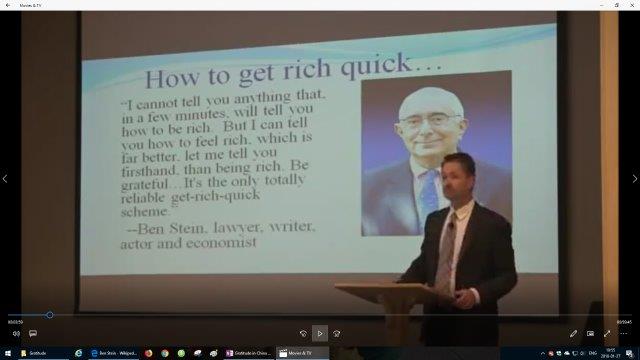
4 Categories of benefits people get from keeping a 5-minute/day “gratitude journal” in the randomized study they did. In (brackets) is the positive emotions and feelings that people reported in each category.
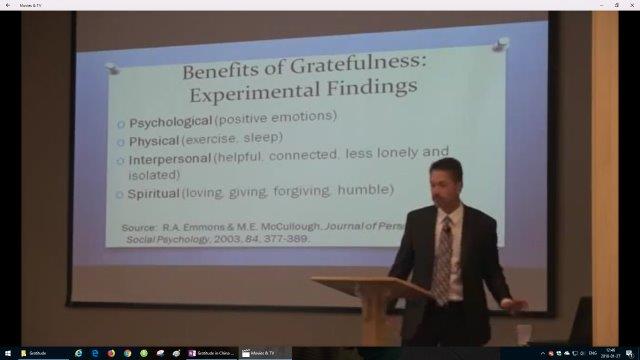
In the above study is the participants that kept a gratitude journal consistently experienced more positive emotions, exercised more often and slept better, felt more connected to others and not as lonely. The study also found a strong correlation to being more humble, forgiving and more pleasant to be around.
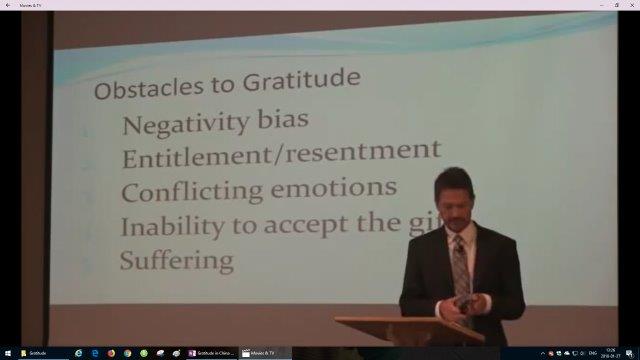
Another one for this list he mentioned but is not on this list is “complaining”. There are legitimate complaints and an appropriate time to “register a complaint” but coming back home from a rough day at work to bitch and complain will be a negative influence on your health and relationships. The amount of complaining, bitching and anger is a good measure of your mental state and ultimately your overall life satisfaction.
[Giving Unexpected Gratitude to Those Who Need It Most _ Ryan Duffy _ TEDxUF]
Duffy cites studies with the application of writing a gratitude letter to people that have helped them and the follow up results claiming that people are happier and less depressed.
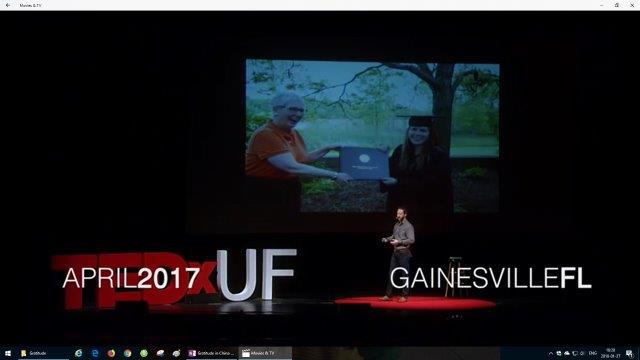
Duffy brings up a good exercise of turning the act of giving gratitude from those who of helped us to those at a low point in life and showing gratitude to them tying it into his opening story of how his mother helped her disabled sister to get through school. An excellent example of what we can learn about people, ourselves and developing empathy.
[The Four A’s for Expressing Gratitude]
Brian Tracy is a success guru and been sharing strategies and ideas on sales, business, and how to have a better life for 40 plus years. Still going strong at 74 years old Brian shares his 4 “A’s” on gratitude, a simple 4 points that applied regularly will help adjust your attitude for a more fulfilling life.
[The transformative power of gratitude Katia Sol at TEDxMission The City2.0]
Madjidi is involved with the Regenerative Design Institute at Bolinas California a system of agriculture and social design principles centered around simulating or directly utilizing the patterns and features observed in natural ecosystems. From <https://en.wikipedia.org/wiki/Permaculture>
Madjidi’s focus is on our inner garden, the practice of gratitude which she shares some of her personal applications she posted online and the connection between the Permaculture work of the institute. In this talk she cites some of Robert Emmons work with the following:
The Power of Gratitude:
- Gratitude has been directly correlated with physical health. Not just the sociological and or mental disorders like depression but actual physiological health and well-being. (This means you will sleep better, have more clarity of mind, to less aches and pains from aging or bad habits and overall higher energy levels.)
- Claims that brain function becomes more harmonized and balanced, the heart pumps more rhythmic and biochemical changes trigger a host of beneficial responses.
- Reduces negative feelings and emotions especially related to past negative memories.
- Grateful people have a positive memory bias. (A tendency to remember all the positive things in life compared to depressed people who remember all the negative things.)
- It helps you overcome adversity, suffering, loss and difficulties of life.
- Grateful people experience higher levels of enthusiasm, determination and energy to pursue your personal goals.
- Grateful people experience more optimism and more positive moods.
- Grateful people feel more connected to people and less lonely.
I would like to comment on the “connection to people” as this was also key to happiness and overall life satisfaction. In our study of [The Applications from the Science of Happiness] we found the happier you are the better your relationships with people and visa/versa but more profound is that happiness was more connected to the quality rather than the quantity so deepen those close relationships and apply the science of gratitude.
Pre-Application Exercise:
Another valuable exercise before you start applying some applications is to record your current state and attitude over a one to three month time period. This will help you better know the reality of your true state and when applied if the applications are really giving you the benefits you want. You can simply make a note every time you get upset, bitch, complain or get angry at someone or something. If you prefer a little more detailed account create a spreadsheet that lists moods/feelings across the Y-Axis, one month down the X-Axis and make a check every time you express one of those negative feelings. I did a spreadsheet and used a number indicating the amount of emotion from that list of states.
It might really surprise you when you see the reality of what you’re like, you may be pleased with the results or you might get a wakeup call and recognize that you really need to change. Below are some tips and applications you can consider to increase your level of gratitude.
Applications for Gratitude:
- Make a list of people you are grateful for and call, write or express “thanks” for what they did to help you.
- Create a list of all the things you are grateful for. Make it a dynamic document and continue to add to it throughout the days, weeks, months.
- The above two points can be your “gratitude journal”, make lists, journal experiences and or people you are grateful for and include actions you can take, do it and record the results.
- Adjust your vocabulary to include the words “I appreciate that” and “Thank you”, “I am very grateful for that” over and over again. Use the language as much as possible in your daily life, with your friends, your family, your co-workers and those you meet.
- Make a regular routine with your family or friends and ask “What are you grateful for today?”, this helps develop the grateful intentionality and use of the language.
- Write a gratitude letter to someone that has helped you in life. Someone who has helped you a great deal but you have never really given them the deserved thanks. Take some time to think of all the ways they have helped you and write it all down.
- Decide to make this part of who you are, engage in the process of constantly expressing thanks and gratitude, keep a file of people and things your grateful for, especially your children, your family and friends and experience the positive change this will have in your life.
Thanks, to all of you that participated in this article and sharing your thoughts and ideas that helped make a difference in our lives here in China. We are grateful.
[David Steindl-Rast: Want to be happy? Be grateful] 6,152,858 views
Additional comments from this talk:
- How does “gratefulness” work? Gratitude works when we experience something that is valuable to us, but given for free. It doesn’t come from something you bought it, or worked for it but that it was given to you freely.
- Grateful living: Experiencing that every moment has been given to you freely.
Method: Stop, look and go. We have to stop, get quite, look at the opportunity and move ahead.
Video Resources:
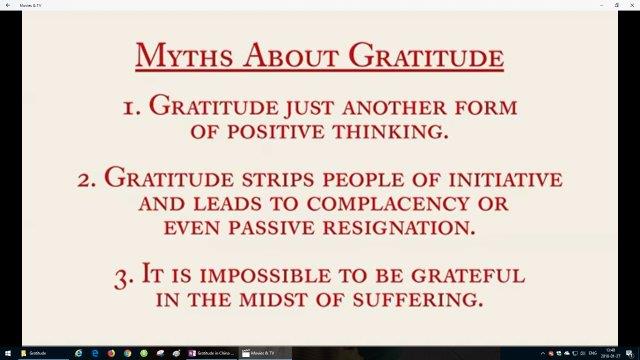
Robert Emmons is a Professor of Psychology at UC Davis California. His research is in the field of personality psychology, emotion psychology, and positive psychology.
[Robert Emmons Gratitude as the Lynchpin Between Adversity and Delight]
[Robert Emmons Gratitude Works! The Science and Practice of Saying Thanks]
[Robert Emmons Provost’s Lecture The Science of Gratitude]
[Robert Emmons Challenges to Gratitude]

[An Experiment in Gratitude _ The Science of Happiness]
A 7 minute video of a gratitude science experiment of a small sample of people and the results they got.
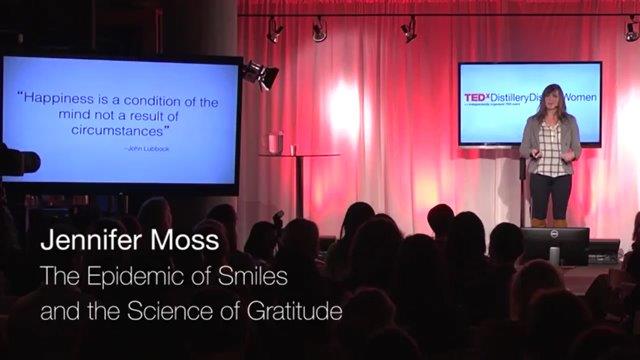
[The epidemic of smiles and the science of gratitude Jennifer Moss at TEDxDistilleryDistrictWomen]
Jennifer Moss shares her story on how smiles and gratitude got them through a major life threatening situation and led them into a worldwide social media and workplace application.

[Gratitude – Inspirational Video with Eckhart Tolle _ Tony Robbins]
5 minutes of some big names with some nice words on gratitude.
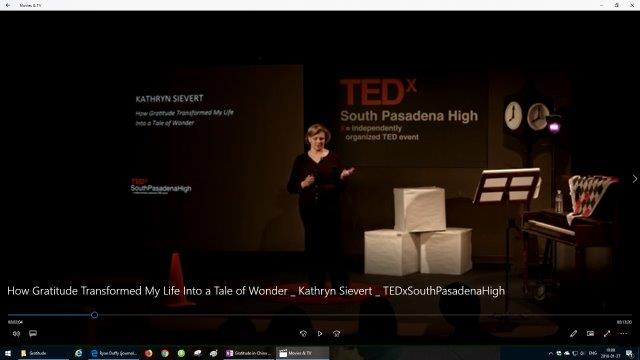
[How Gratitude Transformed My Life Into a Tale of Wonder _ Kathryn Sievert _ TEDxSouthPasadenaHigh]
At Sievert’s 50th birthday she set a goal to write 50 gratitude letters to people in her life. Sievert is a nice story teller and a nice example and some heart felt stimulation of being human.
Scientific Papers:
Emmons, R. A., & McCullough, M. E. (2003). Counting blessings versus burdens: An experimental investigation of gratitude and subjective well-being in daily life. Journal of Personality and Social Psychology, 84(2), 377-389.
http://dx.doi.org/10.1037/0022-3514.84.2.377.
Abstract
The effect of a grateful outlook on psychological and physical well-being was examined. In Studies 1 and 2, participants were randomly assigned to 1 of 3 experimental conditions (hassles, gratitude listing, and either neutral life events or social comparison); they then kept weekly (Study 1) or daily (Study 2) records of their moods, coping behaviors, health behaviors, physical symptoms, and overall life appraisals. In a 3rd study, persons with neuromuscular disease were randomly assigned to either the gratitude condition or to a control condition. The gratitude-outlook groups exhibited heightened well-being across several, though not all, of the outcome measures across the 3 studies, relative to the comparison groups. The effect on positive affect appeared to be the most robust finding. Results suggest that a conscious focus on blessings may have emotional and interpersonal benefits. From <http://psycnet.apa.org/record/2003-01140-012>
Gratitude and Prosocial Behavior: Helping When It Costs You
Abstract
The ability of the emotion gratitude to shape costly prosocial behavior was examined in three studies employing interpersonal emotion inductions and requests for assistance. Study 1 demonstrated that gratitude increases efforts to assist a benefactor even when such efforts are costly (i.e., hedonically negative), and that this increase differs from the effects of a general positive affective state. Additionally, mediational analyses revealed that gratitude, as opposed to simple awareness of reciprocity norms, drove helping behavior. Furthering the theory that gratitude mediates prosocial behavior, Study 2 replicated the findings of Study 1 and demonstrated gratitude’s ability to function as an incidental emotion by showing it can increase assistance provided to strangers. Study 3 revealed that this incidental effect dissipates if one is made aware of the true cause of the emotional state. Implications of these findings for the role of gratitude in building relationships are discussed. From <http://journals.sagepub.com/doi/pdf/10.1111/j.1467-9280.2006.01705.x>
Is gratitude a moral affect?
By McCullough, Michael E.,Kilpatrick, Shelley D.,Emmons, Robert A.,Larson, David B.
Psychological Bulletin, Vol 127(2), Mar 2001, 249-266
Abstract
Gratitude is conceptualized as a moral affect that is analogous to other moral emotions such as empathy and guilt. Gratitude has 3 functions that can be conceptualized as morally relevant: (a) a moral barometer function (i.e., it is a response to the perception that one has been the beneficiary of another person’s moral actions); (b) a moral motive function (i.e., it motivates the grateful person to behave prosocially toward the benefactor and other people); and (c) a moral reinforcer function (i.e., when expressed, it encourages benefactors to behave morally in the future). The personality and social factors that are associated with gratitude are also consistent with a conceptualization of gratitude as an affect that is relevant to people’s cognitions and behaviors in the moral domain. (PsycINFO Database Record (c) 2016 APA, all rights reserved). From <http://psycnet.apa.org/buy/2001-16969-004>
GRATITUDE AND HAPPINESS: DEVELOPMENT OF A MEASURE OF GRATITUDE, AND RELATIONSHIPS WITH SUBJECTIVE WELL-BEING
Authors: Watkins, Philip C.; Woodward, Kathrane; Stone, Tamara; Kolts, Russell L.
Source: Social Behavior and Personality: an international journal, Volume 31, Number 5, 2003, pp. 431-451(21)
Abstract
The purpose of these studies was to develop a valid measure of trait gratitude, and to evaluate the relationship of gratitude to subjective well-being (SWB). Four studies were conducted evaluating the reliability and validity of the Gratitude Resentment and Appreciation Test (GRAT), a measure of dispositional gratitude. This measure was shown to have good internal consistency and temporal stability. The GRAT was shown to relate positively to various measures of SWB. In two experiments, it was shown that grateful thinking improved mood, and results also supported the predictive validity of the GRAT. These studies support the theory that gratitude is an affective trait important to SWB. From <http://www.ingentaconnect.com/content/sbp/sbp/2003/00000031/00000005/art00001>
Beyond reciprocity: Gratitude and relationships in everyday life.
Abstract
The emotion of gratitude is thought to have social effects, but empirical studies of such effects have focused largely on the repaying of kind gestures. The current research focused on the relational antecedents of gratitude and its implications for relationship formation. The authors examined the role of naturally occurring gratitude in college sororities during a week of gift-giving from older members to new members. New members recorded reactions to benefits received during the week. At the end of the week and 1 month later, the new and old members rated their interactions and their relationships. Perceptions of benefactor responsiveness predicted gratitude for benefits, and gratitude during the week predicted future relationship outcomes. Gratitude may function to promote relationship formation and maintenance. (PsycINFO Database Record (c) 2016 APA, all rights reserved). From <http://psycnet.apa.org/record/2008-06717-013>
Applications from the Science of Happiness
A study on The Science of Happiness
Happiness is hard to study being so subjective and difficult to define so science typically describes happiness as overall well-being or total life satisfaction. It tries to measure how well life is going for people, how much they enjoy life, how positive they are and if they are having regular positive verse negative outcomes. Some also point out that happiness is a modern construct and wasn’t believed to be for humans. It wasn’t something humans even considered as for most of history life was hard and short. Religion taught if your happy your sinning so they suppressed any notion of it until the Age of Reason and Enlightenment showed us we can be happy and it was a good indicator of how moral you were.
Another point to understand is happiness isn’t obvious, it is not something your consciously aware of until asked the question at which time you would have to think about it. To answer questions about happiness is a cognitive act, you must evaluate past events and really consider in an overall picture if you are generally happy, sad, angry, or content. Happiness, the act of being happy is simple an emotion that ebbs and flows like all emotions which is why most studies look at “total life satisfaction” or “overall well-being” as a measure of a person, society or nations.
What is clear is that being happy adds a lot to life and seems to be a better indicator of your health and longevity and even your success in work or relationships so you really want to consider making “happiness” one of your primary goals in life. Before making any decision consider reading this article and watching some of the professors and scientists who have studied happiness or wellbeing as a career and tell you what they learned. Then make your decision and consider the applications suggested near the end of the article.
Matthieu Ricard
[The Habits of Happiness – Matthieu Ricard]
A Buddhist monk shares his insights in a TED Talk and discusses the different meanings people can have about what happiness is like it being about passions, of living in the now or embarking on a journey toward compelling goals and then points many get a little confused about the difference between pleasure and happiness which may be subtle as many people misinterpret their feelings of pleasure with happiness and all through you will be happy when eating that nice thick fresh piece of chocolate cake the second one probably still tastes good and with a little psychological work to overcome your guilt and eat a third but if you keep eating your feeling of pleasure will turn to disgust. You come out of the cold into a house in front of a warm fire and it is beautiful, the warmth, the sounds and sight of the flame and after a while its burning you and you back away. Happiness is too vague so he prefers well-being which he explains as something deeper than fleeting emotions. Awareness and consciousness provides opportunity to change our perspective because emotions are fleeting and not a good guide. Two opposite mental factors or states cannot be there at the same time. You cannot shake hands and strike a blow at the same time, your cannot love and hate at the same time for the same object.
[Comment: A lot of talk about dopamine, the chemical associated with feeling good like when you experience love from a person, when you exercise, eat certain foods and of course some drugs or stimulants but chasing the dopamine high can lead to unhealthy habits like doing too much drugs, or spiking your coffee with a little brandy everyday, or falsely believing this adds to well-being or life satisfaction.]
Fred Luskin
[The Science of Happiness – Fred Luskin]
PhD in Psychology and teacher on forgiveness, well-being, and happiness. Luskin brings up many key points, one being how we deal with the “us” and “them” perspective. When you walk in a room do you look around at “them” as some kind of competition or something to avoid or your you see them as “us” where you can engage and share? Another question asked about quality of relationships is are they hard or easy. Think of someone who relationship with is very easy, it is not work, it just flows naturally and then think of those that that relationship is hard, it is always a mental challenge, or feelings that are just not right.
Achievements are in the past so what are you now? He comments about him being introduced as this and that, PhD but as he says that was 13 years ago so what about now? Is it our memory or the stories we tell our self? He says it is a major undertaking to be happy in a world where everything fades away. Then some story about a buddy letting him drive a really nice, expensive sports car and after driving it he thought to himself that it is nice but not that nice, that it didn’t do anything for him and he felt like he escaped one of the worldly values.
[Comment: This last point above is one that I feel personal development has done for me and that is to take 100% responsibility, nurture what I have and grow it. This leads to appreciation for what I have without envying other people’s things or the need to change it.]
Ed Diener
[The New Science of Happiness and Its Causes – Ed Diener]
Diener studied happiness for over 30 years with many large scale population and animal studies. (Diener & Chan, Diener & Seligman) In this lecture claims his evidence concluded that the link of happiness to health and longevity is clear and compelling. Happiness leads to health and longevity not the other way around he argues and happiness should be the starting place for people not a goal in the distance future, in other words get this right first and the likelihood of many other outcomes that measure life success will be much higher. Diener likes to discuss the “consequences” of being happy and this he feels backed by his 30 years of research claims that being happy determines more about your potential for success, health, longevity, good relationships, etc. and that it is happiness that causes many beneficial attributes to individuals and society as a whole.
Daniel Gilbert
[The Pursuit of Happiness – Daniel Gilbert]
Professor of Psychology at Harvard and Happiness Expert reveals data from his studies and the psychology behind what we think we want, what we get and how our biases that relationship. That it has only been in the last 100 years or so that people have become concerned about it as he quotes Hobbs “for most of human history life was nasty, short and brutish.”. Humans were not supposed to get what they wanted in this life, that is the reward of the afterlife.
He claims that theory was tested and happiness is getting what but how is it that people are getting exactly what they want but still not happy? How can this be he says, answer, wanting the wrong thing. The problem being “we don’t know what will make us happy.” Why is that? Psychologists have come up with two reasons:
- Imagination: Problems with mind and how we imagination what we think we want, what we would like and not like. Our imaginations, our ability to simulate in our mind what we think we would like or not like is not good. We are bad at guessing the future, our minds are stuck in the present. Example: Finish eating a big meal, we often say “I am stuffed I will never eat again” but of course several hours later we will be hungry. Example 2: People guessing how much we will change in the next 10 years, he claims in studies we all get it wrong.
- Social and Culture: Some of our cultures values are right and some of them are wrong. Brings up examples of advertising from the 60’s like smoke cigarettes, drink coke and watch lots of TV. Then brings up data on Marriage, Money and Children.
He shares results from studies on marriage, money and children. Married people rate happier on every scale but only if in a healthy marriage. Money does have an impact but only up to a certain amount (about $75k per/year) and then tapers off and children do not bring happiness in their studies.
Ruut Veenhoven
[Ruut Veenhoven – Evidence based pursuit of happiness]
Presentation to Italian Psychologists Veenhoven to talks about happiness being a recent phenomenon in human history beginning in the 17th century Enlightenment when it was discussed that happiness could be achieved by reason, against the churches philosophy who believed that happiness was not for people in this life but for us when we get to heaven, and life was for suffering. Enlightenment philosophy was happiness is not only good, but possible and the criteria to judge our lives creating moral consequentialism and moral utilitarianism. Enlightenment taught we can use our brain to get knowledge about happiness to be healthier and happier. Veenhoven claims progress on happiness declined in the 19th century mainly due to the church and their very different message, liberalists, socialists and many other urgent problems like poverty, epidemics, and wars.
Happiness regained interest in second half of the 20th century as the resistance of the church declined, wars ended and most are living in relatively peaceful conditions. Growth of knowledge and scientific publications. (400-500 publication a year now) Veenhoven uses an 8 quadrant box to help define happiness.
Veenhoven also claim some believed happiness was totally genetic which he claims is wrong but does account for some 30% in their findings, dumb luck being another 15% accounting for 45% of happiness so he claims more than half of the reasons for being happy or high life satisfaction are due to things we learn or do. I personally was happy to hear that Personal Development, a good education, having clarity on ones goals and having rational well thought through beliefs all shows a positive correlation. They found no correlation between happiness and IQ, in fact lower IQ’s tend to be happier. Social skills have shown improvement in happiness, and those that seek meaning in life but says it is possible that happier people seek meaning.
(Gray scales from lighter being less to darker being more – best of course to watch the presentation having the author explain it in context.)
As with Diener research and claims people, organizations and governments should be fully aware of the benefits of happy people. Happy workers are more productive and happy citizens are also more beneficial to society in their political views, tolerance, contributions to society, etc.
[Daniel: Another reason I argue “personal development” is the issue for the 21st Century. Many points made by these experts and researchers clearly show that rising above societal norms, pressures from marketers trying to convince to drink coke and have a happy life, and the psychological challenges one might encounter from their life experiences can all be resolved by personal development and with an awareness and goal to be happy then no matter what life throws at you at the very least you can be a personal of character, have developed yourself to be the best you can for your friends, family and this world. Strive to have purpose, meaning and direction in your life as it is these attributes that separate us from all other living species and makes us truly human]
Angus Deaton
[The Pursuit of Happiness – Angus Deaton]
Professor of Economics and International Affairs at Woodrow Wilson School is more famous for his work on inequality and economic and argues we are living in a unique time where many are healthier and happier but if not everyone climbs out together becomes a widening gap of inequality.
The Cantril Ladder 2008 Gallup World Poll survey asked 1000 people in every country every year this same question “Imagine a ladder with 10 steps and the top of the ladder is the best possible life for you and the bottom the worst possible life. On which step of the ladder you stand at this time?” This question has been asked about 3 million times producing the following data. Large circle on the top right is the USA, Denmark at the top and the two large circles on lower left are China and India with countries like Togo and Zimbabwe below them.
Logarithmic Scale with country names:
Deaton makes a good comment that different cultures have a very different way about the consideration about being happy as he growing up in Scotland say the Calvinistic view is that if you were happy the sediment would be you are sinning and going straight to hell where as in the USA they are all too eager to say how well life is going even if it isn’t.
More data from studies when ask various questions through a unique paging system to get people’s feelings at specific times during the week. In the graphs you can see slight increase of smiles and joy on the weekends, worry and stress during the workweek as you would expect .
Another graph showing money really does matter up to a certain amount. It is also different data from Gilbert’s data on money so makes a nice comparison study.
The graph below shows money really matters on life evaluation as compared to emotions and feelings.
This graph showing percentage of the population experiencing a lot of happiness by countries based on GDP is quite impressively that most world experience a lot of happiness, about 70% of the world, making this a happy planet.
Life tends gets better the older we get thinking we learn to manage our emotions better and don’t worry as much. Religious people tend to be happier on all accounts but then says places don’t do better, that in the US the more religious parts of the country also experience the highest rates of murder, and social pathologies and doesn’t know why this is.
[Daniel: Religious being happier makes sense psychologically for the following reasons; The fellowship of a bunch of people who profess to share similar values and beliefs, it is belonging to the same tribe mentality and apparent human need, the message that god, some all-powerful entity loves you, cares for you, and is looking out for you. Whether real or not real it can be good for you and something the Christian community does well. There is some real issues about trying to believe when deep down you feel it is a bunch of bullshit. This may setup a major internal conflict ending up causing social pathological states? Possibly why the religious US has the highest murders and crime rates? Why some seriously religious counties are poor, starving and seem to have no reasonable sense?]
Here too Deaton explain how such poll results can show such a dramatic effects by asking questions, in fact say it is clear that the results people give about how their life is going is dramatically affected by what questions were previously asked. How we are affected by Valentine’s Day and Christmas. How the stock market it doing and so on.
Summary:
What seems to be clear from watching these videos is that Happiness or Well-being does not come automatically, it is not something that just happens but something that requires awareness and constant effort to build and maintain in this ever increasingly challenging world. It also reveals that humans are not good at making choices that lead to happy conditions or states.
It also raises our awareness of our minds plasticity, and that we are really shaped by how we interpret events in the world, how the news, the stock market and many other social norms and meme’s can be helpful or harmful to your happiness or well-being. That external factors (environment) can and do impact one’s life and shape our biases if we are not careful of what we believe.
Happiness is a feeling, an emotion, a state of being that we can generate when we want. We can be clear about the difference between pleasure, our passion and purpose and meaning. That learning to appreciate who you are and what you have now is critical and that little things make a difference. Expectations can and often turn into entitlements and disappointments lowering our life satisfaction. Money up to a point can relieve burdens in turn mask happiness but the more you get the less you feel about others, the less you enjoy subtle things in life.
Generating happiness is a skill and an art that can be learned and formed like a great master piece which is a nice way to look at one’s life. This is not a practice run so make the best of it for you and all those you can touch with your happiness and well-being.
Happiness Applications:
- Emotions, feelings of pleasure are temporary and will turn to negative if too much so train your mind and raise your levels of awareness to have deeper responses and appreciations for people, the planet and all life forms. [Personal development is the Issue]
- Growing beyond worldly measures and values, keeping up with the Jones’s and the fleeting things the world subconsciously or directly tells us we should be, value, or do. [Personal development is the Issue]
- Attitude: Note how much you complain, get pissed or angry, argue and or judge others and especially note what your expressing these emotions to or who. These are a symptoms of some life dissatisfaction aren’t they? Luskin quote the Dahlia Lama “practice the conditions of happiness to be happy.” Find and apply the conditions that set the stage for happiness and satisfaction. (Forgiveness, understanding, compassion, openness, honesty, transparency, kindness, giving, generous, gratitude, appreciation.) Spend more time working on accepting yourself than being acceptable which you can never win at and the world try hard to get you to do. A simple exercise I did was to make a spreadsheet called Mood-State Monitoring, made a list of moods/states from very slight upset or complaint to pissed right off and recorded every time I swore, complained or got pissed and measured my states. Goal was to minimize my bitching and complaining to once every three months or less. [Personal development is the Issue]
- Appreciation: Want what you have, be satisfied with what you have instead of wishing that only if you would have got the other model, or the other color. Care for what you have, appreciate it and maintain it. Take care of your immediate environment, make the most of what you have without needing to get a bigger, faster, better one. [Personal development is the Issue]
- Health: It is really hard to appreciate, not want, be satisfied if your unhealthy. If you always tired, weak, ill with aches and pains, a body full of sugar, and processed foods easily leads to negative mental states and conditions. Make healthy foods and activities a priority and learn to form habits so you naturally do them and learn to like them. (Good habits are hard to make and easy to lose, bad habits are easy to make and hard to lose.)
- Make happiness a priority and decide to be happy. Don’t wait for things to come to be happy, don’t wait for people to change to be happy. Make this a goal, apply these strategies and better yet learn about happiness and apply the strategies that best fit you, your life and where you are going but make this a clear goal.
- Build quality relationships. As in the Harvard Study of Adult Development showed quality not quantity is key so focus on being open, intellectually honest, really listen to others and try to understand who they are and what they want and support them any way you can. Be transparent and seek out like minded with the goal to be lifelong friends.
Recommended Video Resources: (10 hours of “Happiness” lectures could change your whole life, get this right and so much else tends to work in your favor.)
- The Evidence Based Pursuit of Happiness – Ruut Veenhoven (60 min)
- Ruut Veenhoven Making social conditions for human happiness at TEDxUtrecht (16 min)
- Ruut Veenhoven _ Talks at Google – Ruut Veenhoven (27 min)
- The Habits of Happiness – Matthieu Ricard (20 min)
- The New Science of Happiness and Its Causes – Ed Diener (40 min)
- The Pursuit of Happiness – Angus Deaton (67 min)
- The Great Escape Health, Wealth, and the Origins of Inequality – Angus Deaton (68 min)
- The Pursuit of Happiness – Daniel Gilbert (47 min)
- The Science of Happiness What Your Mother Didn’t Tell You – Daniel Gilbert (30 min)
- The Science of Happiness – Fred Luskin (48 min)
- The Science of Happiness – Positive Psychology with Tal Ben-Shahar (117 min)
- The Science Of Happiness At Work – Alexander Kjerulf (27 min)
Publications:
- Veenhoven’s Happiness report is available online search for; Happiness-Report-2012j-full.pdf
- World Happiness Database [ www.worlddatabaseofhappiness.eur.nl ]
- Journal of Happiness Studies, An Interdisciplinary Forum on Subjective Well-Being [ link.springer.com ]
Miscellaneous on Happiness:
[What makes a good life Lessons from the longest study on happiness _ Robert Waldinger]
Waldinger reveal data from a 75 year long study tracking the lives of 724 men called “The Harvard Study of Adult Development”, it took several generations of researchers to complete the study and as of this TED Talk Waldinger claims 60 of the 724 men are still alive and participating in the study.
Lesson learned from 10s of thousands of pages of data, 75 years of constant follow up with questions, interviews, medical records, brain scans is that good relationships keep us healthier and happier.
- Social connections are good for us and loneliness kills.
- People who are more isolated than they want to be from others are less happy, health declines earlier in midlife, and brain function declines soon and live shorter lives.
- It is not how many friends you have but the quality of the relationships.
- People who were the most satisfied with their relationships at 50 was the biggest factor for determining their health at 80.
- Good relationships not only protect our bodies but protect our brains. Those in good relationships stayed mentally sharper longer.
[TEDxKC – Jenn Lim – Applied Happiness]
[Elizabeth Dunn Happiness and Money]
At a PopTech Talk Elisabeth Dunn a researcher at University of British Columbia reveals some interesting studies on the relationship of science and money.
Magical-UX-and-the-Internet-of-Things
Magical-UX-and-the-Internet-of-Things


